The Luberon

- 1-bedroom rentals
- 2-bedroom rentals
- 3-bedroom rentals
- 4-bedroom rentals
- 5-bedroom rentals
- 6-bedroom rentals
- 7-bedroom rentals
- 8-bedroom rentals
- 9-bedroom rentals
- 10-bedroom rentals
- 11-bedroom rentals
- Luberon villas with pool
- Luberon villas with air conditioning
- Luberon villas with heated pool
- Walkable to a village
- Pet-friendly Luberon rentals
- Luberon villas with tennis
- Villas with a ground-floor bedroom
- Ansouis vacation rentals
- Apt vacation rentals
- Bonnieux vacation rentals
- Cabrieres vacation rentals
- Cucuron vacation rentals
- Gordes vacation rentals
- Goult vacation rentals
- Joucas vacation rentals
- L’Isle-sur-la-Sorgue vacation rentals
- Lacoste vacation rentals
- Lauris vacation rentals
- Lourmarin vacation rentals
- Menerbes vacation rentals
- Robion vacation rentals
- Roussillon vacation rentals
- Saignon vacation rentals
- St-Saturnin vacation rentals
- St-Martin-de-Castillon vacation rentals
- Vaugines vacation rentals
- Luberon hotels
- Cabrieres d’Avignon
- Fontaine-de-Vaucluse
- L’Isle-sur-la-Sorgue
- St-Martin-de-Castillon
- St-Saturnin-les-Apt
- Bonnieux market
- Cavaillon market
- Coustellet market
- Cucuron market
- Gordes market
- Lourmarin market
- Menerbes market
- Bonnieux-Lacoste-Bonnieux hike
- Gorges de Regalon hike
- Falaise de Lioux hike
- St Veran hike
- Accrobranching
- Canoe/kayak
- Thouzon cave
- Chateau La Coste
- Aix-en-Provence
- St-Remy-de-Provence

Les Baux-de-Provence
- Sanary-sur-Mer
- Cavaillon melons
- Olives & olive oil
- Cookery courses
- Vaison-la-Romaine
- Art & artists
- Music festivals
- Around the Ventoux
- Dentelles de Montmirail
- Antiques & flea markets
- Canoe & kayak
- Luberon blog
- Provence guided tours
- Trains to Provence
- Ferries to France
- Provence weddings
- Luberon shop US
- Luberon shop UK

Les Baux is a spectacular rock plateau 250m up in the sky with views south over the Alpilles, and to Arles and the Camargue. It has such a superb defensive, dominant position that there are traces of habitation going back to 6000 BC.

But things really got exciting at Les Baux in the middle ages when the warrior clan Les Seigneurs des Baux were in residence. From their eagle’s nest they waged war on everyone, near and far, even going to Albania. They never recognised the authority of French kings and emperors, and claimed to be descended from Balthazar, one of the three wise kings at Bethlehem. Their impregnable stronghold among the mysterious rock formations of the Alpilles mountains allowed them to do as they pleased.
After the Seigneurs, Les Baux changed hands, as prized possessions do. It became a mecca for troubadours from all over Europe, and then came the very unpleasant Raymond de Turenne, aka The Scourge of Provence. His specialty was to kidnap locals, and if their family could not pay a ransom, make them walk the gang-plank, straight off the top of the cliff...

In 1632 Cardinal Richelieu ordered the destruction of Les Baux. And then it lay, dormant and empty but for a few strays living among the ruins, until the last century when it became one of France’s most popular tourist attractions.
Today there is the preserved village of Les Baux, with its many tourist shops, and at the end of that is the entrance to the castle and plateau, the ‘dead village’. Here you can walk around the ruins of the castle and houses, climb up to the top of the dungeon tower for even better views, and inspect the siege engines – wooden catapults and a ramming device.

The village part of Les Baux is attractive enough to be officially one of The Most Beautiful Villages in France. If you want to find a relatively quiet corner, go down to the church, the Eglise St Vincent, with its beautiful bell tower, and next to it the Chapelles des Pénitents Blancs, a chapel with surprising modern murals. All in all, Les Baux has 22 architectural treasures classified as Historic Monuments, so a visit is richly rewarding.
You should know that every visitor to this part of Provence visits Les Baux. So go early if you don’t like crowds. You park at the bottom of the village and explore on foot.

At the foot of Les Baux-de-Provence is another great attraction, the Carrieres de Lumieres (quarry of lights). Here in a disused limestone quarry in a hill, vast images are projected on quarry walls, with a new art theme every year. Past subjects include van Gogh, Monet, Gauguin, Michelangelo and Leonardo da Vinci. It's cool year-round in the quarry so even in summer you need more than a t-shirt.
Lorem ipsum dolor sit amet, consectetur adipiscing elit. Sed at ante. Mauris eleifend, quam a vulputate dictum, massa quam dapibus leo, eget vulputate orci purus ut lorem. In fringilla mi in ligula. Pellentesque aliquam quam vel dolor. Nunc adipiscing. Sed quam odio, tempus ac, aliquam molestie, varius ac, tellus. Vestibulum ut nulla aliquam risus rutrum interdum. Pellentesque lorem. Curabitur sit amet erat quis risus feugiat viverra.

Things to do in Les Baux de Provence: 11 Must-Do Adventures for the Family
- February 1, 2024
Travel Guide: What to do in Baux de Provence for an Unforgettable Experience
In this article, I’ll tell you about 11 super-fun family activities to do in Les Baux de Provence, such as vintage car rides through Provence, a visit to the fascinating Carrières de Lumières and, for golf enthusiasts, I’ll introduce you to an exceptional location that promises an unrivalled playing experience with breathtaking views, among many others.
Get ready to immerse yourself in a journey through one of the most beautiful villages in France, where every corner tells a story and every experience becomes a lasting memory. Read on to learn more.

Les Baux-de-Provence, a picturesque village in French Provence , is a must-see destination for travelers seeking a blend of history, culture and natural beauty. This comprehensive travel guide provides an itinerary to make the most of your experience in Les Baux-de-Provence and your visit to this charming medieval town. Whether you want to discover the historic sites, savor the local cuisine or simply admire the breathtaking views, this guide covers every aspect of the visit.

ℹ️ Population in 2020: 319 inhabitants. Source INSEE
Transparency: Some of the links below are affiliate links, which means that when you sign up for the service, the company you do it with compensates me at no additional cost to you. This helps me maintain and grow this blog, and offer all my detailed content for free to readers (like you). I want you to know that I only recommend sites that I have personally visited and love.
Table of Contents
Things to do in Les Baux de Provence. My Selection
Les carrières de lumières: expand your mind.

Located at the foot of the city of Les Baux-de-Provence, in the heart of the Alpilles and in the mysterious Val d’Enfer, the Quarries of Lights have been an emblem of Provence since its inauguration in 2012, offering digital exhibitions that combine immersion and contemporaneity.
Adults and children alike are invited to live an incomparable experience, exploring endless universes and allowing themselves to be transported to the vibrant core of art. Since its opening, Les Carrières de Lumières has annually hosted an immersive digital exhibition dedicated to a renowned name in art history, each one masterfully produced by Culturespaces Digital®. This is a place where art comes to life, enveloping visitors in a splendid embrace of light, color and movement, creating memories that will linger in their minds and souls forever.
Discover the hidden magic of Les Baux de Provence by visiting Les Carrières de Lumières, a must-see that will immerse you in a world where art and technology meet to dazzle you.
ℹ️ Les Carrières de Lumières is open every day, including holidays. January, November and December: from 10am to 6pm February and March: from 9:30am to 6pm April, May, June, September and October: from 9:30am to 7pm July and August: from 9am to 7:30pm Last entry to the venue 1 hour before closing.
▶️ Optimize your visit. Avoid queues and secure your site. 👉 CLICK HERE TO BUY TICKETS NOW FROM 14 €
Take a ride in a classic vintage car in Provence

What a good experience! Rent a vintage car and your trip will be transformed into something unique. You have a fleet of classic cars at your disposal, including the Citroën 2cv, Citroën Méhari, Volkswagen Beetle and Volkswagen Combi Van , each offering a nostalgic driving experience while cruising through the picturesque landscapes of the South of France.
You will be suggested routes designed to discover the hidden charms of the region, from tranquil lavender fields to idyllic villages nestled in rolling hills, while also being happy to tailor tours to personal preferences.
✴️ Vehicle delivery service at your place of residence or vacation. ▶️ With the option of free cancellation up to 24 hours in advance, and the flexibility to book now and pay later, this exciting adventure is perfect.
Château des Baux-de-Provence: Travel back in time with your family

Located in the heart of sublime Provence, the Château des Baux-de-Provence stands majestically on a rocky spur, offering not only a window into the medieval past, but also panoramic views of the famous village of Les Baux. This strategic enclave, which has been continuously occupied since ancient times, served to observe and protect the surrounding territories, thus revealing a rich history that has been meticulously preserved to this day.
To explore the Château des Baux is to immerse yourself in a fascinating adventure ideal for the whole family, combining the magnificence of the ruins of the medieval fortress with a series of playful activities and demonstrations specially designed for children. Younger guests will find themselves delighted by the various interactive proposals, such as armor workshops and demonstrations of siege machines, which not only educate but also entertain, providing a vibrant and accessible context about life in the Middle Ages.

The Château des Baux-de-Provence is more than a historical monument; It is a space where history comes to life, allowing visitors, both large and small, to walk in the footsteps of those who once called this place home. Dare to be transported through time and explore the mysteries and wonders of a distant period, in an environment that is as educational as it is evocative.
Open all year until 18h ⭐ Free for children under 7, people with disabilities, lecturer guides, SNELAC, ICOM and ICOMOS card holders and journalists (presenting a test and without prior reservation)
Explore the Citadel des Baux-de-Provence
Intoxicating yourself with the charm of Les Baux-de-Provence begins, undoubtedly, in its impressive citadel. Erected majestically on a rock 240 meters above sea level, this stone fortress not only offers you unparalleled panoramic views of the region, but also an immersive journey through the winding streets that shelter stories, traditions and the palpable essence of Provence.
Strolling along the steep and charming streets of the citadel is to delight in a vibrant display of shops that proudly display the native products of the region. From fragrant lavenders to robust wines, each establishment is a sanctuary to the flavors and aromas that define this vast and generous land.
Beyond the tangible, what makes the citadel an unmissable experience is the atmosphere that surrounds you with an almost tangible tranquility. The peace that is breathed within its walls invites a reflective pause, a moment of disconnection to really immerse yourself in the Provencal environment, where time seems to have stopped to preserve the authenticity of every corner.

Finally, it is the people of Les Baux-de-Provence who enhance each experience, weaving the web of hospitality and warmth that characterizes this picturesque place. Every smile, every shared story, and every gesture of kindness brings you closer to the essence of a place that is not only visited, but lived and felt deeply.
Let yourself be seduced by the magic of the citadel and allow that, at least for a moment, the Provencal essence overwhelms you in an embrace of history, tradition and genuine hospitality.
More nearby experiences
Traveling to France is about discovering a wealth of activities and hidden surprises in every village, and this place is no exception Ideal for a family holiday, nearby you’ll find a variety of fascinating activities, intriguing curiosities and cosy places to relax. Every street and every corner tell you a story, showing you the spirit and essence of the region. In the south of France, in French Provence, the charm and authenticity are palpable, and this village is a clear example of this. Whether you are looking for adventure or a quiet place to rest, there is no doubt that in the surroundings you will find more experiences to live as a family.

In the picturesque landscape of the Alpilles, the Domaine de Méfifiot, managed with passion by Benoit and Laurence Bateman, invites us to an enriching journey through the winemaking and olive growing tradition that began in the late nineteenth century. The story of struggle and renewal that has marked this family, from the berger Joseph to the current generation, adds a special flavor to each tasting.
The winery, a perfect fusion of tradition and modernity, stands with a futuristic architecture in the heart of this exceptional terroir. Here, every corner, from the winemaking chai to the tasting space, evidences a commitment to excellence and innovation.
The experience begins with an educational walk among vineyards and olive groves, providing a unique panoramic view of the Alpilles. The culmination is in the winery, where the combination of avant-garde viticulture techniques and respect for the environment guarantee the preservation of the organoleptic qualities of each production.
With a duration of 45 minutes, the visit culminates with a tasting that awakens all the senses, offering select cuvées and the exquisite olive oil of the domain. ▶️ It is essential to book in advance to guarantee a personalized reception. More information and reservations on their website by clicking here

In the warm heart of French Provence, Le Vieux Mas (The Old Country House) invites us on a fascinating journey through time, unfolding before our eyes the rural life of 1900. This unique family experience, distributed in 3 hectares and in buildings of the eighteenth century, combines history, tradition and an authentic recreation of the life of our ancestors.
Visitors can explore everything from the field school, which adapted its schedules to harvest seasons, to the farmer’s house with its generous fireplace and reserves of homemade preserves. The encoule, a unique structure built between 1850 and 1860, and the street of the old trades with its various shops, immerse us even more in the rich agricultural and daily history of the time. In addition, the presence of live farm animals, from resplendent Montbéliard to cuddly grey asses of Provence, will dazzle young and old alike, while live performances will resonate with excitement and vibrant vitality.
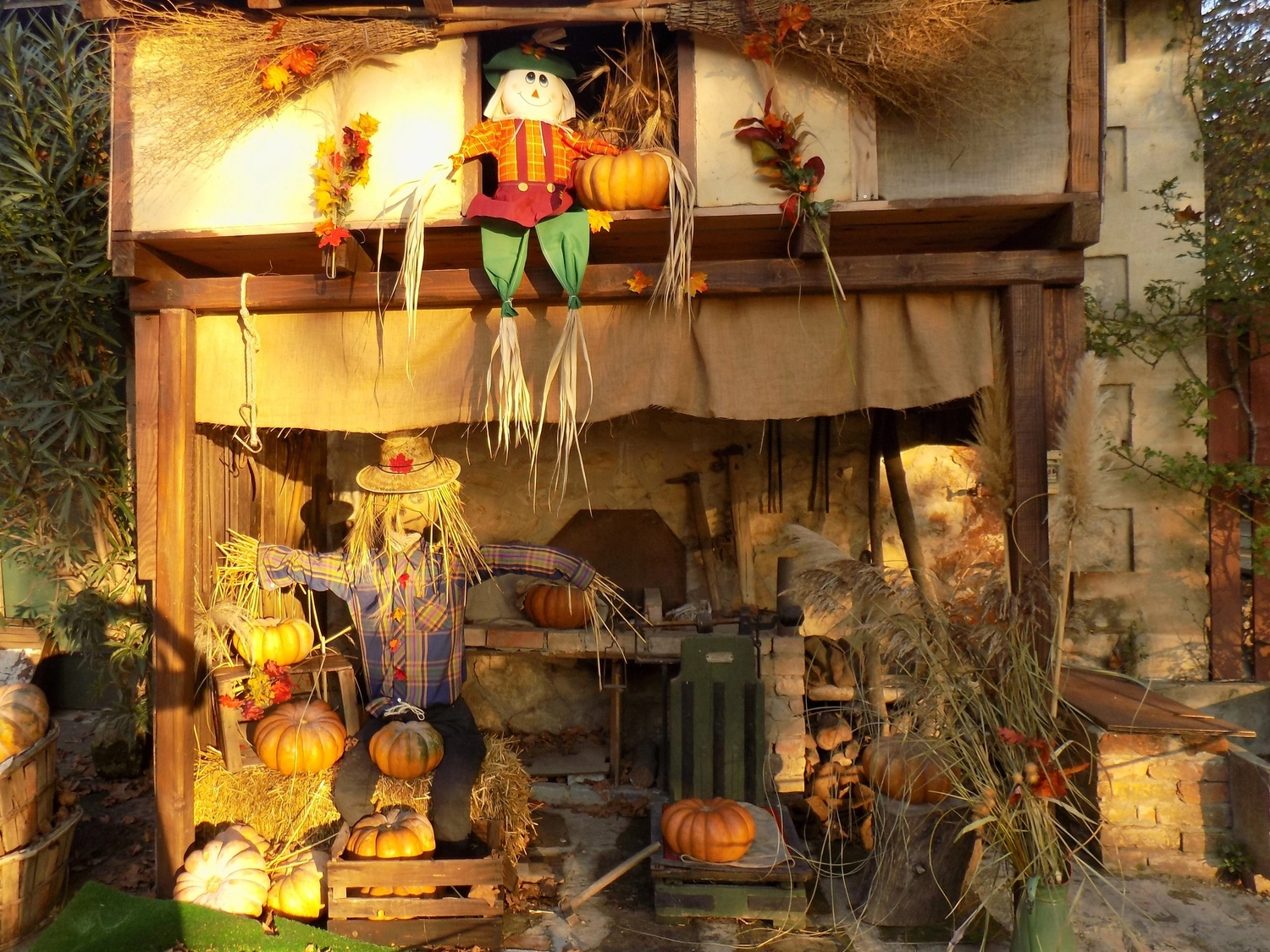
The Vieux-Mas is more than a visit: it is French Provence coming to life, telling its story through every stone, animal and passionate craftsman. ▶️ More information and reservations on their website by clicking here

French Provence, known for its lavender fields and delicious aromas, is home to a unique and authentically charming corner: the distillerie Mas en Provence. Located in Bellegarde, this shipyard not only opens its doors to the public but also invites us to a sensory and educational journey through its essential oil distillation process. From a leisurely stroll through the grounds infused with the sweet perfume of lavender and immortelle to a detailed tour of the distillery and its traditional steam still, visitors are immersed in an unparalleled olfactory experience.
Gaël, distiller of the Mas, not only shares the secrets of the art of distillation but also offers an interactive and participatory experience in front of the still in full operation. The experience is complemented by a film that recounts the seasons and life cycles of Mas, as well as an introduction to the identification and use of essential oils. With the warmth of summer, distillations are celebrated, and visitors can witness the magical extraction of the coveted organic essential oils.
This sensory, visual and educational journey promises a unique immersion in the rich and fragrant tradition of Provence.
▶️ More information on the website here

The Mas des Tourelles offers you an authentic and rich expedition through time, immersing yourself in the viticulture and oenological practices of the Roman era. Located in the heart of a historically rich region, the walk through its reconstructed Roman vineyard and garden reveals trellises, pergolas and olive trees, on a path that takes us to ancient amphorae making workshops.
A film inside the only reconstituted Gallo-Roman winery in the world immerses us in the traditional Roman vendanges, showing with precision and beauty the art of experimental archaeology. Subsequently, a renovated exhibition illuminates about the Roman roads and the wine culture of the time, providing an informative and visually attractive perspective.
The experience is completed with a visit to the reconstituted atelier de parfumeur, evidencing the importance of olive oil in Roman culture, and culminates with a tasting of “vins archéologiques romains” (Roman archaeological wines), allowing visitors to savor history, and transport their palates to a distant time and place.
More information on their website by clicking here

Located near the charming town of Saint-Rémy-de-Provence , the experience of visiting the archaeological site Les Antiques and Glanum immerses visitors in a breathtaking journey through time, revealing a fascinating insight into life in French Provence during Greco-Roman times. The archaeological ensemble Les Antiques, with its majestic Mausoleum and Arc de Triomphe, serves as a surprising prelude to the ancient settlement of Glanum, providing a glimpse into the architectural grandeur of the time.
In Glanum, one can walk among the ruins of ancient structures, such as temples, baths and dwellings, which silently tell us the stories of its ancient inhabitants. As you explore these relics, it’s almost as if echoes of Roman daily life whisper around you, allowing you a glimpse into ancient customs, beliefs, and lifestyles. For families looking for an educational and enriching experience, this place offers a wonderful opportunity to introduce the youngest to the rich and diverse history of French Provence, while marveling at the skill and artistry of past civilizations.
By merging with the lush nature surrounding the ruins, the setting allows visitors to not only absorb history, but also appreciate the timeless beauty of Provence, thus connecting past and present in a truly unforgettable experience. The visit to the archaeological site Les Antiques and Glanum is not simply a walk through history, but also an enrichment of the soul, reminding us of the complexity and beauty of the human legacy in the impressive fabric of French Provence.
Delving into the serenity and rich history of French Provence as a family is an unparalleled experience, and the Mill of Daudet offers just that. This emblematic mill, immortalized in the narratives of Alphonse Daudet, stands not only as a monument of French literature, but also as a pillar of Provençal culture and tradition. When visiting with loved ones, the gentle breezes caressing the lavender fields are intertwined with the stories and anecdotes told in “Lettres de mon moulin”, providing an authentic and educational experience for all ages.
Imagine strolling through the same landscapes that once inspired Daudet, while sharing and creating precious memories with your family in the heart of French Provence. The guided tour of the mill allows you to discover, in a playful and informative way, the life and work of the author, his influence and his inspirations. This site, steeped in history and amidst a stunning natural landscape, becomes the perfect setting for both children and adults to explore, learn and delight in the beauty and calm that this corner of French Provence has to offer. Each step through this terrain is a journey through time, an exploration of history and an enchanting experience in the lands that have fascinated generations of readers and travelers.

Golf du Domaine de Manville , located in the picturesque Alpilles countryside, is much more than a golf course; it is an experience that celebrates sustainability and harmony with nature. As the first French golf course to obtain the prestigious Ecocert certification, this venue offers a unique golfing experience in a naturally beautiful setting.
Surrounded by olive groves, stone walls and the imposing Alpilles mountains, the course is not only a challenge for golfers, but also a peaceful stroll among the local flora and fauna. Here, the presence of canards, oies sauvages (wild geese) and grenouilles protégées (protected frogs) adds a charming touch to the game.
The design of the course, with its geometric shapes reminiscent of plots of land, blends perfectly into the Provençal landscape. From the majestic Château des Baux , which towers over the course, to the stone walls supporting the bunkers, every detail has been carefully thought out to complement the beauty of the surroundings.
The golf course was developed over four years, respecting and enhancing the local landscape. This ecological approach is reflected in every aspect of the course, from biodiversity conservation to sustainable resource management.
To play at the Golf du Domaine de Manville is to enjoy a meticulously maintained course and to take advantage of the mild Mediterranean climate that accompanies you all year round. This is a unique opportunity for golf lovers to practice their favorite sport in a setting that not only respects, but celebrates the natural environment and culture of the Les Baux de Provence region.
Top Activities in Les-Baux-de-Provence: The Map
In France, family holidays are synonymous with fun and adventure.
Around all the villages you will always find a huge amount of places to enjoy with the little ones and everything is really prepared for a great time. Near this charming village, you’ll discover a plethora of exciting activities to enjoy with them. From exploring fascinating castles and quaint villages to immersing yourself in fun-filled theme and water parks, there are endless options to entertain the whole family. Here is a list of activities to enjoy with the family and places nearby, which I selected for you.
I hope you enjoy them as much as I do.
Discover my selection of accommodation near Baux de Provence
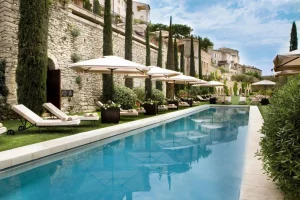
Do you want to know more about Baux de Provence?

Visit Les Baux-de-Provence: Discover my guide of must-do family activities
Your Essential Itinerary to Visit Les Baux-de-Provence In this article, we will delve into the many reasons why a visit to Les Baux de Provence offers a unique adventure, seamlessly combining history, culture and natural beauty in a picturesque setting. Located in the heart of French Provence, Les Baux de Provence entices travelers with its rich tapestry of historical significance, with ancient ruins offering a glimpse into its past. In addition, the…
Frequently Asked Questions about les-Baux-de-Provence
Les Baux-de-Provence, with its picturesque charm and rich cultural heritage, offers a wealth of treasures to take home. Strolling through its ancient streets, you will discover charming stores selling extra virgin olive oil, famous for its exceptional quality and distinctive flavor, a true reflection of the Provençal terroir.
The region, also known for its vineyards, invites you to taste and take home local wines, which capture the subtle nuances of the climate and soil of the Alpilles. Local craftsmanship, steeped in the soul of Provence, offers a variety of unique objects, from delicate ceramics to works of art inspired by the surrounding nature and culture. Lavender products, emblematic of Provence, are another wonder to bring back, whether it’s scented soaps, soothing essential oils or sachets that give off a soft, relaxing fragrance. For those who want to take a bit of Provençal cuisine home with them, local spices and herbs are a perfect choice. They capture the essence of regional gastronomy and are ideal for recreating the flavors of Provence at home.
Finally, to keep a tangible souvenir of your visit, postcards and photographs of the magnificent landscapes and picturesque moments of Les Baux-de-Provence are perfect choices. They are the perfect way to keep a piece of this sunny and charming land with you.
Les-Baux-de-Provence can be reached by car from the nearby cities of Avignon or Marseille, it is also accessible by local bus services.
Yes, there are several accommodation options, from luxury hotels to cheaper accommodation such as bed and breakfasts and holiday rentals. In the region there is a great offer of unusual accommodations as well as luxury spa hotels where you can relax .
Spring (April to June) and autumn (September and October) are considered the best times to visit Baux-de-Provence , due to the pleasant weather and fewer tourists compared to summer.
Yes, the Carrieres de Lumieres is a famous attraction where works of art are projected in old limestone quarries, creating an immersive visual and sound experience. Click here for more information
Yes, children can enjoy exploring the ruins of the castle, participating in workshops and educational activities offered at different times of the year, among many other activities offered by the region.
Les-Baux-de-Provence ofrece una gran variedad de opciones gastronómicas , desde cocina tradicional provenzal en pequeños bistrós hasta restaurantes gourmet.
Places like Arles, Avignon and Saint-Rémy-de-Provence , all with rich history and heritage, are located relatively close.
Les Baux de Provence: A Family Destination with History and Adventure
In conclusion, Les Baux de Provence offers a wide range of activities for the whole family, from exploring the medieval castle to experiencing the multimedia art show Carrières de Lumières. Visitors can also enjoy outdoor adventures such as hiking and picnics in the surrounding natural landscape. With its rich history and diverse attractions, Les Baux de Provence is an ideal destination for families seeking both cultural and outdoor experiences.

Dear reader, I hope you have enjoyed reading this post and, above all, that it has been useful for planning your getaway or family holiday in France . I would love to hear your thoughts, questions, and experiences related to the content you’ve just read. Comments are an opportunity for us all to share ideas and learn from each other. So I encourage you to share your thoughts and comments below. Whether it’s your first time commenting on the blog or you’re a regular reader, your contribution is valuable and appreciated. I can’t wait to read what you have to say. Let’s start a conversation here below and make the post richer! Thank you for being part of this community and I look forward to seeing your comments soon! Warm regards
What do you think of my article ?
Baux-de-Provence travel guide

Visit Baux-de-Provence (Provence-Alpes-Côte d'Azur, France)
Les Baux-de-Provence is a village 20 kilometres south of Avignon in Provence and within the Regional Natural Park of the Alpilles. Said to be the most visited village in France, apparently two million visitors a year crowd on to the streets of Baux-de-Provence. It is listed among the ' most beautiful villages of France ', which will come as no surprise if you have ever visited and certainly deserves the accolade.
The village has a long and colourful history, with traces of occupation dating back some 8000 years. Little is known of the prehistoric occupation but in more recent centuries Baux was the scene of many troubles during the Middle Ages, resulting in Cardinal Richelieu ordering that the castle be demolished as a punishment for harbouring protestant insurgents.
Exploring Les Baux-de-Provence
France This Way review: as well as the village - listed among our top five villages in Provence - a major highlight of Baux-de-Provence is its great location - nestling in the Alpilles mountains it has great views across the plains that stretch to the south and on to the Mediterranean beyond, as well as the attractive rocky landscape of the Alpilles.
There is also a very impressive castle and the Carrières de Lumières to visit in the village, so allow a full day for a visit.

Les Baux-de-Provence is a typical ' Provence perched village ' and the drive up to the village is very scenic. The village is pedestrianised: on arriving you can park just outside the northern end of the village. You enter Baux-de-Provence through the Porte Mage gate, a 19th century gateway through the village ramparts.
Baux-de-Provence tourist office is just inside the entrance to the village, in a building dating from 1499 and originally the centre for legal affairs in the village, called the King's House. Ask for the plan of the village in the tourist office before exploring. The village that you visit today largely dates from the 15th-16th centuries.
There is plenty to see in the village itself including the parts of the ramparts that are still in place, small chapels and the Porte d'Eyguieres which is the original entrance into the town: it was the only entrance until the second half of the 19th century, and is also the starting point for the path that follows around the outside of the ramparts.
The most important museum in Les Baux-de-Provence is on the right about 100 metres after you enter the village: the Musée des Santons exhibits numerous figurines made in Naples in the 17th and 18th century that represent traditional Provencal costumes and a Christmas crib. The building which contains the museum has had many uses over the centuries, including being the Town Hall for the village for many years.
Although we mention some of the individual historic monuments that you will see in Les Baux-de-Provence, to be honest even if you knew nothing at all about any of them you would still love the village just because of its character and the great viewpoints...still, better to be informed about the history
Continue along the Rue de la Calade passed the Porte d'Eyguieres and after a while you reach the centre of the village, with two small squares, the Church of Saint-Vincent and the Chapel of the Penitents Blancs.
The 12th century Church of Saint-Vincent is in roman style but also has a renaissance extension added in the 17th century and modern stained glass windows installed in 1960. The 17th century chapel contains frescoes added in 1974 and represents a traditional Christmas for the Provençal shepherds.

Also here on the Place François de Herain you can see a lovely 16th century town house called the Hôtel de Porcelet with leaded windows: inside you can see a room decorated with 17th century frescoes as well as the Yves Brayer Museum. If you have bought a ticket which allows entry to the Carrieres and the Castle, entrance to this museum is also included in the price.
Along the Rue de l'Eglise and passing the Place Prince Rainier III de Monaco you reach one of the most curious monuments in Les Baux-de-Provence, a large renaissance style window that is all that remains of a 16th century villa, and bears the inscription "Post Tenebras Lux" ("After Darkness, Light"). Opposite you can see the Hotel de Manville, another very impressive 16th century townhouse.
From here you can follow the road that continues towards the castle that stands on the hill above Les Baux-de-Provence.
En route through the village you also pass a couple of attractive viewpoints - the best is perhaps the one from the Place Saint-Vincent next to the Penitents Chapel - although the very best views are from inside the grounds of the castle. You will also see a great deal of cafes and gift shops, an unavoidable consequence of the enormous popularity of the village.
Advertisement
Chateau of Baux-de-Provence
The ruined castle - the Chateau of Baux-de-Provence - sits on top of a rocky outcrop above the village and is one of the most popular attractions in Provence. You don't realise how large the castle grounds are until you enter, but the chateau occupies about seven hectares - it is as large as the village - and there are lots of ruined walls and towers to evoke the history of the place, as well as a small 12th century chapel.
You enter the grounds of the castle compound via the 14th century Tour-de-Brau and explore the ruins of the castle, then relax and enjoy the views that stretch as far as the Mediterranean. There are also a series of recreations of medieval weapons and siege machines that are popular with children.
See the Chateau of Baux-de-Provence for details.
Les Baux-de-Provence also has a couple of other small museums of passing interest. At the entrance to the castle you can visit the Museum of History of Les Baux-de-Provence while the Fondation Louis Jou (in Hotel Brion on Grande Rue) features medieval books and engravings by such illustrious names as Durer and Goya.

Attractions nearby
After exploring the village and castle we suggest you follow the road that leaves Baux-de-Provence from the north towards Maillane (it's not far, an easy walk) to reach the Carrieres de Lumiere (also known as the Cathédrale d'Images). The Carrieres de Lumieres are an ancient quarry that is now used for regular exhibitions with artworks projected against the quarry walls and music, a real spectacle of light and sound.
The spectacle changes each year: we have visited on two different occasions and both were very memorable. See Carrières de Lumières in Baux-de-Provence for information.
Keep walking just a short distance beyond the Carrieres de Lumiere and there is another exceptional viewpoint across the valley.
You can find more travel ideas in the Bouches-du-Rhone guide and the Provence guide .
Photos of Baux-de-Provence
Click any picture to start the gallery

Arrange a visit to Baux-de-Provence
Book hotels, car hire and flights.
- Book a visit
Hotels in Baux-de-Provence
Booking.com: best prices
For great prices on car hire throughout France and Corsica please visit our recommended partner at RentalCars.com
Reserve excursions
Map of baux-de-provence and places nearby, visit near baux-de-provence with france this way reviews.

Château des Baux-de-Provence
The Château des Baux-de-Provence is a remarkable ruined castle above the village of Les Baux-de-Provence, with amazing views across the Alpilles

Carrières de Lumières in Baux-de-Provence
The Carrieres de Lumieres is a sound and light spectacle based around famous artists works, in the village of Les Baux-de-Provence

Saint-Remy-de-Provence
The historic monuments here are a testament to St-Remy-de-Provence's claim to be one of the oldest towns in France, and the time that Van Gogh spent here is also celebrated

Fontvieille
This town near Arles has a small historic centre to explore when you are passing

Tarascon is a pleasant town with a substantial castle on the Rhone river, well placed for exploring the region around Arles and Avignon

Chateau de Tarascon
The Chateau de Tarascon is an imposing 15th century castle on the banks of the Rhone
... or see ALL recommended places to visit in Bouches-du-Rhone
Tourist classifications for Baux-de-Provence
Baux-de-Provence is classified as a one of the most beautiful village in France (plus beau villages)
Address: Baux-de-Provence, Saint-Rémy-de-Provence, Arles, Provence, 13520, France || GPS coordinates: latitude 43.743, longitude 4.7948
Plan your visit to Baux-de-Provence, Bouches-du-Rhone
Sightseeing & tourist attractions to visit nearby.
- Alpilles: regional natural parc (3 km)
- Glanum: national monument (6 km)
- Abbaye Notre Dame de Montmajour (Arles): religious monument (11 km)
- Montmajour Abbey: national monument (11 km)
- Jardin aquatique « Aux fleurs de l'eau: remarkable garden (12 km)
- Jardin de l'Alchimiste: remarkable garden (13 km)
- Beaucaire : recommended detour (14 km)
- Arles : secteur sauvegarde (15 km)
- Arles église St Honorat (monuments on French pilgrim routes) : heritage site (15 km)
- Roman Arles : heritage site (15 km)
- Eglise et cloitres de Saint Trophime, Eglise de Saint-Honorat des Alycamps (Arles): religious monument (15 km)
- Avignon : secteur sauvegarde (22 km)
The French version of this page is at Baux-de-Provence (Francais)
French Places
We can help you visit any town, village or region of France...
Popular & Useful
① Ideas & inspiration ② Maps of France ③ Explore by region ④ Route planner ⑤ Places (by dept.)
France This Way copyright 2006 - 2024
- Cookies & privacy
- Index of places
Our guests book worry-free at Only Provence. Should unforeseen circumstances impact your travel, we guarantee to work closely with you and the property owner to find a solution.
At Only Provence, we guarantee the best price for your property.
You can view our booking Terms and Conditions and also see our Travel Tips for more information.
We’re here to help make your Provence holiday a reality, so contact us should you have any questions.

Villas to Rent South of France
The Perfect Les Baux de Provence Tourist Itinerary
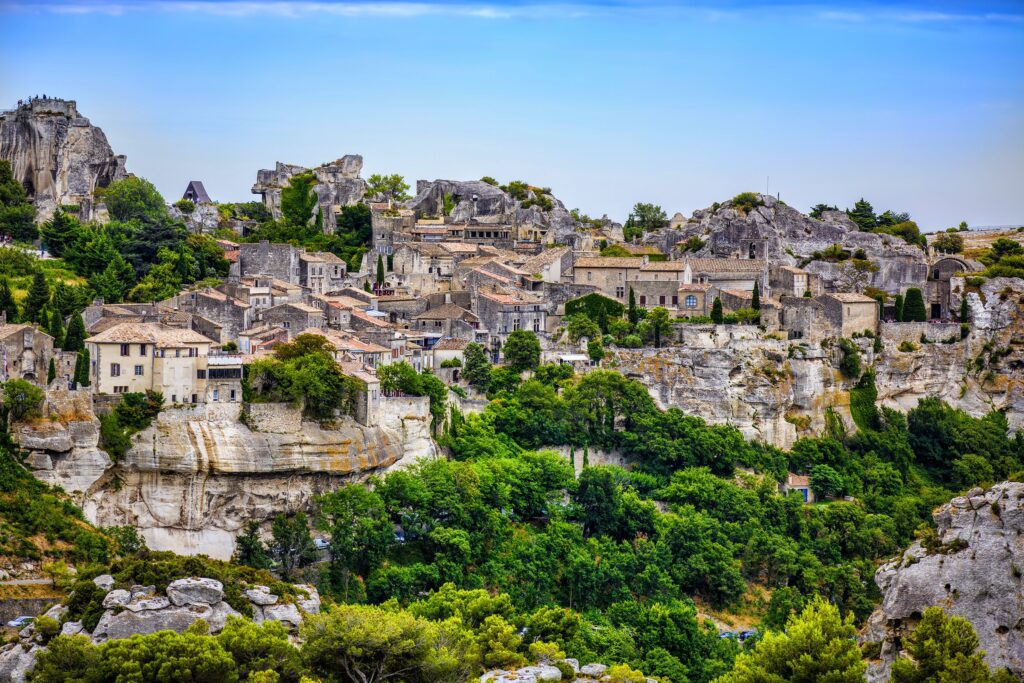
In the heart of the Alpilles mountains, set atop a rocky outcrop, Les Baux is a crowned jewel in Inland Provence with its historical castle ruins overlooking the plains to the south.
Only Provence has had years experience helping to plan luxury holidays for families and friends who want to rent luxury villas near Les Baux de Provence; this month we thought it might be helpful to share “The Perfect Les Baux de Provence Tourist Itinerary.” Whether you are making your home base in Les Baux itself, or staying in the surrounding villages of Eygalieres , Paradou , St Rémy or in the Luberon , these hand-picked activities will round out a beautiful holiday itinerary.
What to do in Les Baux de Provence
An area steeped in history.
It is believed that human settlement on the site of Les Baux dates back to 6000 BC when it used to serve as a Celtic oppidum (a large fortified Iron Age settlement or town). An exciting part of its “later” history occurred during the Middle Ages when Les Baux was the seat of the powerful Lords of Baux. It’s name refers to its site in the Provençal language– a bauç is a rocky spur .
Les Baux covers an area of 7 hectares and is one of the most impressive locations in France. When visiting, you will discover breathtaking panoramic views of Provence landscapes all the way to Aix , Arles and beyond. Discover the history of the Lords of Les Baux and their mediaeval fortress, the Sarrazine and Paravelle Towers, the dovecote, the castle chapel and the Chapel of St. Blaise, the former Quiqueran Hospital.
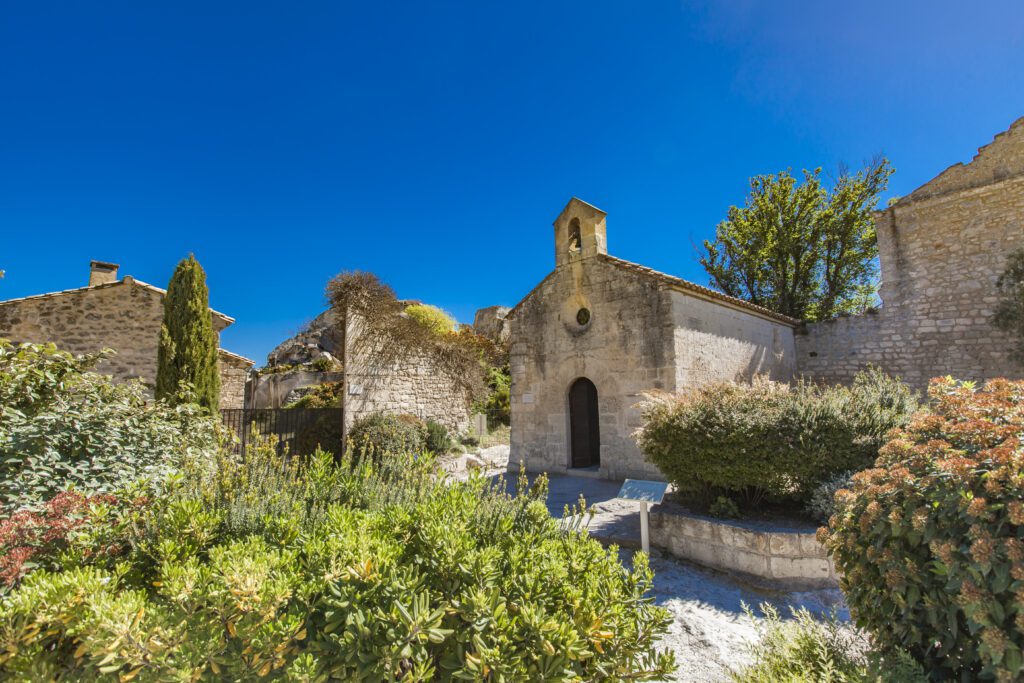
Several special events for all ages are organized in the summertime.
Château des Baux de Provence 13520 Les Baux de Provence Tel: (0)4 90 54 55 56 Open 7 days a week, from 9:30 to 7PM in April, May and June, from 9 :30 to 8PM in July and August [email protected]
The village can be extremely busy in the summer months so plan your day wisely, visiting earlier in the morning before is gets too hot or when most tourist arrive .
Art, Light & Sound Show
Now a highly popular site in Provence, the Carrières des Lumières are located at the foot of the town of Les Baux-de-Provence , in the heart of the Alpilles, in a truly mysterious area called the Val d’Enfer. Since 2012 they have been hosting digital, immersive and contemporary exhibitions that are fun and interesting for all ages.
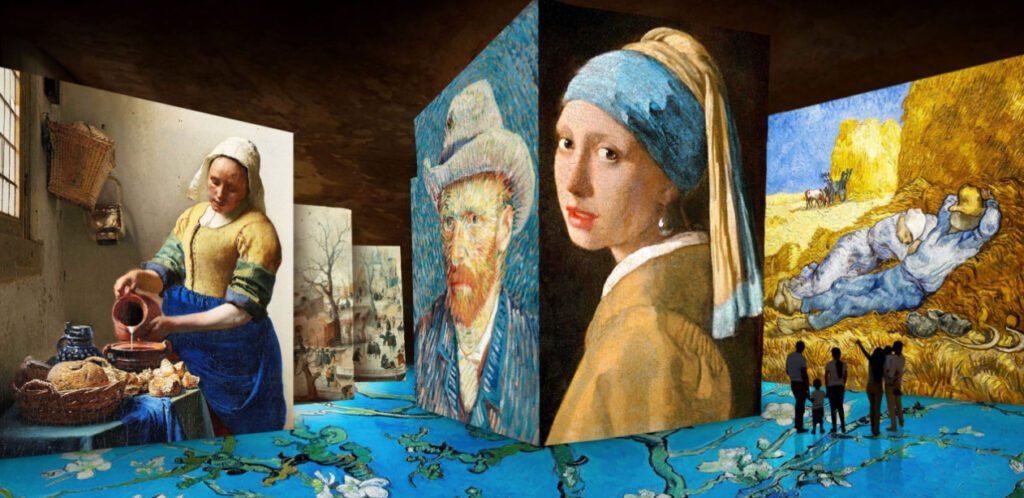
Saint Rémy de Provence
Situated in the heart of the Alpilles, Saint Rémy is only a few minutes drive from Les Baux and a must-see when visiting the region. With a rich history including a Roman village and Van Gogh’s asylum , St-Remy is an attraction for summer tourists from the world over and one of the most popular destinations in Inland Provence.
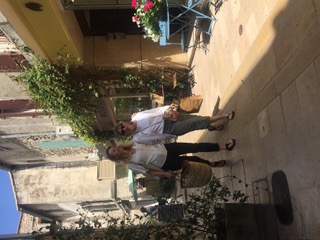
Saint Rémy de Provence is a historic village built on one of the oldest archeological sites in Europe. Visitors can see fossils among the remains of the “Comptoir de Glanum” which was founded in the 3rd century BC, before control passed to the Romans under Julius Cesar. The ruins have seen the passing of several civilizations and you can visit the “Grands Thermes”, the long residential avenue, the temple and the natural spring of a true gallo-roman city, dating from 30 to 10 years before Christ.
If you love walking ancient streets through the village, perusing boutiques and taking in the beautiful village architecture, you will be right at home. Saint Remy has over 40 restaurants –whether you want to dine at a bistro, or a finer dining establishment, good food is never far.
Market Day in Saint Remy de Provence

Every Wednesday morning, you can experience one of the largest and most beautiful Provencal markets in the region . It has everything you’re looking for, from fabrics and clothing, to ceramics, flowers, fresh produce and prepared foods.
Walk in Van Gogh’s footsteps- Only a few minutes from Les Baux
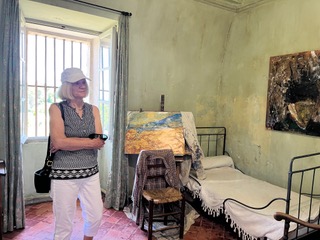
The Centre d’Art Presence in St-Rémy-de-Provence is dedicated to celebrating the life of Vincent Van Gogh. A landmark for art lovers, the center is housed in the historic Hotel Estrine and features letters from the artist to his brother, Theo, as well as displays of contemporary art and a permanent collection of Albert Gleize’s works. It’s only a few minute’s drive from Les Baux or walking distance from Saint Rémy.
Where to Dine
Indulge in a Michelin Star Restaurant
While there are many great restaurants to choose in the region of Saint Rémy and Les Baux (we have our favorites listed in our Insider’s Guide) , why not treat yourself to a truly memorable gastronomic experience by reserving at the famous L’Oustau de Baumanière.
L’OUSTAU DE BAUMANIÈRE Relais & Châteaux***** Mas Baumanière, 13520 Les Baux-de-Provence Tel +33 (0)4 90 54 33 07 Open 7 days a week from April to October
Visit the Local Wineries
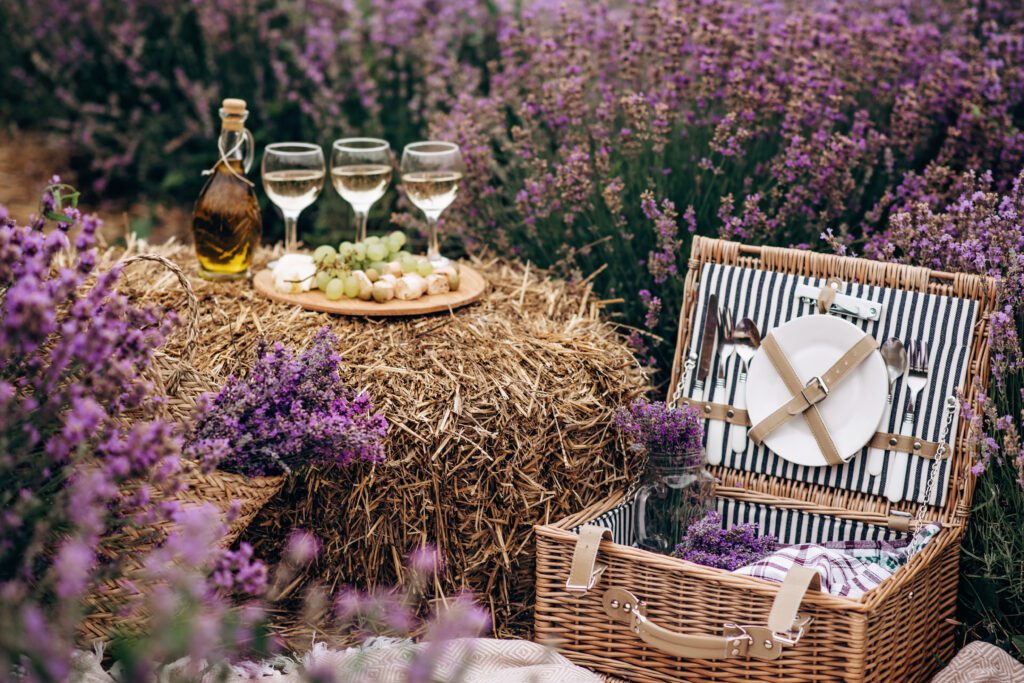
There are many fantastic wineries, large and small nestled in the region surrounding Les Baux. We have a short list of a few of our favorite spots for tasting, many of which specialize in biodynamic wine making. Some of them you can simply walk in and have free tastings, others offer hour + long experiences for a fee if you book in advance. For the perfect afternoon, why not gather a basket of goodies from the market and your favorite bottle from a local tasting and enjoy a picnic!
Click here for more info on wine tasting in the Alpilles.
Château Romanin
Nestled in the heart of a unique natural setting, Château Romanin has been using biodynamic techniques since 1988, when it was created by Jean-Pierre Peyraud (investor) and Jean-André Charial (owner of Relais & Château L’Oustau de Baumanière).
- Visit of the Cathedral Wine Cellar
- 360° panoramic view of Mont Ventoux, the Alpilles, Avignon and Saint Rémy de Provence
- Explanation of the terroir and culture certified in biodynamics
- 19 € a person – 1 hour
Domaine des Lauzieres
Since 1992 the Domaine de Lauzières has been involved in organic farming, and more recently in biodynamics. Lauzières was founded in the 16th century, when the Huguenots took refuge in the Alpilles. 0 4 90 47 62 88
Olive Tasting

They say that in the Vallée des Baux de Provence, the olive tree is king. Make sure you reserve an hour or two to stop at a local olive producer to taste (and buy) some of the region’s best olive oil. One of our favorites is Le Moulin de Castelas.
Apart from the above, there are of course the picturesque villages of Eygalières, Maussane and Paradou, to explore, all within 20 mins or so from Les Baux. Needless to say, you can fill your Les Baux itinerary very easily– the hardest part will be picking fro all there is to do!
For a complete list of all things to see and do in Provence, download our Insider’s Guide to Provence .
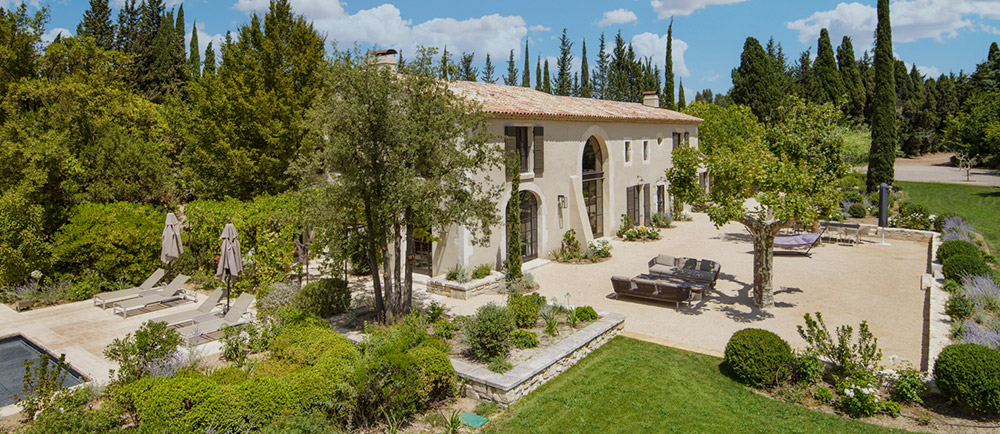
Luxury Villa Rentals in Les Baux de Provence, France
As the luxury property rental market has exploded worldwide, renting a luxury villa has become the preferred choice for accommodations in Provence. Only Provence has the largest selection of luxury properties in the region.
Benefits of Luxury Villa Rentals
One of the many benefits of renting a luxury villa is having a genuinely private yet authentic experience in Provence, complete with in-home chef services.
Below are some of the few great benefits of a luxury villa over other traditional accommodation options.
- Personalized experiences such as private chefs and organized tours and activities;
- Privacy and exclusivity;
- A dedicated villa manager and staff;
- A sense of feeling at home while staying in a private luxury villa;
- Private luxury villas are ideal for groups of families or friends traveling together.
A distinct collection of luxury villa rentals and real estate for sale in the South of France
- offering all comforts and amenities - pool, housekeeping, and chef services.
© 2024 Only Provence.
Contact Us:
- USA: +1 (404) 806-2278
- Europe: +44 (0)2030 965433
- [email protected]
- List Your Property with Us
- Privacy Policy

Luxury Rental Villas in Provence:
- Search By Name
- Villas Near Aix en Provence
- Villas Near Avignon
- Villas Near Luberon
- Villas Near Alpilles
- Large Villas & Chateaux
Villages in Provence:
- Aix en Provence
- Les Baux de Provence
- L’Isle sur la Sorgue
- Paradou & Maussane
- Saint Rémy de Provence
Chef Services in Provence:
- Professional Private Chefs
- Cooking Courses
Experience Provence:
- Tours & More in Provence
- Wineries in Provence
- Activities for Kids
- Outdoor Market Schedule
- Groups, Retreats & Team Building
- Hiking, Biking and Golfing
- Wellness & Spa
- Festivals of Provence
- Provence in Bloom

Only Provence co-founder Lydia Dean writes about their experiences raising a family, building a business in Provence, and later combining the love of travel with giving back in " Jumping the Picket Fence ”. In 2021, she published “ Light Through the Cracks ,” a continuation of her journey, much of which has been based in Provence. Both books are available Amazon , Amazon.uk , and Amazon.Fr .

- Château des Baux-de-Provence
- Things to do
- Culture and heritage
- Monuments in Provence-Alpes-Côte d’Azur
The Château des Baux-de-Provence is an old fortified castle perched on the Alpilles between Maussane and Saint-Rémy-de-Provence. Every year, this tourist site, classified as a Historical Monument , attracts a large number of visitors. This place, steeped in history, offers a real time travel. Walking on the remains of the castle, carved in the rock, visitors can easily enjoy a route back to the medieval period.
The story of the Château des Baux
Les Beaux-de-Provence, located in the Alpilles massif , has always been a strategic place. Situated on a high point, at the crossroads of several roads, it was an ideal observation post. As early as prehistoric times, men discovered the potential of this place and exploited it. A cave housing an 8,000-year-old grave bears witness to this.
The Celts laid the first stones to create a village. It was then enough to bend down to collect the materials necessary for the construction of stone houses.
At the time when the Romans reigned over Gaul, the population of the village decreased. Thanks to the peace brought by the Roman Empire, it was no longer necessary to live in an easily defensible place. The inhabitants were attracted by Arles, a large city not far away.
The Château des Baux-de-Provence was built in the 11th century for the Lords of Baux, one of the most powerful families of lower Provence in medieval times. Les Baux was struck several times by local wars, including the Baussenque wars between 1145 and 1162 because of a conflict for the succession of the county of Provence. The fortress suffered many assaults and fights during the following decades. Several lords wanted to control this stronghold from which one could see, when the weather was clement, as far as the Mediterranean Sea. In the 13th century, 3,000 inhabitants lived in the village of Les Baux-de-Provence.
In the 15th century, the line of the Lords of Baux died out with the death of Princess Alix. The barons of the House of the Counts of Provence took control of the village. During this period, life was good in Les Baux-de-Provence until the land was put under royal tutelage when Provence was attached to the Kingdom of France in 1486.
Protestants came to take refuge in the fortress of Les Baux during the religious wars that took place in France at the end of the 16th century. The Manville family, who then managed the place, was regarded with distrust by the King’s representatives. Cardinal Richelieu was displeased and decided to destroy this city so stubbornly rebellious. He besieged the city for 27 days and had the fortress dismantled in 1633. Once the ramparts were knocked down , the citadel was forced to surrender definitively to royal power.
Since 1642, the Lord of Baux is none other than the Prince of Monaco. Louis XIII gave the marquisate of Les Baux to the first Prince, Honoré II Grimaldi.
Voir cette publication sur Instagram Une publication partagée par Navier-Stokes (@mynavierstokes) le 4 Févr. 2020 à 1 :51 PST
Voir cette publication sur Instagram Une publication partagée par Les n'explorateurs 🗺 (@lesnexplorateurs) le 25 Févr. 2020 à 9 :48 PST
Remarkable ruins and vestiges
The Château des Baux-de-Provence has incredible testimonies of the past : the Saracen tower, troglodytic houses, the castle chapel, the “trou aux lièvres” (hares’ burrow), the oven house, the cistern, the dovecote, the reconstitution of siege engines, etc.
The particularity of the fortified castle of Les Baux-de-Provence is that it has a large troglodyte part . Whole sections of walls have been carved out of the limestone rock of the Alpilles massif, as if the castle had been sculpted in the mountains. It is also one of the oldest castles in Europe. Writings already evoked the presence of fortifications in 975.
The keep , built in the 13th century, is one of the best-preserved parts of the castle. This important vestige of the military architecture of the place was the last rampart of this fortress, once impregnable.
The farmyards , located at the foot of the castle, are true witnesses of daily life in medieval times. The inhabitants of the seigneurial residences mingled with the maids who baked bread in the oven house and the guards who lived in this part of the castle. Further down, the second courtyard was lined with houses and welcomed the peasants and craftsmen who worked there.
A breathtaking view of the Alpilles
The Château des Baux is perched on one of the last foothills of the Alpilles massif. The view from the monument is breathtaking. With one look, visitors embrace the Camargue and Provence that extend under their feet. This wonderful panorama allows you to discover the typical landscapes of the region, with olive groves and vineyards, the hills between which the red earth of the bauxite quarries is hidden, the meadows where herds of merino sheep graze, etc.
Voir cette publication sur Instagram Une publication partagée par Louise Mchd (@loulou_poney) le 9 Mars 2020 à 11 :42 PDT
Voir cette publication sur Instagram Une publication partagée par WILL SHARP (@will.info) le 12 Juin 2019 à 5 :05 PDT
Les Baux de Provence
Les Baux-de-Provence is one of the most beautiful villages in France. Its small cobbled streets, its shady squares full of charm and its incredible architectural heritage attract many visitors every year. In the village, the strictly pedestrian traffic makes it possible to discover the various buildings in complete tranquility. Numerous monuments are to be admired and visited: Hôtel de Manville, pavilion of Queen Jeanne, chapel of Saint-Blaise, Saint-Vincent church, etc.
Prepare your visit
The Château des Baux-de-Provence is open 365 days a year. The schedule varies according to the seasons:
- January to February: 10:00 a.m. to 5:00 p.m.
- March: 9:30 a.m. to 6:00 p.m.
- April to June: 9:00 a.m. to 7:00 p.m.
- July and August: 9:00 a.m. – 8:00 p.m.
- September: 9:00 a.m. to 7:00 p.m.
- October: 9:30 a.m. to 6:00 p.m.
- November to December: 10:00 a.m. to 5:00 p.m.
Audio guides are available for free at the site’s reception desk in French, English, German, Italian, Spanish, Dutch, Japanese, Chinese, Russian, and Portuguese.
Booklets for children from 7 to 12 years old are also available for free at the entrance. They allow them to discover the places and history of the Château des Baux in a playful way.
The official application of the Château des Baux-de-Provence offers visitors the opportunity to discover the site while enjoying a guided tour, complete with images and reconstitutions of the fortress.
Address: 13 520 Les Baux-de-Provence
Website: https://www.chateau-baux-provence.com/
Sdlection of monuments in Bouches-du-Rhône :
- Arles Amphitheater
- Silvacane Abbey
- Montmajour Abbey
- Palais Longchamp
- Monuments in Bouches-du-Rhône
- TO & Travel Agents

Get our tips in your inbox! Sign up
Travel France Blog
All You Need to Visit France
Best Things To Do in Les-Baux-de-Provence, South of France
A few minutes drive from Arles is Les Baux-de-Provence. The village that concentrates all the charms of the villages of Provence in one.
Narrow streets, terraces, markets, handicrafts, and good weather are synonymous with this medieval village that thousands of tourists visit yearly.
Les Baux de Provence is nestled on a rocky plateau with unparalleled heritage, with 22 protected architectural monuments that give priceless historical value to this village.
The castle is the main attraction of the town, a vast fortification with 360-degree views that served as protection during multiple wars.
However, Les Baux de Provence has much more to offer. Let’s go! Come with me to discover the attractions of this beautiful medieval village.
- Book your travel insurance with a 5% discount.
Castle of Les Baux de Provence
On the south side of the Alpilles, perched on the top of the rock, are the ruins of what was once the majestic castle of the Lords of Baux.
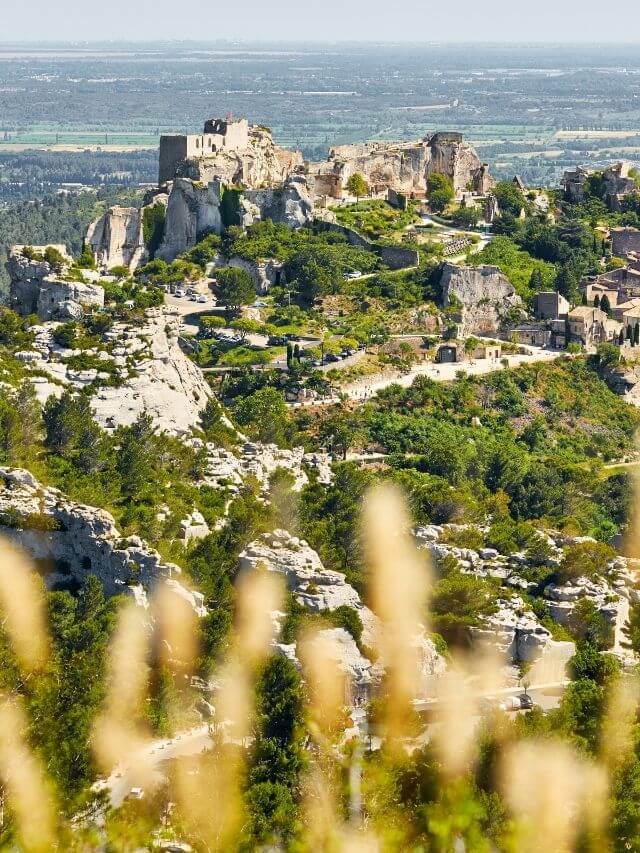
Covering an area of 7 hectares, this site was the political and cultural epicenter of Les Baux de Provence between the 11th and 17th centuries when Richelieu had it demolished.
The Lords of Baux built the castle in the 11th century and was attacked several times, especially during the Baussenque wars.
This caused some modifications in the castle, but not too many since this construction was of great strength with great walls that some points reached 40 meters high and made this place a difficult fortress to besiege.
Although today only remnants remain, it is possible to walk around and imagine what this fort was once like.
We can even see parts of the castle that are preserved almost intact as the keep of the thirteenth century and the remains of a chapel.
The entrance to the site is priced between 8 and 10 euros, more than reasonable considering the beautiful place where we are.
During the visit, you’ll have an audio guide that will tell you in detail the castle’s history and will take you back to the age of knights and minstrels.
However, it is not only the history that attracts the attention of this place but the beautiful 360-degree panoramic views that we can get from the top of the rock where this castle is crowned.
Carrières de Lumières
In the basement of the Villa is the best-kept treasure of Les Baux de Provence, a place full of mystery and beauty in equal parts.
Les Carrieres de Lumier è s is a space of approximately 9000 square meters filled with white and yellow limestone corridors with rectilinear passageways and high ceilings.
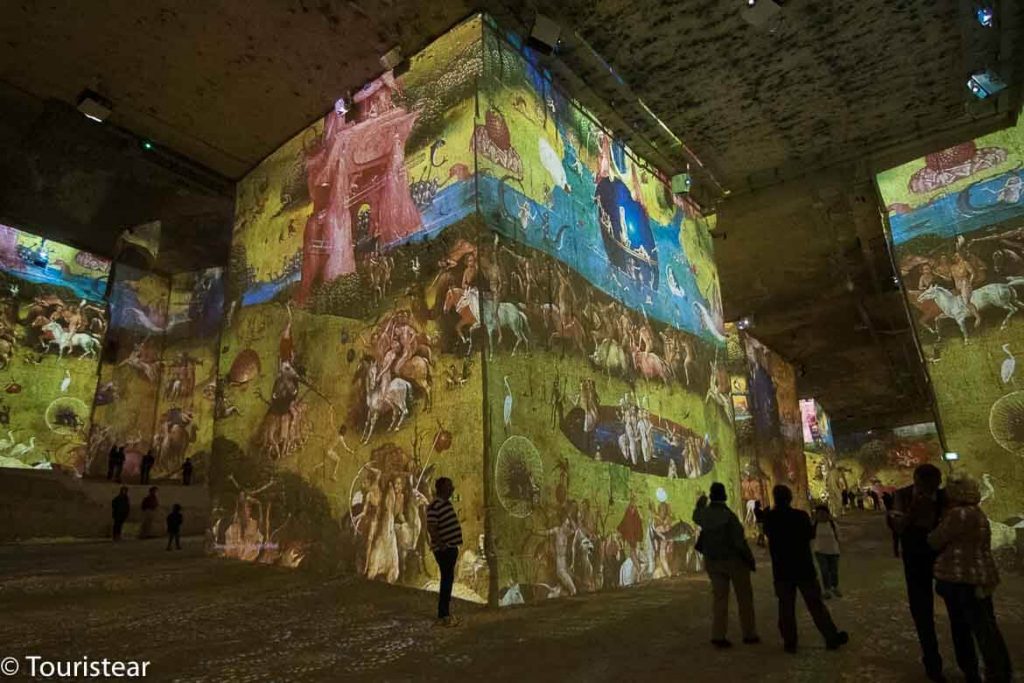
In this magical place for the locals, many marine fossils have been found, and many legends are told about Les Carrieres; however, today, this place is known worldwide as the Cathedral of Images.
In 1960 some movies were shot here, but it would not be until 2012 that it would begin to gain the fame it has today.
Today, more than 10,000 projectors are located inside the venue that projects various art exhibits to provide a unique visitor experience.
Some of the most successful have been the exhibitions of El Bosco (the one we saw), Cézanne, and Van Gogh, where the play of light has amazed visitors.
This activity is not only one of the most recommended in Les Baux de Provence but also Provence as a whole.
This magnificent natural museum is unique worldwide for its beauty and the incredible exhibits presented there.
The entrance fee is about 14.5 euros, including a tour and an immersive exhibition.
Lavender Fields
The Lavender fields cover thousands of hectares throughout Provence, and one of the most beautiful Lavender routes in the region is the one that passes through Luberon Park.
Here are the three most beautiful areas to enjoy the beauty of blue gold.
Sault is situated on a rocky outcrop. It is a beautiful village that lives from its wheat, spelt, and lavender crops.
This municipality is also known for its rich gastronomic products, such as lamb and goat cheese.
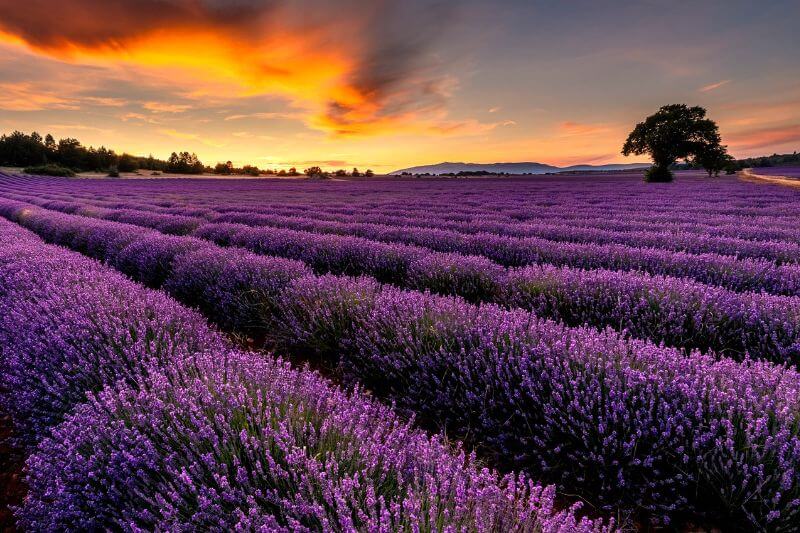
In addition, in Sault, you can find an Egyptian mummy in its municipal museum and prehistoric remains found in the area.
If you wonder what else you can do in Sault . You should not miss a visit to the Aroma Plantes distilleries.
It is a large production distillery that still preserves the oldest methods for treating lavender.
These distilleries are characterized by preserving the traditional way of lavender oil production.
There, you will be able to see the whole process of this product, increase your knowledge about blue gold and also take home some high-quality souvenirs.
You can do the guided tour in English or French, and you will enjoy a unique experience.
- Read more: When is the lavender season in the South of France?
Apt is located in the heart of the Luberon, 50 km from Avignon and Aix en Provence.
This village is surrounded by lavender fields and vineyards, offering a stunning summer landscape.
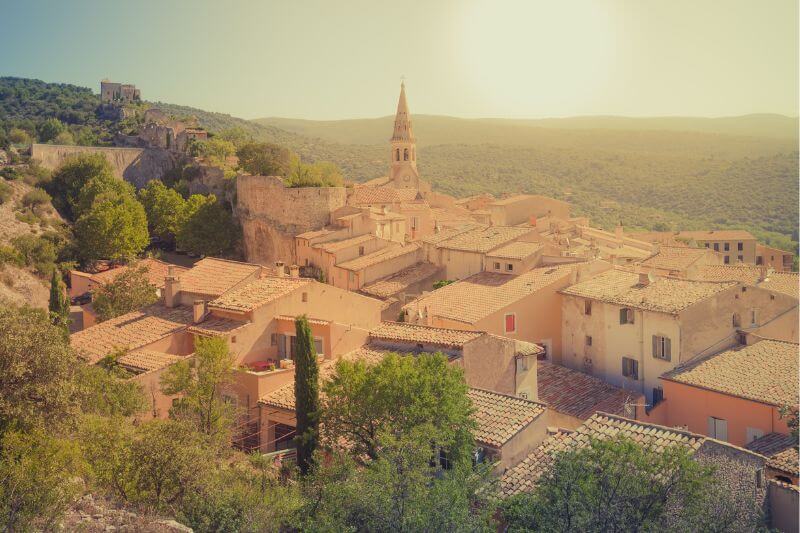
Apt is also known for the ochre quarries that have allowed the development of local crafts and its famous pottery.
In Apt, as in any other village in Provence, the Provençal market is held where all kinds of local handicraft products are sold.
As we mentioned before, the fame of this place comes from the Lavender fields.
Apt organizes guided tours of lavender producers, where you can learn the secrets of the transformation of the plant into essential oil and even pick the lavender yourself, distill it and obtain your own essential oil.
- Read more: The most beautiful villages of Provence
Ferrasières
Ferrassières has a lavender festival on the first Sundays of July.
Here you can stroll through the lavender fields, watch distillation demonstrations, see exhibits on lavender cultivation and harvesting, and even take a lavender culinary workshop.
You will find everything related to lavender here at Ferrasières.
Guided Tours
From Les Baux, many excursions depart daily to different attractions near this village, organized by various companies that offer transportation and guidance, giving unforgettable experiences to tourists.
Here is a list of some of the things you can do during your stay in Les Baux de Provence:
- Visit the Roman and medieval architecture of Provence ( Pont Du Gard, Antiques and Les Baux de Provence )
- Visit Sant Remy de Provence
- Excursion to Aix-en-Provence
- Excursion d e s d e Avignon
- Wine tour in Les Baux de Provence
Santons Museum: learn about local craftsmanship
Despite being a small village, Les Baux de Provence has a more varied cultural offer.
If you are in the area for a few days, we recommend visiting the Santos Museum, where the town’s history is shown through figures.
The Santos museum is a large exhibition of a Christmas nativity scene staged in the village of Les Baux de Provence, where there is no room for any detail.
This model shows the old medieval houses of the village and the different daily scenes that were seen in ancient times, such as craftsmen working in the street or women cleaning clothes in the laundry.
Undoubtedly, it is a curious and entertaining activity for visitors of all ages who want to learn a little about the town’s history in a pleasant and fun way.
Admission: 5 euros
Yves Brayer Museum
The Yves Brayer Museum is another of the museums that we recommend visiting anyone who goes to Les Baux de Provence.
This center displays an extensive collection of the artist obtained by the Porcelet family, which has made this project possible.
Yves Brayer was a renowned French painter born in Versailles, who lived in France, Italy, and Spain but had a great affection for Provence, and that is why his museum is located in this French region.
Throughout the visit, you can admire some of his great works showing postcards of Provence, such as the village of Les Baux de Provence itself.
The museum is open every day except Tuesdays and has an entrance fee of about 8 euros.
However, from here we encourage you to buy a combined ticket for the castle, Les Carrieres Lumieres and this museum itself as it costs 20 euros and is well worth visiting these three places.

How to Get to Les Baux de Provence
- From Avignon : A7, exit 24 Avignon Sud – via Noves and Saint-Remy de Provence. 40 minutes
- From Marseille : A7 direction Lyon – A54 direction Arles, exit 11 Saint Martin de Crau, via Maussane-les-Alpilles. 1h 10 minutes
- From Nimes : A9 – A54, exit Arles number 7, via Fontvieille. 50 minutes
Nearby airports: Marseille
Best time to visit Les Baux de Provence
Les Baux de Provence is a place to visit all year round. However, we recommend that you visit in winter, autumn or spring as these are the seasons when the town is at its most beautiful.
However, the time when most visitors come to the village is summer, since this is when the lavender is in bloom .
Les Baux de Provence is halfway along the lavender route, which is the main reason to stop here.
On the other hand, we want to tell you that in summer this town is scorching and crowded with tourists, making it difficult for you to find an affordable place to stay.
It will also be challenging to experience the tranquility enjoyed during the rest of the year.
Best Things To Do Near Les Baux de Provence
Aix en provence.
Enjoy a day (or several) in Aix-en-Provence.
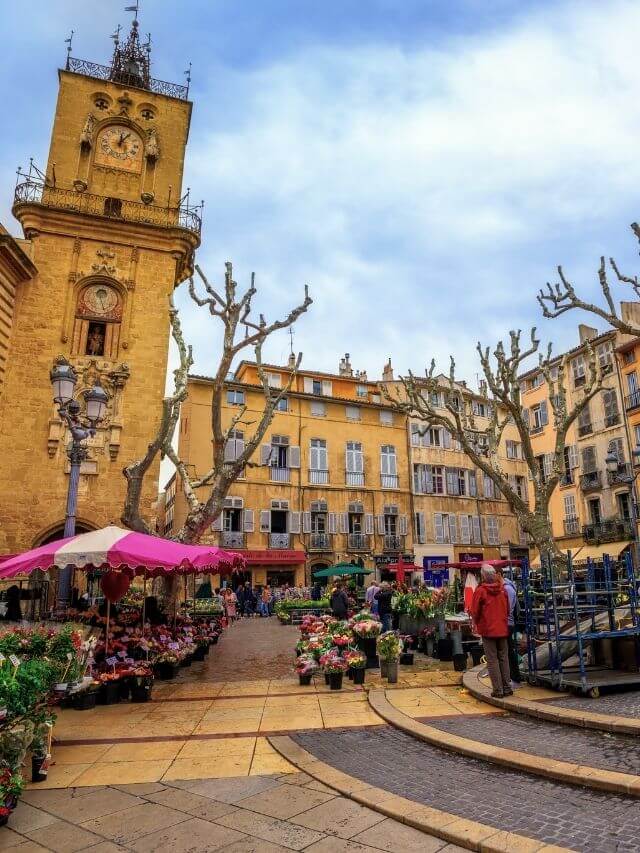
Very close to Les Baux is another point not to be missed on your itinerary in Provence.
Aix en Provence, the region’s ancient capital, is a city full of history and beauty. Aix en Provence is a city full of history and beauty that opens its doors to those curious about art and architecture.
Aix-en-Provence was a Roman walled city founded in 123 BC, of which very little remains today.
However, it still retains a tremendous medieval heritage from the city’s golden age when celebrities such as King D’Anjou and many Italian and Flemish painters moved to the area and made Aix a privileged city.
Today you can relive the city’s history by strolling through the town’s colorful streets, enjoying the beautiful facades of the buildings and the city’s museums.
You will enjoy great city postcards along your walk, such as the Saint Saveur Cathedral, the Saint Jean de Malta Church, and the Roman Baths.
But that’s not all; after a short break for a drink on the Cours Mirabeau avenue, don’t forget to meet the city’s favorite sons, Cézanne and Vasarely.
These two artists from different eras honor the locals with their works and museums that attract thousands of tourists each year.
Pont du Gard
The Pont Du Gard, 26 km from Avignon, is one of the tourist attractions you should not miss.
The Pont Du Gard is one of Europe’s most important Roman aqueducts. It is the second best preserved after the Segovia aqueduct.
Located on the banks of the Rhone river, Avignon is one of the cities not to be missed. near Les Baux de Provence.
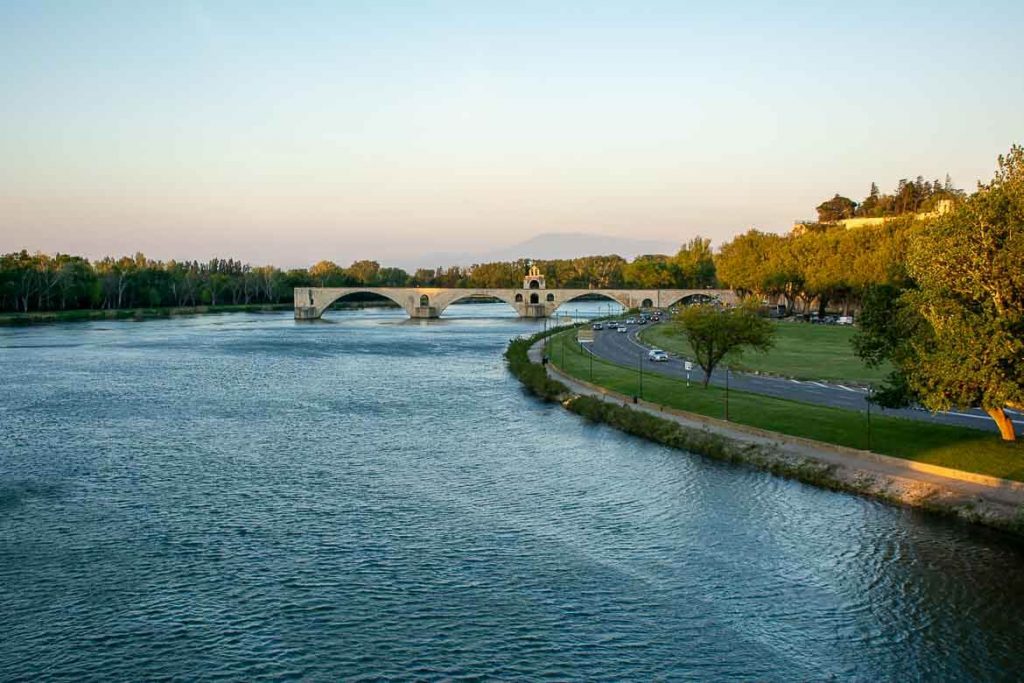
For those who have not yet heard of this city, Avignon was the papal see from 1309 to 1377, making it the most powerful in Europe and generating a great architectural and cultural heritage that has remained in good condition to this day.
Enjoy the opportunity to walk the streets of Avignon, contemplating the city’s attractions such as the Papal Palace, the Avignon Bridge, its squares, the Cathedral of Notre Dame des Doms and all its streets until you get to see the remains of the ramparts.
And after a long walk, I am sure you will agree that Avignon is undoubtedly one of the most beautiful cities in the south of France.
The beautiful city of Arles is located in the southeast of France, just 30 minutes from the town of Les Baux de Provence.
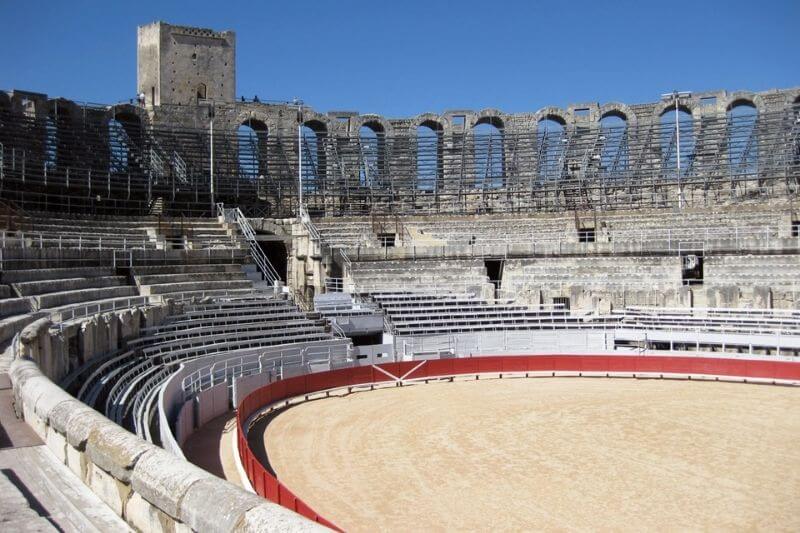
In its architecture, you can see the great Roman heritage present in this city and for which it has been declared a World Heritage Site by UNESCO.
Among its most interesting monuments are Les Arenes de Arles, the Baths of Constantin, and the Theater of Arles.
Where to Stay in Les Baux de Provence
Les Baux de Provence has a good selection of accommodation to suit all budgets.
However, if you travel in the high season, i.e., summer, you should expect prices above 80€ per room.
- Price “low”: Apartment Les Baux-Beaux
- Average price: Mas de l’Oulivié
- Luxury price: Domaine De Manville
Plan Your Trip to the South of France
- The largest cities in Provence
- The most beautiful villages in Provence
- How to drive in France
- Best things to do in Provence
This post may include affiliate links. This means that we will receive a small fee if you make a purchase through our links. It has no additional cost to you. It’s a win-win!
Hi there! I’m Vero! I’ve always loved traveling! I have been living in France since 2018. And traveling around this awesome country. I love road trips and traveling by van, and also, some comfy getaways :) Check out: Touristear.com
Similar Posts
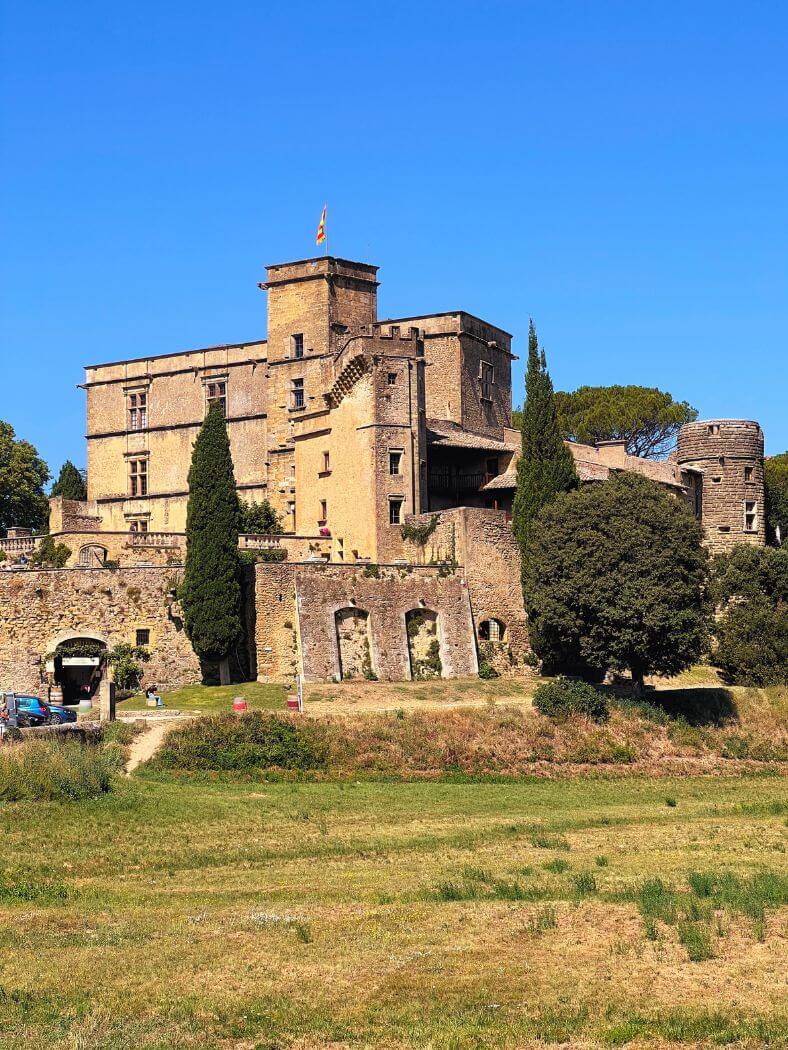
10 Best Things to Do in Lourmarin
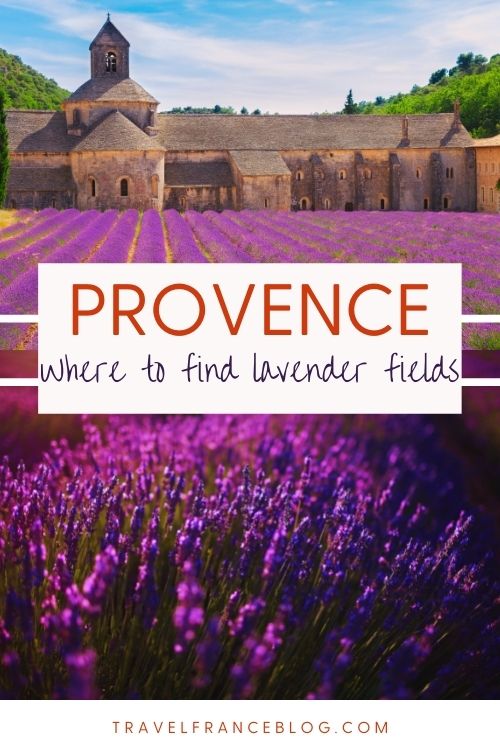
Where to Find Lavender Fields in Provence, France

How To Visit the Camargue National Park, France

Best Things To Do in Antibes, French Riviera
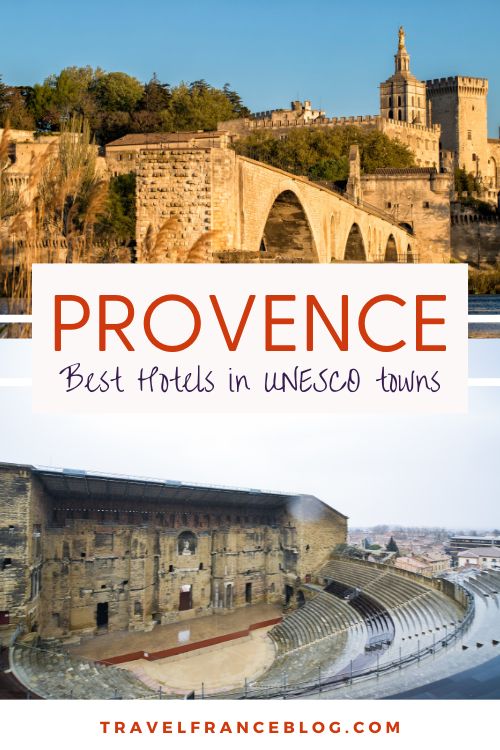
Accommodation in Provence’s UNESCO World Heritage Villages
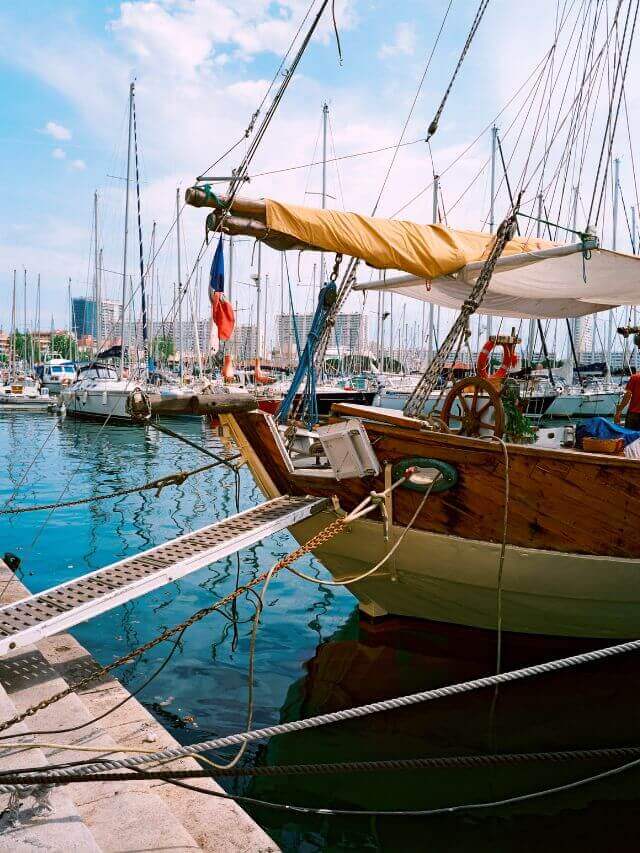
Weekend Getaways in the South of France
Leave a reply cancel reply.
Your email address will not be published. Required fields are marked *
Save my name, email, and website in this browser for the next time I comment.
Privacy Overview
Découvrir les Baux
Préparer votre séjour.
- Village et Patrimoine
- De pierre et de roche
- Au coeur d’un parc naturel
- Gastronomie
- Aux alentours
- Expositions
- Art et culture
- Gastronomie et terroir
- Sentiers et balades
- Venir aux Baux-de-Provence
- Hébergement et restauration
- Groupes et professionnels
- Vos événements
- Château des Baux-de-Provence
- Billetterie
- Office de tourisme
- Mentions légales
- Politique de confidentialité
En toute saison, Les Baux-de-Provence s’offrent à vous et vous permettent de découvrir les différentes palettes de couleur et de lumière des Alpilles . Une histoire pluri-millénaire, des traditions ancestrales, un art de vivre la Provence, des goûts, des saveurs : voilà ce que vous découvrirez dans cette section.
Bonne visite sur le site des Baux-de-Provence !
Le rocher des Baux apparaît comme un immense vaisseau de pierre où les vestiges d’un impressionnant donjon féodal semble rivaliser avec la forteresse abrupte.
Nid d’aigle à la fois sentinelle et place forte naturelle, le site fut utilisé de tout temps comme un lieu de refuge.
Village & Patrimoine
Le village des Baux-de-Provenc e fait partie des sites patrimoniaux remarquables de France sur décision du Ministère de la Culture.
Flânez dans les petites ruelles pavées de la cité, un des Plus Beaux Villages de France .
Découvrez les monuments et les éléments architecturaux qui font la richesse du patrimoine de ce lieu chargé d’histoire .
Nature & Paysages
Les promontoires et les vallons des Baux-de-Provence ont été sculptés par les siècles et le mistral.
Depuis l’Antiqué, la main de l’homme les a façonnés. Les falaises calcaires ont été entaillées par des générations de carriers.
Vergers d’oliviers et vignobles , terres pastorales s’étendent sur leurs flancs. Découvrez du haut des crêtes des Alpilles, tout une mosaïque de paysages .

Art de vivre
Prendre le temps de bien vivre , est tout un art … ici, cultivé avec raffinement et gourmandise .
Allez à la rencontre de passionnés de leur terre, heureux de partager avec vous leurs savoir-faire et leurs traditions .
Ceci pourrait également vous intéresser...
En voiture, train ou avion, retrouvez les informations nécessaires pour vous rendre aux Baux-de-Provence.
Découvrez les établissements situés dans le village des Baux-de-Provence et alentours.
Découvrez de hauts lieux de la Gastronomie.
Maison du Roy, Rue Porte Mage, 13520 Les Baux-de-Provence Tél. +33 (0)4 90 54 34 39 [email protected]
En savoir plus
Horaires d’ouverture Lundi au vendredi : 9h30 à 17h Weekends et jours fériés : 10h à 17h30 Fermeture : 25 décembre et 1 janvier
Téléchargements
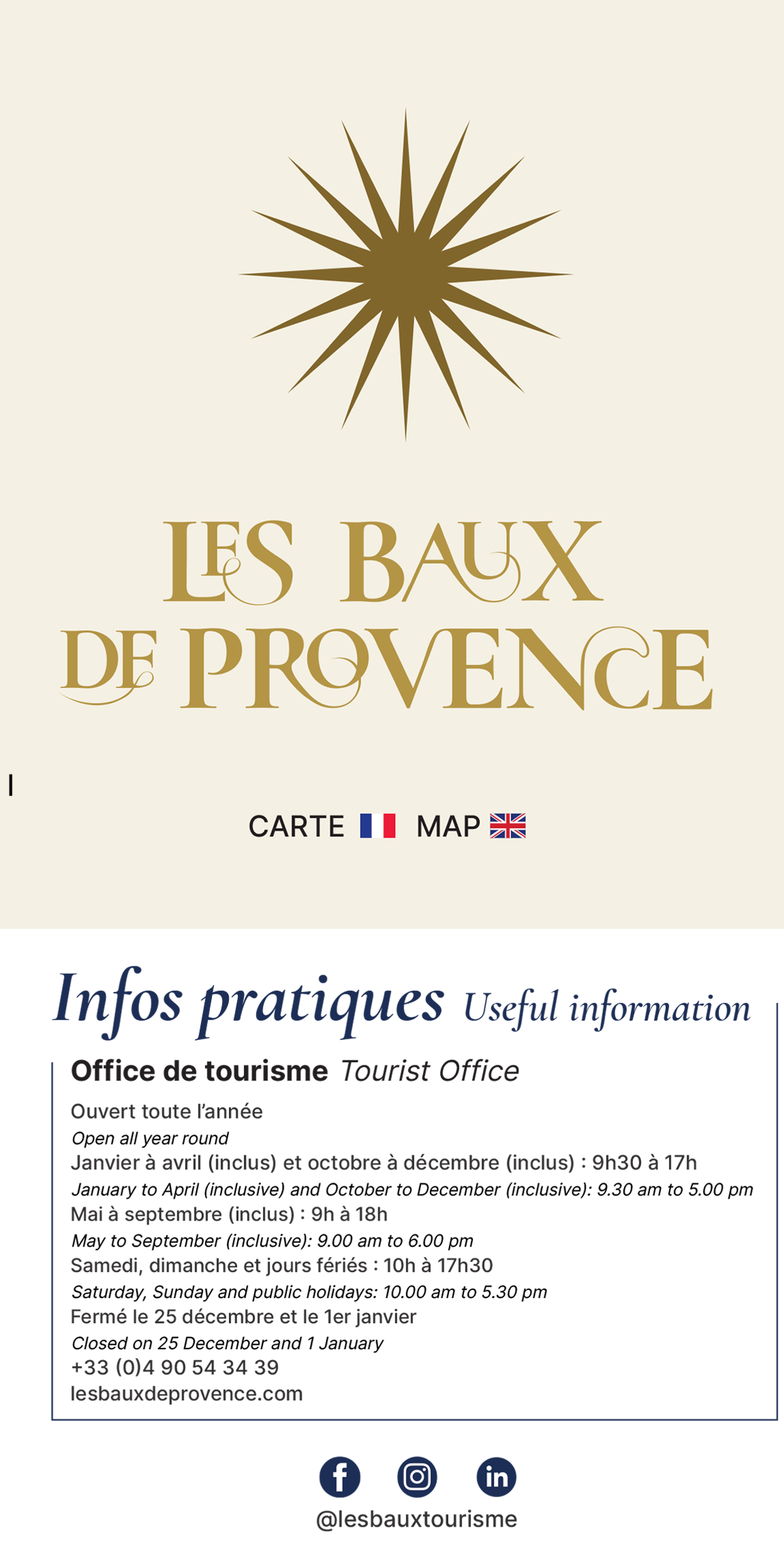
Pour être tenu.e informé.e des actualités festives et culturelles des Baux-de-Provence, inscrivez-vous à notre newsletter
Liens utiles

Les Baux de Provence
An open-air museum in the heart of the alpilles.
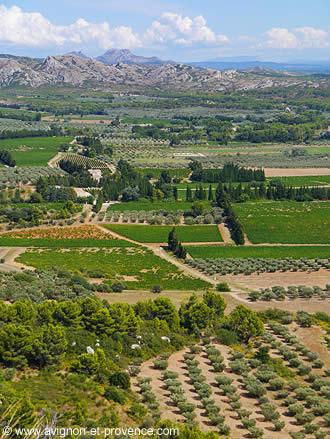
Built on a rocky outcrop, the Citadel of Les Baux de Provence offers you incomparable panoramic views over the Alpilles mountain range, the plain of Crau swept by the Mistral wind and the Camargue . The twenty or so residents who live within its walls jealously protect a patiently restored and unparalleled heritage. With the château of Les Baux and the Carrières de Lumières , this veritable open-air museum is a not-to-be-missed stop in Provence for the more than one million visitors who come here each year. The Saint-Vincent Church, the Post Tenebras Lux window, the Maison du Roy, the White Penitents' chapel, the Hôtel de Manville, the Château.... 22 monuments testifying to a prestigious and tumultuous past have been listed with the historic preservation society. Architectural masterpieces can be seen and admired at every corner of the cobblestone lanes that criss-cross the old village. Art galleries, and crafts workshops, boutiques and museums, gourmet restaurants and 4-star hotels invite you for a longer stay in this exceptional setting.
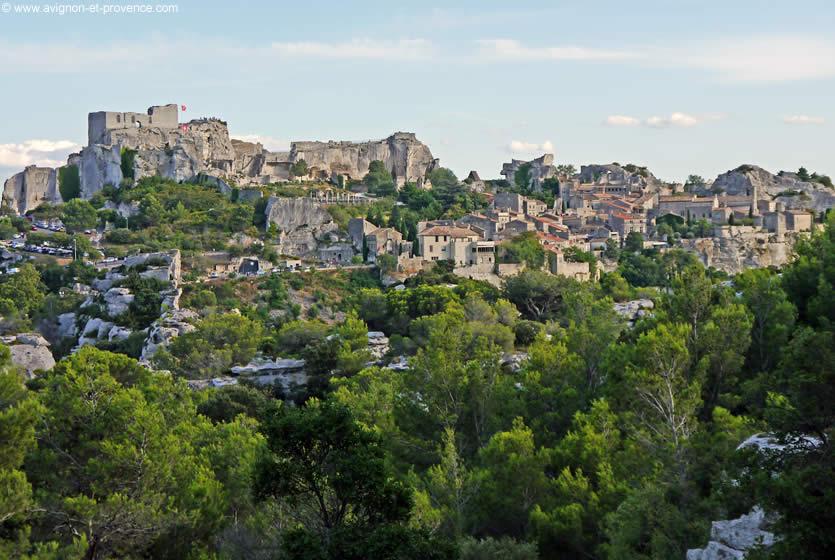
The Citadel of Les Baux de Provence
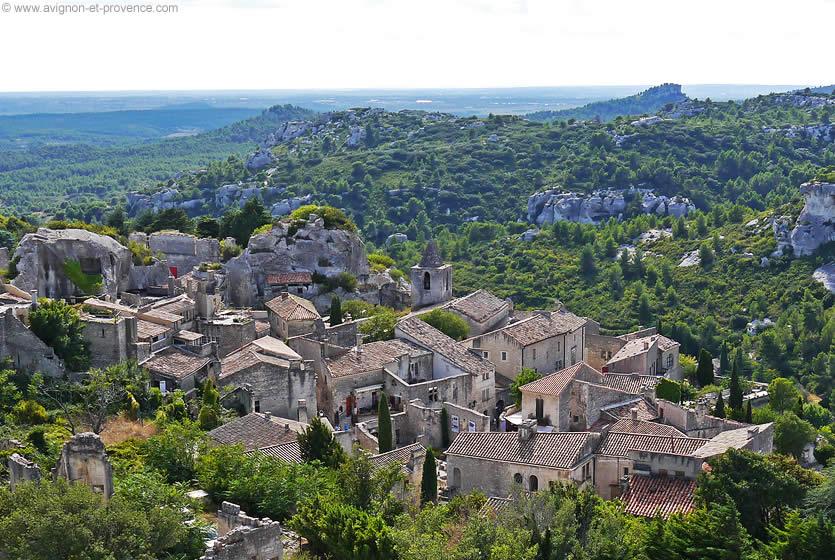
The medieval village of Les Baux de Provence
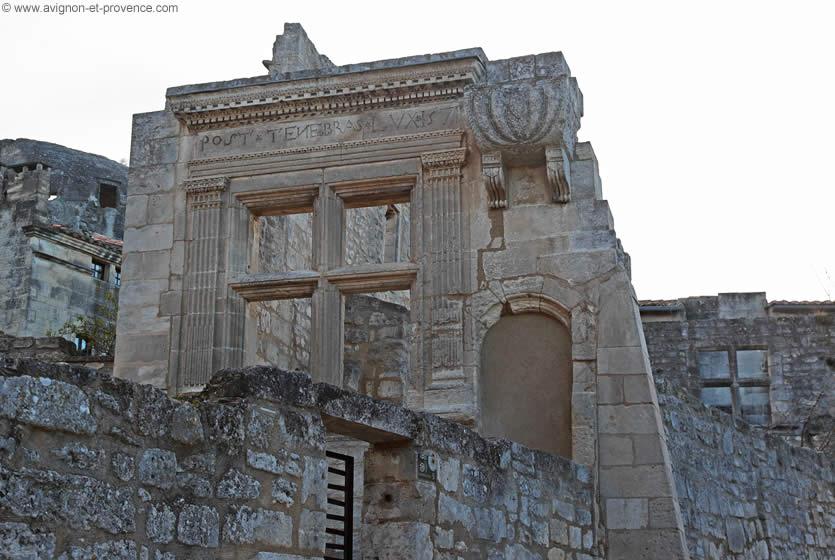
The Post Tenebras Lux window, a vestige from the Renaissance, in Baux de Provence
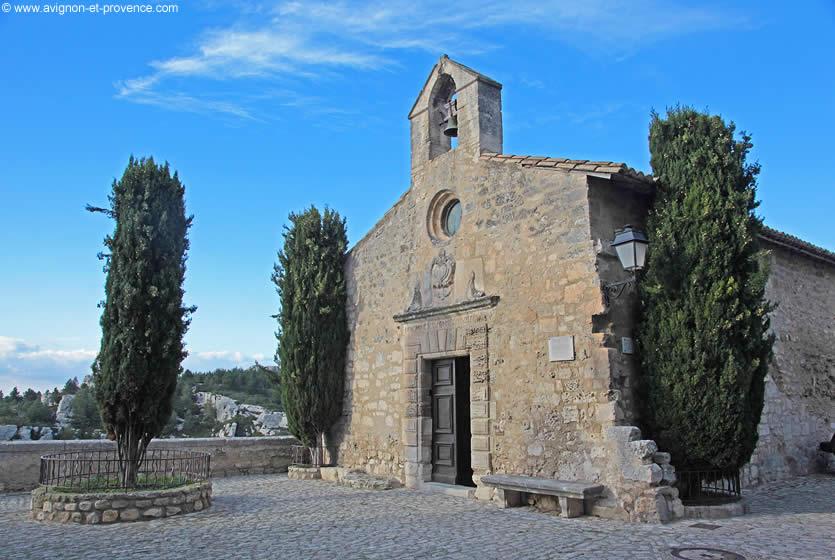
The White Penitent's Chapel in Baux de Provence
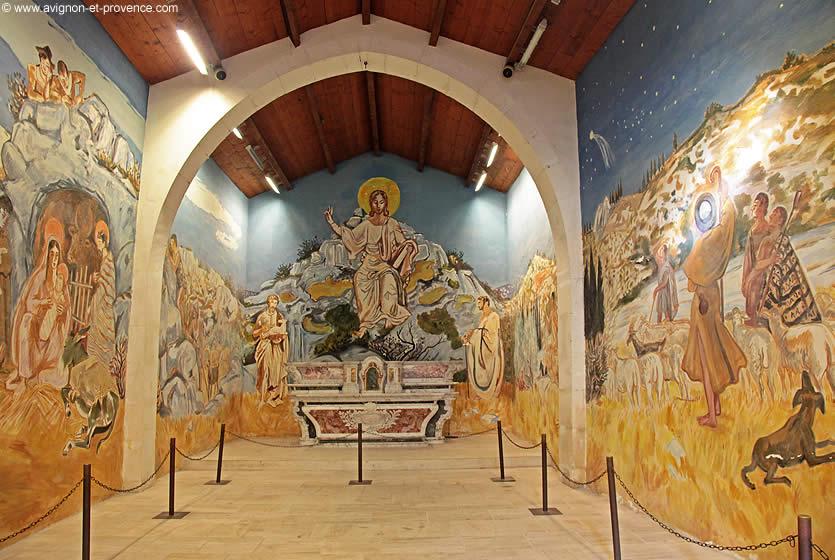
The interior of the White Penitent's Chapel, frescoes by Yves Brayer
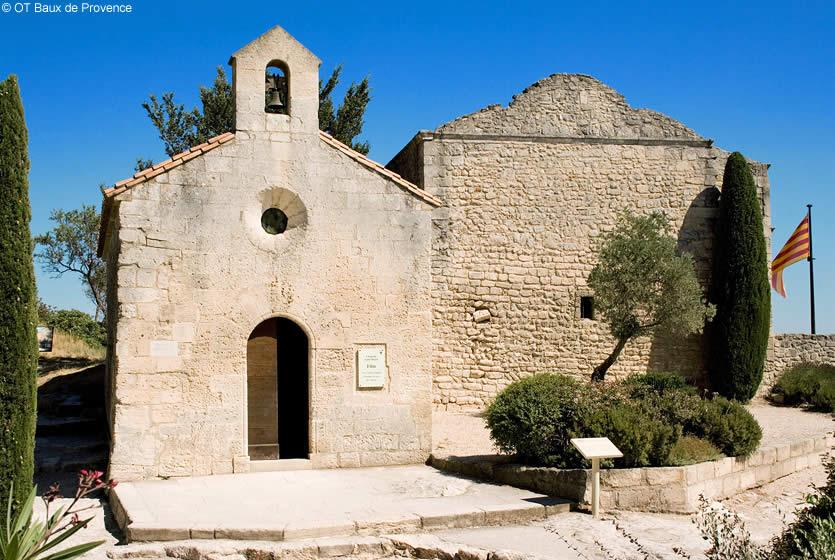
Saint-Blaise Chapel in Les Baux de Provence
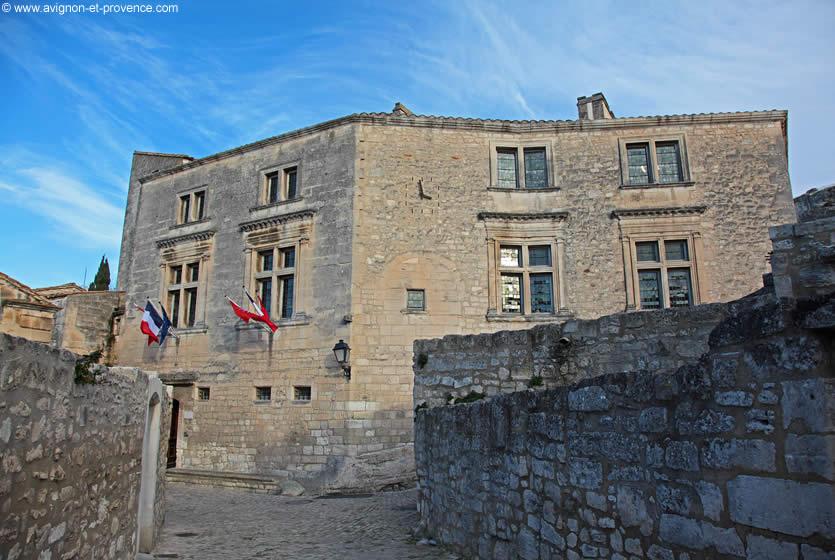
Hôtel Manville in Les Baux de Provence
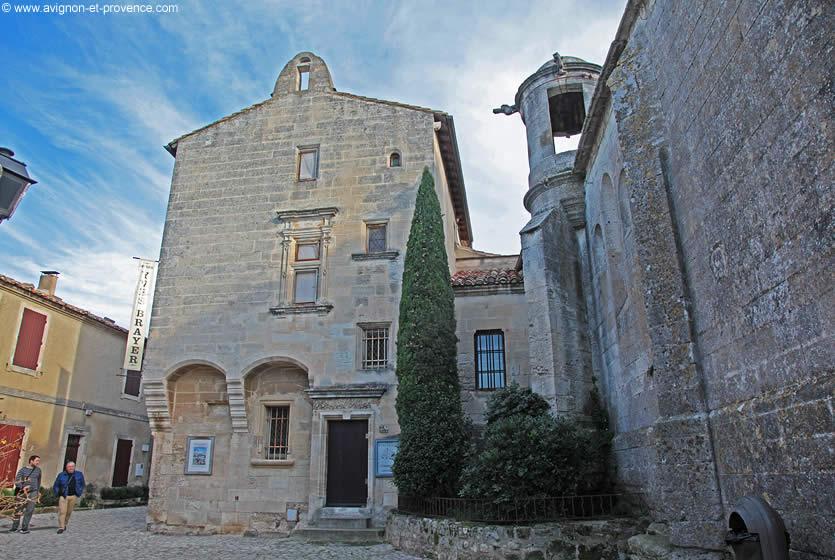
Yves Brayer Museum in Baux de Provence, Hôtel Porcelet
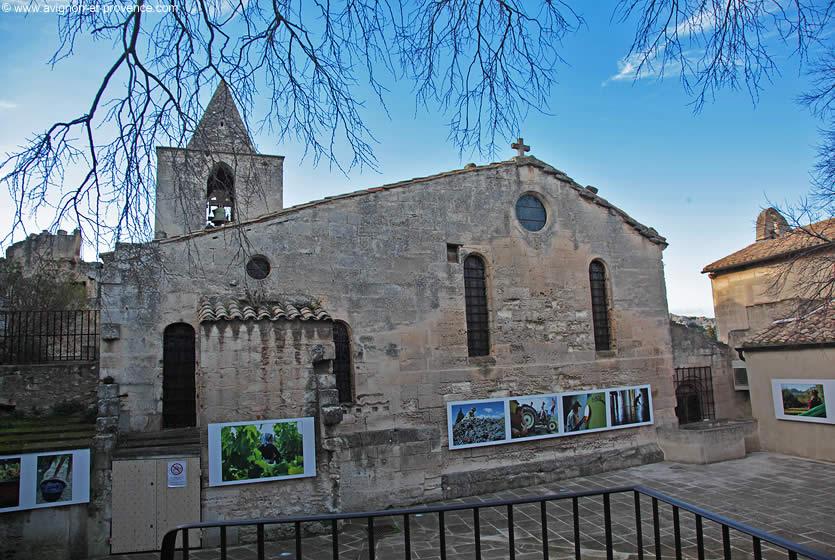
Exhibition in the courtyard of the Hotel Porcelet
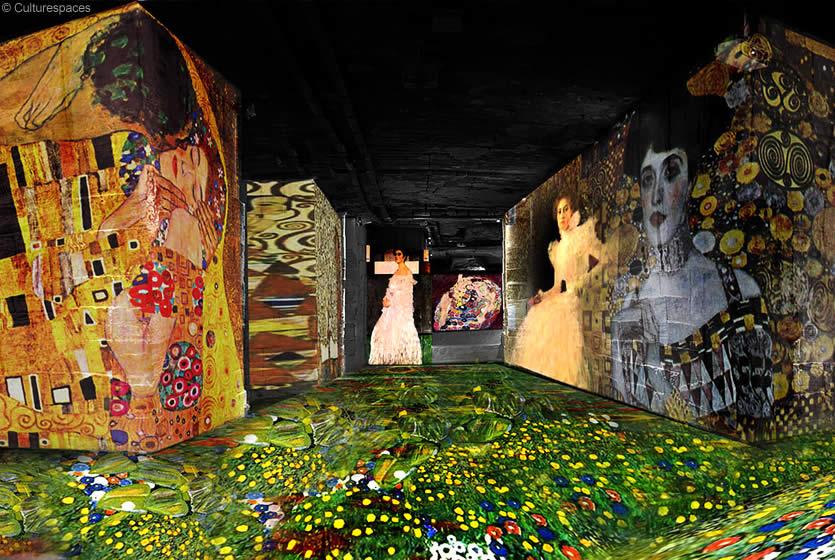
The Carrières de Lumières in Les Baux de Provence
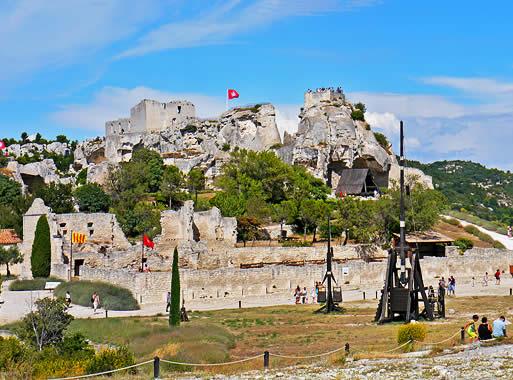
On its steep rocky cliff, the Château of Les Baux , a veritable stronghold from the Middle Ages, stretches majestically over 7 hectares. An audio-guide tour, available in 10 languages, reveals all the citadel's secrets as well as the chaotic history of the Lords of Les Baux. Shows and events are organized that permit people of all ages to relive the epic history: catapult demonstrations, the shooting of crossbows, medieval sword fights, young chevalier days and pony rides... In 2016, ladies took center stage during the "Médiévales des Baux" festival. The old stone quarries of the Val d'Enfer are today the theatre for a magical show that changes its theme every year and which gave the site its name: “ Carrières de Lumières " or “Quarries of Lights”. The masterpieces by great artists are projected onto the floor and 14-metre high walls of this stone cathedral. After Marc Chagall, in 2017 it's Bosch, Bruegel, Arcimboldo 's turn to shine. Spectators standing in the decor itself will be blown away by the musical and artistic staging of this whirl of giant images. The journey continues with Jean Cocteau who filmed "The Testament of Orpheus" in this atypical setting in 1959, of which excerpts are presented in the space devoted to him. Don't forget to take a jacket with you. The show will give you shivers in more ways than one: inside the temperature is about 14°C (57°F). Baux de Provence boasts three “Vallée des Baux-de-Provence" protected designations of origin, for the broken green olives, the black olives and the olive oil that you can sample if you visit the olive oil mills still in operation. The Alpilles Regional Nature Park has a theme circuit through the olive orchards, "Flânerie entre les Oliviers". Those who prefer organic wines will be pleased to know that 85% of the AOP Les Baux de Provence vineyards are cultivated using organic farming or biodynamic methods. A dozen wine estates offer tours and wine tasting. The Alpilles Regional Nature Park has a multitude of marked trails great for hiking, cycling and horseback riding. Arles and Saint-Rémy de Provence are not far and Saintes-Maries de la Mer and the beaches of the Mediterranean are less than an hour's drive away.
Art of living
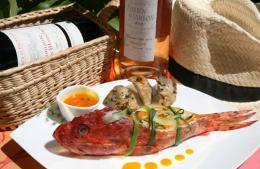
Gastronomy, markets of Provence, regional products, Christmas traditions, celebrities of Provence....
Where to sleep?
Baumanière***** Les Baux de Provence
300 EUR/night*
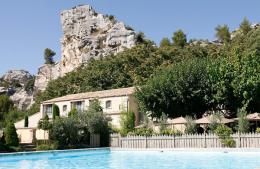
Hotels - The Alpilles
Domaine de Manville *****
285 EUR/night*
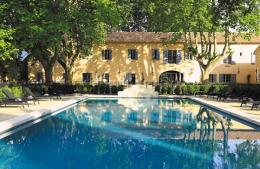

© Seeprovence.com

Les Baux de Provence
Stunning medieval village with the best castle in Provence
You shouldn't let the lines of parked cars put you off stopping at Les Baux de Provence. This is one of the loveliest hilltop villages you'll come across, and it's worth the fight through the crowds to take a look. Ideally, don't come in midsummer, otherwise you will be sharing every nook and cranny with a thousand other tourists.
Les Baux dates back to the Middle Ages when its awesome castle was used to control and protect the surrounding area.
Today the narrow streets are filled with gift shops, art galleries, gourmet food shops and cafés. It's a very pretty place full of olde worlde charme . I guess some may call it twee, but without this restoration, the village would have been unlikely to survive into the 21st century, and Provence would have been a lesser place to visit.
History & Culture in Les Baux-de-Provence
In the Middle Ages, Les Baux was a fortress of castle and dwellings, from which the Lords of Baux aggressively controlled their many properties (towns and villages) in Provence. For a while they considered themselves to be the sole rulers in Provence, which was not appreciated by the count of Provence. The Baux Lords were warriors and liked to meddle in other disputes. But they also established a court of love in Les Baux, attracting troubadours and beautiful ladies. Chivalry and feud lived side by side.
In the late Middle Ages, the lords of Les Baux began to lose their power, weakened by the endless wars and disputes they were involved in. Finally their dynasty came to an end with the death of princess Alix de Baux. After a few shuffles of ownership, Les Baux fell to the French King. In the 16th and 17th century the village and castle attracted protestants from all around; it was an ideal hiding place for the persecuted. However, the hatred for everything catholic was so strong that the protestant newcomers destroyed the opulent interior of the castle.
In 1632 Richelieu had enough of this lawlessness and had the castle and ramparts demolished, which the population itself had to pay for. It was the death knell for Les Baux. In 1642 the King gave the fortified town to the Grimaldis (of Monaco), but they never bothered with it. Gradually, it became a ghost town with half a dozen vagabonds, outnumbered by stray dogs. Even the discovery of bauxite in the 19th century (named after the town) nearby did little to raise its fortunes.
However, everything changed in the 20th century, particularly with the efforts of Raymond Thuiler, owner of the luxury hotel Oustaù de Baumanière in the nearby Val d'Enfer (Hell's Valley). The village underwent many renovations, and the castle is still currently under restoration.
Sights & Attractions in Les Baux-de-Provence
The main attraction here is the castle, and you can read more about it on our page Château des Baux . It really is worth the entrance fee - if you're bringing the family, have a look at the château's website to find out their calendar of events and plan your trip accordingly. If you're not so bothered about participating in medieval shows and catapult demonstrations, try to visit outside July and August so that you have space to breathe and to explore the ruins.
There are two churches in the village. Notre Dame du Chateau (12th - 16th century) is within the castle grounds and the old 12th century priory, St Vincents was built into the rocks on the southern side. It features a ribbed barrel vault in the nave, modern stained glass windows (by Max Ingrand), and a funeral chapel with Gothic vaulting.
On your way up to the castle, you'll pass an old isolated stone window façade. It's all that is left of a 16th century mansion, the Manville Residence. It bears an inscription 'Post Tenebras Lux 1571', a Calvinist saying meaning 'After the darkness, light', and is a reminder of the Huguenot influence of that time. Other mansions from the 16th and 17th centuries have been turned into art galleries - the Musée Yves Brayer features paintings of Provençal landscapes by the said artist, and the Musée des Santons holds a large collection of Christmas figurines. The town hall can be found in one of the most impressive 16th century Renaissance houses, the Hotel de Manville.
On the outskirts of Les Baux is the unique cultural space of Les Carrieres de Lumieres . A disused quarry, it is now used to show audio-visual art installations, featuring artists such as Monet, Chagall, Renoir and Van Gogh. Check their website to find out the latest exhibitions.
The area round Les Baux de Provence is renowned for its olives and olive oils, and vineyards, and there are several who offer guided visits and tastings - check at the tourist office for details.
Things to do in Les Baux-de-Provence
Nature lovers are spoilt for choice in this area. The Alpilles Regional Country Park welcomes walkers, mountain bikers, rock climbers and horse riders. Note that during the summer, the risk of wild fires can be high causing the local authorities to close off access to some forested trails - this is to protect the area from accidental fires as well as for your safety.
Other sports on offer around Les Baux de Provence include tennis and an 18-hole golf course. Or try a spa day at one of the many luxury hotels in the area.
Start Planning

Start Exploring


12 Reasons to Visit the Vineyards of Les Baux de Provence

Launched in 1995, Appellation d’Origine Contrôlée (AOC) Les Baux de Provence was a bold step for a dozen winemakers. They joined forces in an attempt to carve out a unique identity in the ocean of mediocre (at the time) Provencal wine. These wineries had fallen under the umbrella of the AOP Coteaux d’Aix-en-Provence since 1972, and the les Baux vintners felt that their production was blurred in the vast volume produced by that AOP. The Les Baux AOC (now Appellation d’Origine Protégée (AOP)) was re-established in 1995 reverting to the original appellation formed in 1956.
The landscape surrounding these vineyards is not exactly the land of milk and honey, but rather a harsh alpine climate that supports the arid needs of grapes and olives. Known as the Alpilles (small Alps) this 30km band of jagged limestone cliffs and scrub brush is a protected regional park infused with wild aromas of herbes de Provence. At its highest point, the ridgeline of the mountains is only 498m (1,634 ft) yet the gnarled limestone fingers reaching towards Provence’s blue heavens are simply arresting.
Additional read: The Lady Wine Makers of Les Baux de Provence
The Park and its unscathed terroir are the reasons that the vineyard owners felt that their wines and their image would be better served under the AOP Les Baux de Provence banner. Some 20+ years into the experiment there is no question that the wines are of a quality that demands you pay attention. Béatrice Joyce (she and her husband own Domaine Dalmeran) pointed out that each vineyard within the AOP is, in reality, a small universe of wine with its particular terroir and geographical aspect within the Alpilles. Unlike other wine-growing areas in France, such as Burgundy and Bordeaux, the vineyards in the Alpilles are insulated operations.
We invite you to take a wine road trip through the Alpilles for a little sipping and sampling to enjoy the magic elixirs crafted by these 12 winemakers of the Vins de Baux de Provence :
Château d’Estoublon has had several owners and a long history of organized wine-growing beginning with the Seigneurie du Mont Paon, who managed a large swath of farmland under the command of the Counts of Les Baux. Read the full story of “le Grand Mas” (the large house) and reasons to visit here . The Schneider family has owned the estate since 1999, and Valerie Schneider and her husband Rémy Reboul the extensive operations. This power couple combines their experiences in marketing and hospitality to run the 494-acre property with its 28 hectares of olive trees (five classic olive varietals) and 8 hectares dedicated to organic grapevines.
Mas de la Dame : Since 1995, this 740-acre property has been operated by Caroline Missoffe and her sister Anne Poniatowski. These two ladies are the 3rd generation of the Faye family to run this vineyard that is believed to be one of the first commercially established operations in the region. There is a charming boutique at Mas de la Dame offering products from their 40 hectares of vineyards and 18 hectares of olive groves.
Mas Sainte Berthe : Documentation from 1539 references a chapel (dedicated to Ste Berthe) on Lord de Mollières’ property. Mas Sainte Berthe was an old pilgrimage site where believers would assemble twice a year to drink water from the natural spring in hopes of relief from their fevers. Now, it is a gathering place for wine drinkers who wish to sample wines crafted from the vines planted in the 1950s by the David family (their first vintage was 1976). Mas Sainte Berthe has 21 hectares of vines and 5 hectares of olive groves.
Domaine Château Dalmeran: This one of two vineyards owned by Neil and Béatrice Joyce – the sister property is in Châteauneuf du Pape. This couple is forging a strong link between all the pleasures that surround wine – food, music, art and socializing. There is an annual cooking contest where young regional chefs are invited to marry their culinary passion with the wines of Château Dalmeran; they have one month to prepare for the event before the judging begins. This Domain produces both wine and olive oil from 11 hectares, and they invite you to spend an hour, an afternoon or a jazz-filled evening at Château Dalmeran.
Domaine de Lauzières : Thirty years after their father had left the estate to the Boyer sisters in his will, the vineyard was in need of revitalization. Partners Gérard Pillon and Jean-Daniel Schlaepfer purchased this dishevelled plantation from the Boyer family and began the regeneration process. A full-scale modernization project at Domaine de Lauzières is still on-going with full replacement of grapevines in some sections, road grading, building renovations and restoration projects. The 16th century Huguenots who took refuge in the Alpilles would certainly not recognize this state-of-the-art winery but might have approved of the organic and biodynamic wines produced from the 31 hectares of vines. There are also 25 hectares of olive groves on the property.
L’Affectif is the wine passion project of Jean-André Charial, who has been involved in his family’s Relais & Château property Oustau de Baumanière since 1967. This amazing 5-star property was once an abandoned 16th-century farmhouse. M. Charial and his wife Geneviève have subsequently expanded their hospitality business well beyond the tiny village of Les Baux and created a luxury brand ‘Les Maisons de Baumanière.’ In his limited spare time, M. Charial might be found inspecting his grapevines in the Alpilles and producing roughly 8,000 bottles of l’Affectif, his biodynamic wine.
Mas de Gourgonnier with 38 hectares of grapevines and 18 hectares of olive groves has been run by the Cartier family for several generations. It is a sheltered estate in the core of the Alpilles that once served as the farm for the secluded l’Abbaye de Pierredon (now its neighbour), and provided the nutritional needs of the monks. In the 1950s, the first commercial vines were planted, and the cave was established. Luc and Frédéri joined their father Nicolas in the business, and more recently Eve (Luc’s daughter) joined the team. Mas de Gourgonnier practices organic agricultural methodology and limits the wine product to 40 hl/ha to ensure top-quality wine.
Domaine de Terres Blanches is a vineyard so bathed in the blinding summer sun that the soil almost appears white. Located on the north side of the Alpilles this 35-hectare vineyard focuses exclusively on organic, biodynamic wines. Noël Michelin would be impressed by the neat rows of mature vines in the vineyard that he acquired in 1968. It would have been back-breaking work for man and mule to remove the scrub brush (garrigue) and pines from the property that he had purchased. The winery building was built in 1973, and the estate has been following organic farming methodology from the outset. The property changed hands in 2012, and the new owners (from Alsace) continue the tradition of blending wines using the grapes from the region – grenache, syrah and mourvèdre.
Château Romanin is pressed up against the stone cliffs of the Alpilles, today’s view of the glider aerodrome and north-facing vista would have been strategically chosen when the 13th-century castle was built. Now in ruins, this château was inhabited by the Templars operating as a Medieval site of “courtly love.” The 23 hectares of vines and 4 hectares of olive groves that are sprinkled with almond trees continue to benefit from the favourable weather and solar aspects that marked the passage of time between bi-annual solstices and lunar movements so long ago.
Domaine Hauvette faces the mistral winds head-on with its northerly aspect this vineyard may be small at 14 hectares, but its wines are exceptional just like their winemaker. Dominique Hauvette is described as stubborn, courageous and hardworking and you would have to be to operate a vineyard as a single female. Her first harvest was in 1988, a time when she had only a couple hectares of vines. Now some 28 years later her cellar is marked by a stone from the Pont du Gard – a symbol of Roman strength and engineering spirit that parallels this award-winning winemaker’s approach to organic farming.
Domaine Guilbert is located within a few minutes of downtown St Remy is a tiny 30-year old vineyard surrounded by olives and cypress trees. Guy and Nathalie Delacommune purchased Dominque Hauvette’s original 2 hectares in 2007, continuing to produce organic wine.
Domaine de la Vallongue , the name of this vineyard, pays homage to the long Roman road from Rome to Spain – Vallongue represents a long valley. The owners of this 38-hectare property have practiced organic farming since 1985. Watch for their summer program that includes summer music under the stars – Nuits Lyriques – and static art exhibits. In what was once a place for sheep grazing and hunting, stands a striking winery and boutique – a place to sample their wine an estate olive oil.
There are many other reasons to visit the Alpilles,
but we think these 12 should do for now.
Image credits: All photos were received from and published with the permission of ROUGE GRANIT and AOP Les Baux de Provence
Please share this with friends and family.
Affiliate information, enterprising: melina at english bubble, massacre in merindol provence’s dark history, related posts, provence wine regions and wineries essentials reference list, exploring the vineyards of the alpilles in provence, our 7 favourite villages and vineyards of the alpilles, olive and sweetpea where wine, women and possibilities meet, carolyne kauser-abbott.
With her camera and laptop close at hand, Carolyne has traded in her business suits for the world of freelance writing and blogging. Her first airplane ride at six months of age was her introduction to the exciting world of travel. While in Provence, Carolyne can be found hiking with friends, riding the hills around the Alpilles or tackling Mont Ventoux. Her attachment to the region resonates in Perfectly Provence this digital magazine that she launched in 2014. This website is an opportunity to explore the best of the Mediterranean lifestyle (food & wine, places to stay, expat stories, books on the region, travel tips, real estate tips and more), through our contributors' articles. Carolyne writes a food and travel blog Ginger and Nutmeg . Carolyne’s freelance articles can be found in Global Living Magazine, Avenue Magazine and City Palate (Published Travel Articles) .
I absolutely love this region of Provence. The wine is outstanding!
We do too Jill. I think just to make sure I have sampled from every winery a couple times :-)
This region is beautiful! I look forward to trying the wines soon.
HI Cheryl, we agree the region is gorgeous and the wines are at least as good :-)
Leave a reply Cancel reply
Your email address will not be published. Required fields are marked *
This site uses Akismet to reduce spam. Learn how your comment data is processed .
Privacy Overview
3 rental apartments near aix-en-provence.
La Bastide des Amandiers has 3 self-contained apartments. The layout provides plenty of privacy and different spaces. A perfect place to spend time in the Luberon.
- One Bedroom
VIEW THIS LISTING
Le Clos du Buis Hotel in Bonnieux
Le Clos du Buis welcomes guests to a family-run 10 room hotel in the heart of Bonnieux in the Luberon Valley. Tasteful Provencal décor combined with modern comforts.
- Boutique Hotels
Luberon B&B and Guest Cottage
La Bastide des Songes is a quiet oasis located in the central Luberon. Guests of this B&B and cottage enjoy a peaceful setting for their holidays.
- Bed and Breakfast
1-Bedroom Apartment in Villefranche-sur-Mer
Le Beau Balcon is a sunny apartment on Rue Volti in the heart of the old town, the building is a short walk to shops and restaurants.
- Côte d’Azur (French Riviera)
Villefranche-sur-Mer Gem 1-bedroom holiday rental
Le Petit Bijou is a 1-bedroom apartment on Villefranche's waterfront. The apartment is fully outfitted, ideal for a Riviera holiday.
Les Baux-de-Provence Day Trip from Toulon, Avignon, or Marseille
Purchases made through some links on this page may provide The Detour Effect with commissions (at no extra cost to you). Thank you!
After sailing into the Mediterranean port cities of Toulon or Marseille in the South of France, most day trippers will be eyeing the ritzy French Riviera cities of Nice, Cannes, or Saint-Tropez. If you’re looking to leave the crowded beaches behind, or simply prefer the more pastoral regions of Provence-Alpes-Côte d’Azur, consider taking a unique day trip north to see a 10th century fortified town, its 13th century castle, and an immersive sound and light show in Les Baux-de-Provence.
Les Baux is also a must-visit for those staying in Avignon, Arles, Nîmes, or Montpellier; travelers based in those locations probably chose this region of Provence with a day trip to Les Baux in mind to begin with.
“Ye, Alpine peaks and all blue hills of Baux, unto the latest hour of time will show the traces of our teachings carved in stone.” Mirèio by Frédéric Mistral
Getting to Les Baux-de-Provence by Car
In most of my posts, I focus on how to reach destinations throughout France via public transportation because 1) I think it’s the best way to see the country and experience local life, 2) it’s affordable, 3) I personally will do everything possible to avoid having to rent a car because driving invites extra stress. I’ve written about using public transportation to visit castles in the Loire Valley , the Occitanie medieval citadel of Carcassonne , and to take day trips from Paris to Giverny, Strasbourg, Fontainebleau, and Mont Saint-Michel.
That said, some rural areas of France truly are not accessible by public transportation no matter how much I try to force it. I have surrendered to renting cars a few times, most recently for a day trip to Les Baux-de-Provence from Toulon.
At just a 1hr 30min drive, most of which is a straight shot on the highway, renting a car to reach Les Baux from Toulon is undeniably the easiest option if you don’t have significant anxiety about driving. There are multiple rental car agencies in Toulon, including Enterprise and Avis.
However, if you are trying to reach Les Baux from Avignon, Arles, Saint-Rémy, Montpellier, Nîmes, or Marseille, this opens up more options via public transportation.
Drive times to Les Baux by rental car or taxi: Saint Rémy-de-Provence: 20 min Arles: 30-40 min Avignon: 40-50 min Nîmes: 45-60 min Aix-en-Provence: 1 hr Marseille: 1 – 1.5 hrs Montpellier: 1.5 hrs Toulon: 1.5 – 2 hrs
Getting to Les Baux-de-Provence on Public Transportation
Getting to Les Baux-de-Provence on public transportation from Arles , Saint Rémy-de-Provence , or Avignon in the summertime is pretty straightforward. Bus line 707 Eté (“eté” means summer) drops off directly at the castle in Les Baux from July 8-August 31.
From Nîmes , Montpellier , or Marseille Saint-Charles , you would first need to take a train to Avignon or Arles, then take the 707 eté bus line the rest of the way to Les Baux. Going to Avignon to catch the 707 is usually better because it will be a direct train; if you choose the train route to Arles, you would have to transfer at Avignon anyway.
Spring, Fall, Winter, early Summer
During the off season when bus line 707 does not stop in Les Baux, those staying in Arles can take bus line 702 to Maussane-les-Alpilles and then take a 10 minute taxi the rest of the way to Les Baux. Bus 704 to Saint-Rémy is a backup option requiring a 20 minute taxi ride.
Those staying in Avignon could take bus line 707 (its year-around service rather than the eté summer line) to Saint-Rémy and then take a 20 minute taxi to Les Baux.
From Montpellier , Nîmes , or Marseilles Saint-Charles station, you can take a train to Arles (it is not direct; there will be a transfer at Avignon), hop on the 702 bus to Maussane, then take a 10 minute taxi ride to Les Baux.
Alternatively, since taking the train to Arles requires a transfer at Avignon, you could consider just getting off at Avignon, hopping on bus 707 to Saint-Rémy, and then taking a 20 minute taxi to Les Baux. It comes down to whether you’d rather deal with transferring trains or pay a little more for a longer taxi ride.
If you prefer to have all of the transportation logistics taken care of for you, consider joining a guided day trip to Les Baux-de-Provence . Tour operators offer them from Avignon , Aix-en-Provence , and Marseille .
What to Do on a Day Trip to Les Baux-de-Provence
The top two attractions in Les Baux-de-Provence are the fortified castle and village at Château des Baux, and the quarry where the immersive Carrières des Lumières sound and light show is projected.
Château des Baux-de-Provence
“If I were once enthroned there, a sovereign and an empress, in a fair mantle bedecked, of golden-flowered brocade, with pearls and emeralds dazzling round my head, then would my heart for my poor country yearn; and I, the queen, would unto Baux return. And I would make my capital at Baux, and on the rock where lie its ruins low I would rebuild our ancient castle, and a white tower on the top thereof should stand, whose head should touch the stars.” Mirèio by Frédéric Mistral
The landscape of Les Baux is naturally hospitable with its springs, valleys, and caves, but most advantageous for prehistoric settlers, Roman conquerors, medieval villagers, and modern climbers alike have been its rocky outcroppings. The craggy plateau Les Baux is built upon, and built into , creates the perfect lookout point for observing surrounding lands. The soft limestone is great for mining the very materials used to construct the castle and village. Like the Native American cliff dwellings in Mesa Verde or the stunning ancient city of Petra in Jordan , “ troglodyte houses ” were carved into the rock in Les Baux, and the Keep of the castle was also partially carved into the rock.
It’s from this characteristic rock that Les Baux-de-Provence takes its name. The Provençal word “bau” (pronounced like “take a bow”) means “escarpment.” The dictionary defines an escarpment as “a long, steep slope, especially one at the edge of a plateau or separating areas of land at different heights.” The letter “x” on the end of “baux” makes the word plural.
Archaeological evidence tells us that humankind settled in Les Baux long before the fortified town was established by the Lords of Baux in the 10th century and the castle was ordered to be built in the 13th century. In Neolithic times, a farming community used the rocky spur for shelter and buried their dead in its cavities.
The first writings about a fortification on the site were in 960 AD. Since that time we have many accounts of Les Baux being at the center of wartime skirmishes and political intrigue, including the Wars of Les Baux or “Baussenque Wars” from 1145-1162 (the central issue being whether Provence should be a part of the Catalan dynasty), the oppressive reign of “Scourge of Provence” Raymond de Turenne and his pillaging rampage from 1386-1398, and the Wars of Religion in 1631.
Having just written at length about the castle and medieval village at Carcassonne , it’s interesting to delve into the parallel history of Les Baux. Carcassonne was also tied up in the same conflicts between the Counts of Toulouse and Barcelona regarding Catalan’s claims to Provence. It seems the Trencavel lords of Carcassonne tended to side with Barcelona while the Lords of Baux tended to side with Toulouse. As another sidenote, I thought it was interesting to compare their antiquity; there is proof of Neolithic settlement in both places, but in Les Baux it’s much older at 6000 BC vs. Carcassonne’s 3500 BC.
After the last Princess of Baux died without an heir in 1426, the seigneurie changed hands until Les Baux eventually became an asset of the Kingdom of France. Wartime instability and royal wishes to weaken Les Baux as a rebel stronghold ultimately reduced the significance of the site, which fell to ruin after a siege in the early 1630s and was mostly abandoned over the ensuing centuries.
Visiting Château des Baux-de-Provence is a unique experience because a lot of it has not been restored; it is still a ruin with a rocky, crumbled look and thus feels “authentic.” Its medieval village, by contrast, is dotted with gift shops and cafes, but still retains its Old World charm because of buildings like the 12th century Saint-Vincent Church and Saint-Blaise Chapel, or the old Eyguieres gate which was the only entrance to the city prior to 1866. The Yves Brayer Museum is a love letter to Provence and France.
While visiting Les Baux, travelers can walk the castle ramparts, climb its towers, look out over the stunning landscape of Val d’Enfer (“Valley of Hell” because of the primordial, oddly-shaped rock formations) and Alpilles, and study the replica war machines, which include a trebuchet (the largest in France), ballista, battering ram, and couillard. Demonstrations of these operational machines are held in the summer; check out the seasonal program here .
Château des Baux-de-Provence Pricing, Tours, and Things to Know
At the time of this writing, an entrance ticket for the château is €8 per adult during low season or €10 during the high season of July 15-August 31. There are reduced rates for seniors, children, students, disabled, and families of 4. There is also a combined Carrières des Lumières + Château des Baux-de-Provence ticket for €18 off-season or €20 in high season called the “Baux-de-Provence Pass.”
Free audioguides in 10 languages are available upon arrival.
There are not any lockers or luggage storage options. Pets are only allowed if on a leash. Strollers are not recommended. The Château des Baux is not very accessible to people with reduced mobility.
Château des Baux-de-Provence Parking
The designated castle parking is paid, so if you do not have reduced mobility, I would recommend parking further up the road at one of the many free parking spaces for Carrières des Lumières and then walking to the castle.
Carrières des Lumières
“Let four men rally, and to the Fairies’ Cavern in the valley they call Enfer, bear up this wounded man. The deadlier the hurt, the sooner can the old witch heal. Scale first the cliffs of Baux, and circling vultures the cave’s mouth will show.” Mirèio by Frédéric Mistral . The poet Jules Canonge visited Fairies’ Cavern and supposed that, since Dante once visited Provence, Val d’Enfer must have inspired “Inferno”.
Just next door and walking distance from the castle is the giant Grands Fonds quarry which was heavily mined for limestone in the 1800s and used as the atmospheric setting for Jean Cocteau’s 1959 film The Testament of Orpheus .
Since the 1970s, the quarry has been used as an art space where light shows are projected onto the immense stone walls. Today, the Carrières des Lumières (quarries of light) multimedia show combines classical music with swirling, moving images of timeless paintings by artists such as Van Gogh, Monet, Renoir, Bosch, Raphael, Cezanne, and Vermeer. The theme changes each year. When I got to see the show in 2023, the theme was “From Vermeer to Van Gogh, the Dutch Masters.”
I have seen other sound and light shows, including the rather disappointing Van Gogh Exhibit Denver. The only other time I’ve been impressed by this type of show was at Blois castle in the Loire Valley ; otherwise, I don’t tend to find them as immersive as the marketing would lead you to believe. As a result, the Carrières des Lumières show in Les Baux went above and beyond my expectations. Perhaps the difference is the sheer enormity of the carved out quarry, with its 7,000 m² of surface area to project onto and the absolutely towering stone pillars. Images cover the ceilings, walls, and floors of the Dante Room so that you truly feel as if you’ve been inserted into the scene. I was not simply observing Van Gogh’s Starry Night Over the Rhône , but taking a walk along the depicted riverbank in Arles. I was inside a tavern drinking with Jan Steen’s merrymakers and I was chased by Mondrian’s abstract lines as they spread across the room towards me.
Visitors constantly gain new vantage points and perspectives on the art as they walk throughout the exhibit, ascending ramps or stairs and circling around rocky supports. Since the view is not exactly the same wall-to-wall, you notice small details about each painting that you may never have focused on in a static setting.
Carrières des Lumières Pricing, Tours, and Things to Know
The entire show is about an hour long, at which point the loop starts over again from the beginning. Your timed entry ticket is set up to start at the beginning of the loop, but you can stay for a repeat. At the time of this writing, a ticket is €14.50 per adult with reduced rates for seniors, children, students, people with reduced mobility, and families of 4. There is also a combined Carrières des Lumières + Château des Baux-de-Provence ticket for €18, or €20 during the high season of July 15-August 31, called the “Baux-de-Provence Pass.”
Carrières des Lumières does not offer in-house official tours. Third party operators provide tours that involve transportation and entrance to the show, including this Half-Day Van Gogh & Carrières de Lumières Tour from Avignon , but I doubt a guide would interpret the art for the group while inside. It would be disruptive for other attendees considering the music and the quiet reflective vibe.
There are not any lockers or luggage storage options. I had been advised that wearing a jacket is a good idea because the caverns are so cold, but my visit wasn’t cold at all; maybe it depends on the season. Strollers are allowed and the quarry is wheelchair accessible. Animals are not allowed.
Carrières des Lumières Parking
The driving road up to Carrières des Lumières and Château des Baux-de-Provence is winding. There are some paid parking lots close to their entrances, but there are also a ton of free parking lots and pull-offs lining the road. You’ll want to drive up, up, up looking for a lot that still has space. If all the parking lots are full, which they are likely to be, you can pull off onto the shoulder to park on the side of the road. Tons of cars were doing this – it is not prohibited as long as you use common sense about picking a space that looks safe. Don’t park on a blind curve or fail to get completely off the road and out of drivers’ way.
If you park somewhat far away from the cave entrance, the walk to get there traces alongside woodlands and strange rock formations. When I was there, modern art sculptures dotted the forest and I wished I had the time to wander and investigate them. If you are not on a schedule, take the time to check out the surprises waiting for you all along the roadside.
Other Things to Do Near Les Baux-de-Provence
- Follow in the footsteps of Van Gogh in Arles and Saint Rémy (visit the hospital where he stayed, locations that he painted, etc). Starry Night Over the Rhône will soon return to the city where it was painted; it’s being lent to Fondation Vincent Van Gogh Arles for an exhibition starting June 1, 2024.
- Visit the Roman ruins at Glanum in Saint Rémy
- Adventure in Alpilles Regional Natural Park (Les Baux is actually within the park)
- Eat at the famous Michelin Star restaurant L’Oustau de Baumanière
- Admire the windmill in Fontvieille that inspired poet Alphonse Daudet
- Enjoy an olive oil tasting or wine tasting at nearby vineyards
- Learn about the ethnography of Provence at the Museon Arlaten in Arles
🏨 Find budget hostels in Provence-Alpes-Côte d’Azur here and standard hotel options here . ✈️ Coming to France from further afield? Use an Airalo eSIM for affordable international cell data and don’t forget to protect your investment with travel insurance .
When the Good Lord begins to doubt the world, he remembers that he created Provence. Frédéric Mistral
Cost Comparison: Tour du Mont Blanc Camping vs. Hotels
Carcassonne castle day trip from sète, montpellier, toulouse, catacombs of paris vs rome: should you see both, little-known tourist scam to look out for in paris, historical adventurers whose lives deserve movie adaptations, the most beautiful (and skippable) stages of the tour du mont blanc, travel fails: when weather obscures famous viewpoints, chasing edith piaf in paris, subscribe to newsletter.
Sign up to receive the Monthly Location Independence Newsletter! Once a month I interview a "Pin Pal" about their adventures and share tips on living nomadically (visas, vanlife, remote work, and more).
We don’t spam! Read our privacy policy for more info.
Thanks for requesting to receive news and updates from The Detour Effect! Check your inbox or spam folder to confirm your subscription.
My dream is to write travel and hiking content full-time. All of my guides and itineraries are free and my travels are self-funded. If you enjoy my site and would like to support, you can donate any amount to my Ko-fi page. Thank you!!
Leave a Reply Cancel reply
Your email address will not be published. Required fields are marked *
Save my name, email, and website in this browser for the next time I comment.
THE BEST Les Baux de Provence Museums
Museums in les baux de provence.
- Art Galleries
- Specialty Museums
- Art Museums
- 4.0 of 5 bubbles & up
- Good for a Rainy Day
- Budget-friendly
- Good for Big Groups
- Good for Kids
- Hidden Gems
- Honeymoon spot
- Good for Couples
- Adventurous
- Good for Adrenaline Seekers
- Things to do ranked using Tripadvisor data including reviews, ratings, photos, and popularity.

1. Carrieres des Lumieres
2. Musee Yves Brayer

3. Szczesny Gallery Provence
What travelers are saying
- Carrieres des Lumieres
- Musee Yves Brayer
- Szczesny Gallery Provence
L'Ăgypte au coeur des Baux-de-Provence
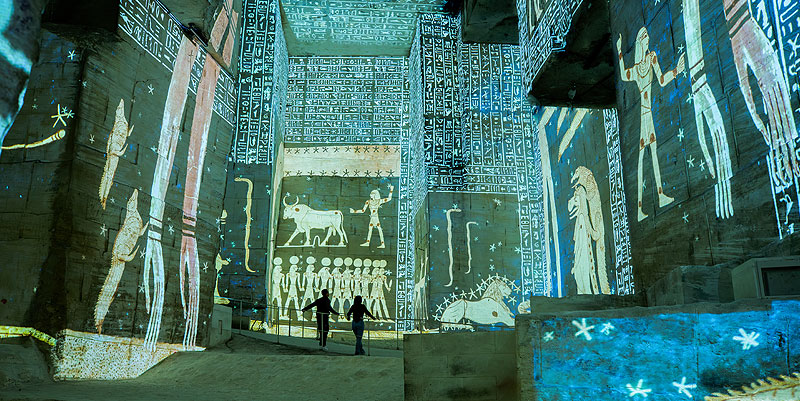
En partenariat avec

- Destinations
- Comparateur
- OÙ ET QUAND PARTIR Accueil du site
- DESTINATIONS Toutes les destinations
- MAGAZINE Idées, infos pratiques, actualités
- COMPARATEUR Trouver un vol ou un hôtel
- DEVISES Conversions de monnaies
- BONS PLANS Les meilleures offres voyage
- SKI Destinations sport d'hiver
- Quand partir

- Quand partir en France
- Le climat mois par mois ▼
- La France en janvier
- La France en février
- La France en mars
- La France en avril
- La France en mai
- La France en juin
- La France en juillet
- La France en août
- La France en septembre
- La France en octobre
- La France en novembre
- La France en décembre
- Toutes les villes
- Avec des enfants
- Activités de plein air
- Santé et sécurité
- Budget et coût de la vie
- Monnaie et change
- Décalage horaire
- Acheter un guide de voyage
Ces 6 beaux villages (pas des plus connus) de Provence à ne pas manquer

Ils ne sont pas forcément toujours labellisés « plus beaux villages » , ni même d’une autre distinction d’ailleurs, mais le fait est que ce sont d’agréables bourgades où s’arrêter lorsqu’on a décidé de se balader en Provence…
Alors, bien sûr quand on évoque la Provence et ses villages, ont pense d’abord aux plus connus que sont les Baux, Gordes, Saint-Paul de Vence, ou encore toutes ces charmantes bourgades de bord de mer qui se sont faites un nom au niveau touristique. Mais pas que. Alors direction d’autres villages (un peu) moins connus…
À découvrir
1- ansouis (vaucluse).
Si vous êtes à la recherche d’un village pittoresque et historique à visiter en Provence, Ansouis est une excellente option. À quelques kilomètres d’ Aix-en-Provence , dans ce Luberon écrasé de soleil, Ansouis est un village médiéval fortifié qui abrite de nombreux monuments historiques. En vous baladant dans ses ruelles ombragées vous découvrirez ainsi l’église Saint-Laurent érigée au XIII e siècle dans le style roman, les derniers vestiges des remparts, la Maison des Consuls parmi toutes les vielles bâtisses du bourg, de même que celle de la Confrérie du Saint-Esprit et son beffroi qui était autrefois une institution de charité ayant vocation à aider les malades, les pauvres et les orphelins.
Et puis il y a le château du XI e siècle. Surplombant la vallée d’un joli panorama, il permettait de par sa position stratégique de surveiller les alentours et l’accès aussi bien à Marseille et la mer qu’à la Vallée du Rhône. Assez bien conservé, vous pouvez le visiter tout comme ses jardins à la française installés sur les terrasses de l’ancienne forteresse d’origine. > Infos : ansouis.fr
2- Coaraze (Alpes-Maritimes)
D’un côté voici les premiers contreforts alpins sur lesquels le bourg a été bâti et de l’autre, à une vingtaine de kilomètres, la mer Méditerranée et son littoral. Sans aucun doute une situation exceptionnelle, à 700 mètres d’altitude, pour cette commune que l’on connait également sous le nom de « village du soleil », construit sur un piton rocheux dominant la vallée.
Au final, vous avez là en effet un superbe panorama dont il faut profiter avant de déambuler dans ce labyrinthe de ruelles étroites aux passages couverts et voûtés que l’on retrouve dans le bourg autour de ces maisons médiévales en pierre. Voir la belle église Saint-Jean-Baptiste et son intérieur à la décoration baroque, plus les peintures murales de la chapelle Saint-Sébastien construite au XVI e siècle à proximité du village afin de le protéger de la peste et des autres calamités, et enfin les murs également peints de la Chapelle Bleue qui reprennent la vie du Christ, de sa naissance à sa résurrection
Et puis pour terminer, partez à la recherche de ces cadrans solaires réalisés il y a plus d’un demi siècle maintenant par quelques célébrités tel Jean Cocteau et qui ornent aujourd’hui divers bâtiments emblématiques de la commune… > Infos : coaraze.fr
3- Ménerbes (Vaucluse)
Bâti sur un éperon rocheux surplombant les vignes et la garrigue, Ménerbes est un charmant village typique du Luberon. Ici, l’abbaye Saint-Hilaire où se mélangent le roman et le gothique, la chapelle Saint-Blaise du XVIII e siècle, le beffroi et son campanile, ainsi que plusieurs superbes bâtisses d’autrefois en pierre le long de ses petites rues contribuent au charme et à une identité architecturale grandement influencée par le Moyen Âge et la Renaissance. Et puis il y a aussi cette Citadelle érigée au XIII e siècle, mais reconstruite plus tard aux XVI e et XIX e siècles, qui joua un rôle important lors des guerres de Religion de la fin du XVI e siècle. Elle aussi fait partie du décor.
Mais Ménerbes c’est également un certain art de vivre. D’ailleurs, dans le bourg, ne manquez pas l’hôtel particulier d’Astier de Montfaucon qui date du XVII e siècle et qui abrite aujourd’hui la Maison de la Truffe et du Vin du Luberon. > Infos : www.menerbes.fr
4- Séguret (Vaucluse)
Avec le village de Séguret vous voilà dans cet arrière pays provençal, plein de charme, de lavandes et de vignobles, écrasé par le soleil en été sous le bruit des cigales et aux hivers doux agréables.
Séguret c’est quelques maisons, une colline battue par le mistral et sur celle-ci les ruines d’un château fort bâti là au Moyen Âge. Parce que, comme pour beaucoup d’autres villages de France , c’est à l’époque médiévale que la commune connaîtra son essor. Mais c’est plutôt ce bâti des siècles suivants que l’on découvrira en déambulant dans les ruelles pavées, ou plutôt caladées comme on dit ici, de la bourgade. Après être entré par une des deux portes, derniers souvenirs des remparts d’autrefois, donnant accès au village, direction la rue des Poternes, celle du Four, la fontaine des Mascarons, le Beffroi ou encore la chapelle Sainte-Thècles et l’église Saint-Denis pour un petit voyage hors du temps.
Et puis, quitte à être là, pourquoi pas une petite découverte oenologique ? Parce que c’est à Séguret et dans sa région que l’on produit le Côtes-du-Rhône villages . > Infos : village-s e guret.fr
5- Tourtour (Var)
C’est dans l’arrière pays varois que vous découvrirez Tourtour. Ce « plus beaux villages de France » perché sur une colline (ce qui lui vaut d’ailleurs le surnom de « Village dans le ciel de Provence ») compte à peine 600 habitants… mais par contre pas mal de visiteurs tout au long de l’année.
Parce que Tourtour ce sont d’abord des vestiges médiévaux autour d’une place se terminant par un jardin en terrasses offrant un joli panorama sur les environs. À cela s’ajoutent des ruelles pavées, des passages voûtés, de vieilles maisons provençales, une agréable place centrale, quelques castelets dont un accueillant la Mairie, une église et plusieurs chapelles, un vieux lavoir, plus un ensemble de huit belles fontaines et un moulin à huile.
Bref, tout un patrimoine bâti, à la limite historique, qui retient l’attention au point que la commune a accueilli ou vu passer au fil des années nombre de célébrités. Dont Bernard Buffet, peintre et graveur français expressionniste, qui finira sa vie ici et qui fera don à la municipalité de deux sculptures en bronze que l’on peut d’ailleurs voir à côté de la Mairie. > Infos : mairie-tourtour.fr
6- Venasque (Vaucluse)
Perché sur un éperon rocheux dominant les vignes et la garrigue dans les environs du Mont Ventoux, Venasque est un superbe village médiéval. Comme beaucoup de bourgade de la région, son riche patrimoine historique se dévoile au fil de ses ruelles escarpées, de ses maisons en pierre dorée, de son église romane Notre-Dame et de son baptistère du VI e siècle qui demeure l’un des plus anciens bâtiments religieux de Provence.
Il faut dire que l’histoire de Venasque remonte à l’Antiquité. Le bourg a en effet été occupé par les Gaulois, les Romains, les Sarrasins et quelques autres avec encore aujourd’hui ces vestiges de remparts et de trois tours qui témoignent de son passé tumultueux… > Infos : www.venasque.fr
Publié le 17 avril 2024 à 7h00 par Michel

Mes premiers voyages... c'était à une époque où le Web n'existait pas, où s'éloigner de quelques centaines de kilomètres de chez soi revêtait déjà un parfum d'aventure, et où on prenait son temps surtout si on n'avait pas beaucoup d'argent.… » Voir la présentation complète
Nous contacter à propos de cet article :
Vous souhaitez faire une remarque sur cet article ou vous représentez la destination et souhaitez la mettre en avant ? Le monde bouge, les destinations également, n’hésitez pas à nous contacter !
Nos autres pages sur la France
- QUAND PARTIR
- Toutes les villes de France
- À VOIR, À FAIRE
- Partir en France avec des enfants
- Activités de plein air en France
- Santé et sécurité en France
- Budget et coût de la vie en France
- Monnaie et change en France
- Fuseau horaire, quelle heure est-il en France ?
- INSPIRATIONS
- Articles et récits sur la France
- Vidéos de France
Suivez-nous sur nos réseaux sociaux :
Où partir : Janvier | Février | Mars | Avril | Mai | Juin | Juillet | Août | Septembre | Octobre | Novembre | Décembre © 2005 - 2024 QuandPartir : Destinations | Facebook | Twitter | YouTube
Où et quand partir - When and Where to Go - Wohin und wann reisen - Dónde y cuándo salir - Dove e quando partire - Onde e quando partir

StarsInsider
Les plus beaux villages perchés d'Europe
Posted: 19 avril 2024 | Last updated: 19 avril 2024
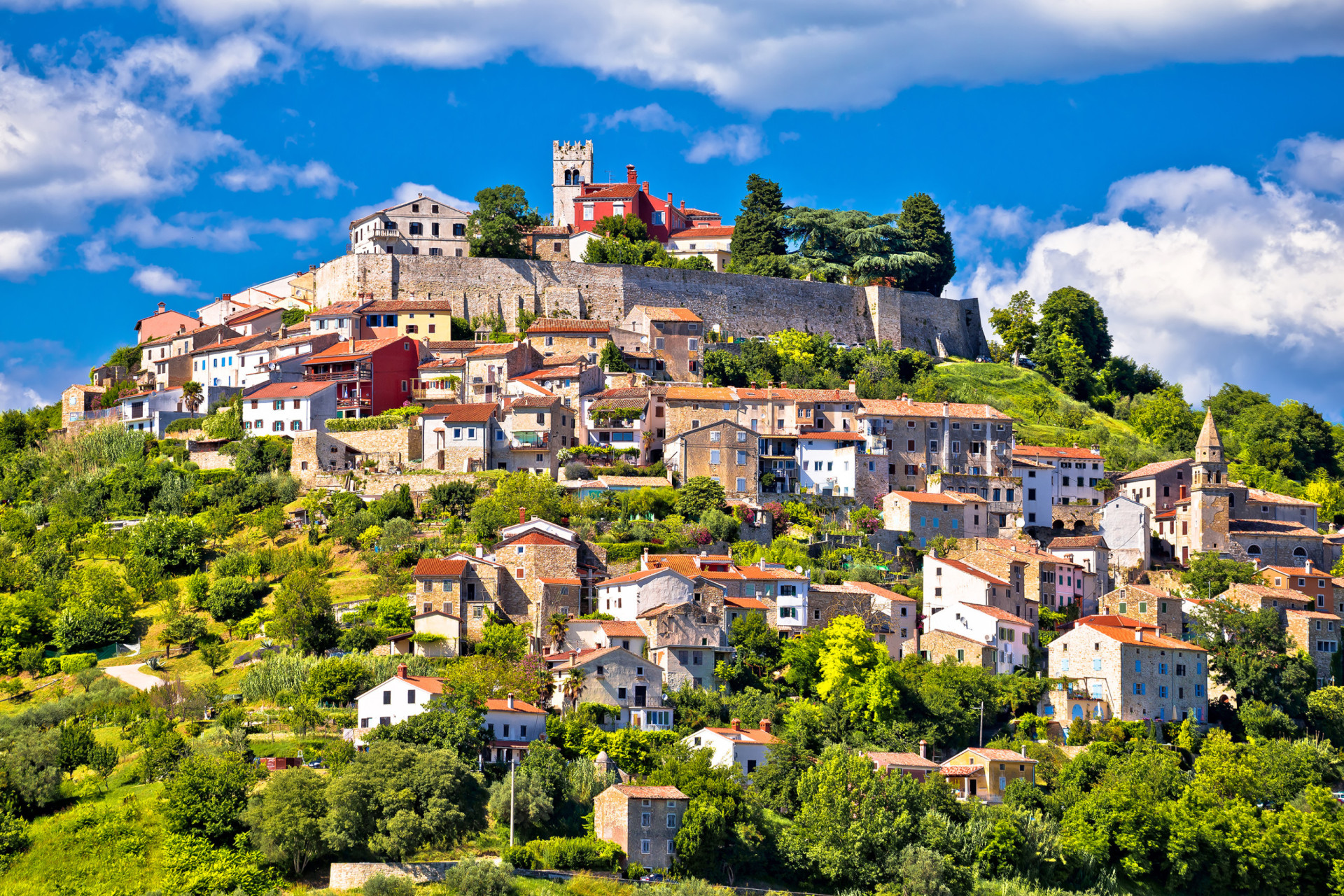
L'Europe a la chance de compter de nombreuses villes et villages perchés, dignes d'un tableau. La plupart d'entre eux sont vieux de plusieurs siècles et ont été bâtis au Moyen Âge pour servir de centres stratégiques en période de conflits. En tant que centres ruraux d'horticulture, ces destinations étaient célébrées pour leur production d'olives et de vin notamment. Aujourd'hui, nombre de ces lieux sont des destinations touristiques populaires, dotées d'une architecture remarquable et d'un sens tangible de la tradition. En fait, si vous prévoyez d'explorer le continent européen, n'oubliez pas d'inclure certains de ces sites dans votre itinéraire de voyage. Vos valises sont prêtes ?
Cliquez ici pour découvrir ces magnifiques endroits.
Tu pourrais aussi aimer: Ces animateurs français qui cartonnaient dans les années 1990
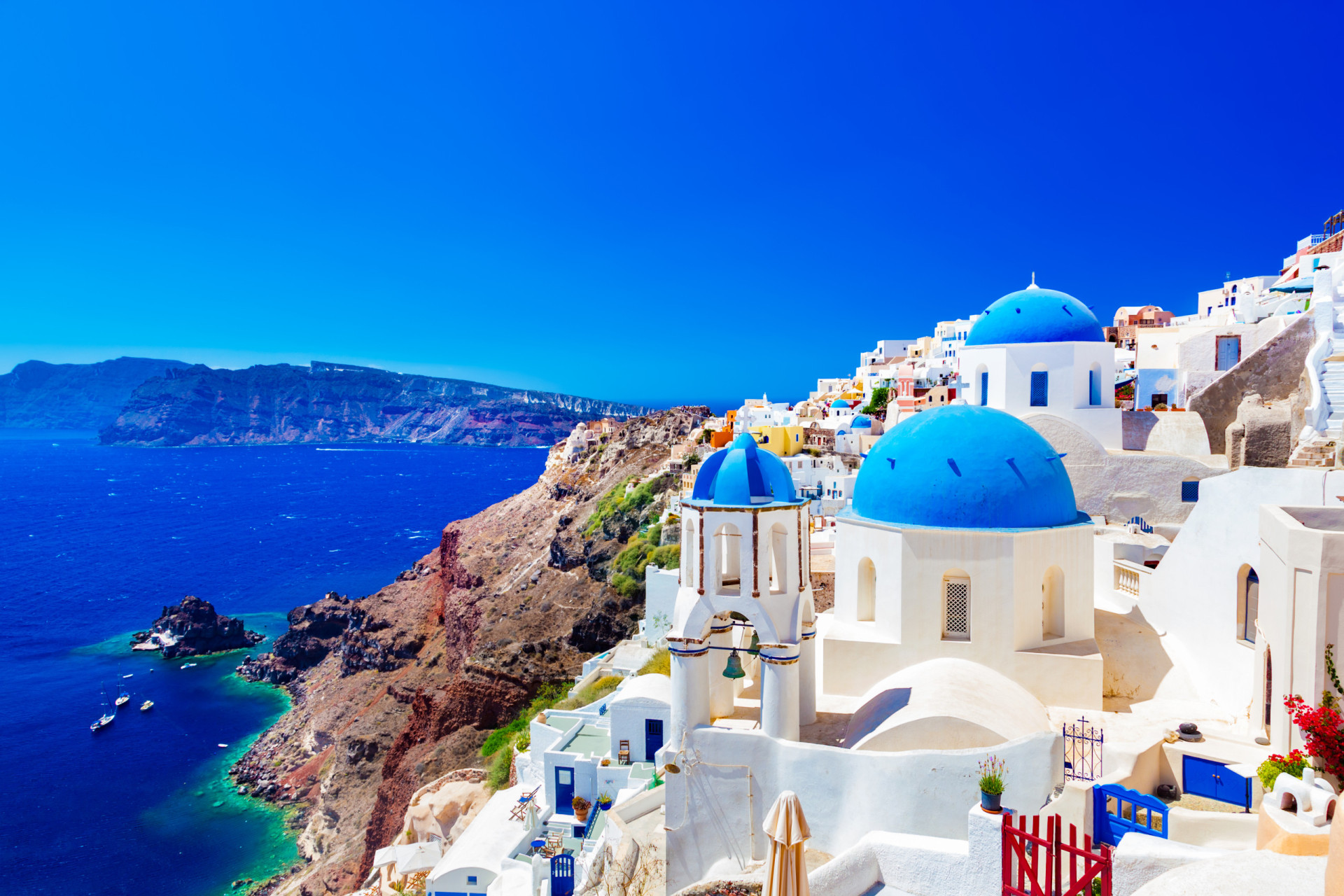
Oia, la préférée des photographes, se trouve sur la pointe nord-ouest de Santorin. Ses maisonnettes blanchies à la chaux, ses vieux moulins à vent et ses églises aux dômes bleus surplombent une vaste caldeira, héritage d'une ancienne éruption volcanique.
Suivez-nous et accédez tous les jours à du contenu exclusif
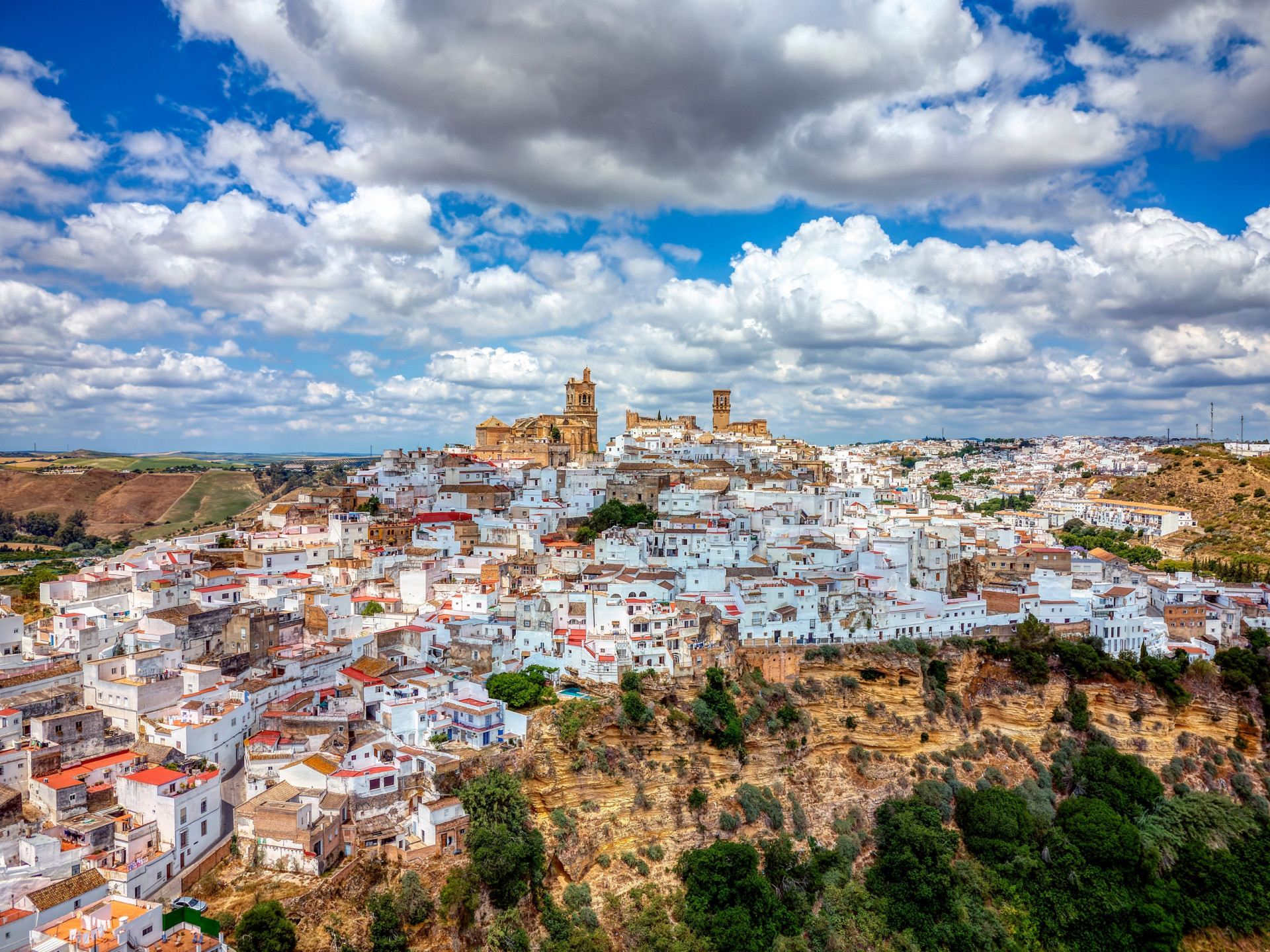
Arcos de la Frontera, Espagne
Probablement le plus célèbre des "pueblos blancos" (villages blancs) d'Andalousie, Arcos de la Frontera abrite un imposant château maure du XIe siècle et la Basílica de Santa María de la Asunción, qui date du XVe siècle.
Tu pourrais aussi aimer:
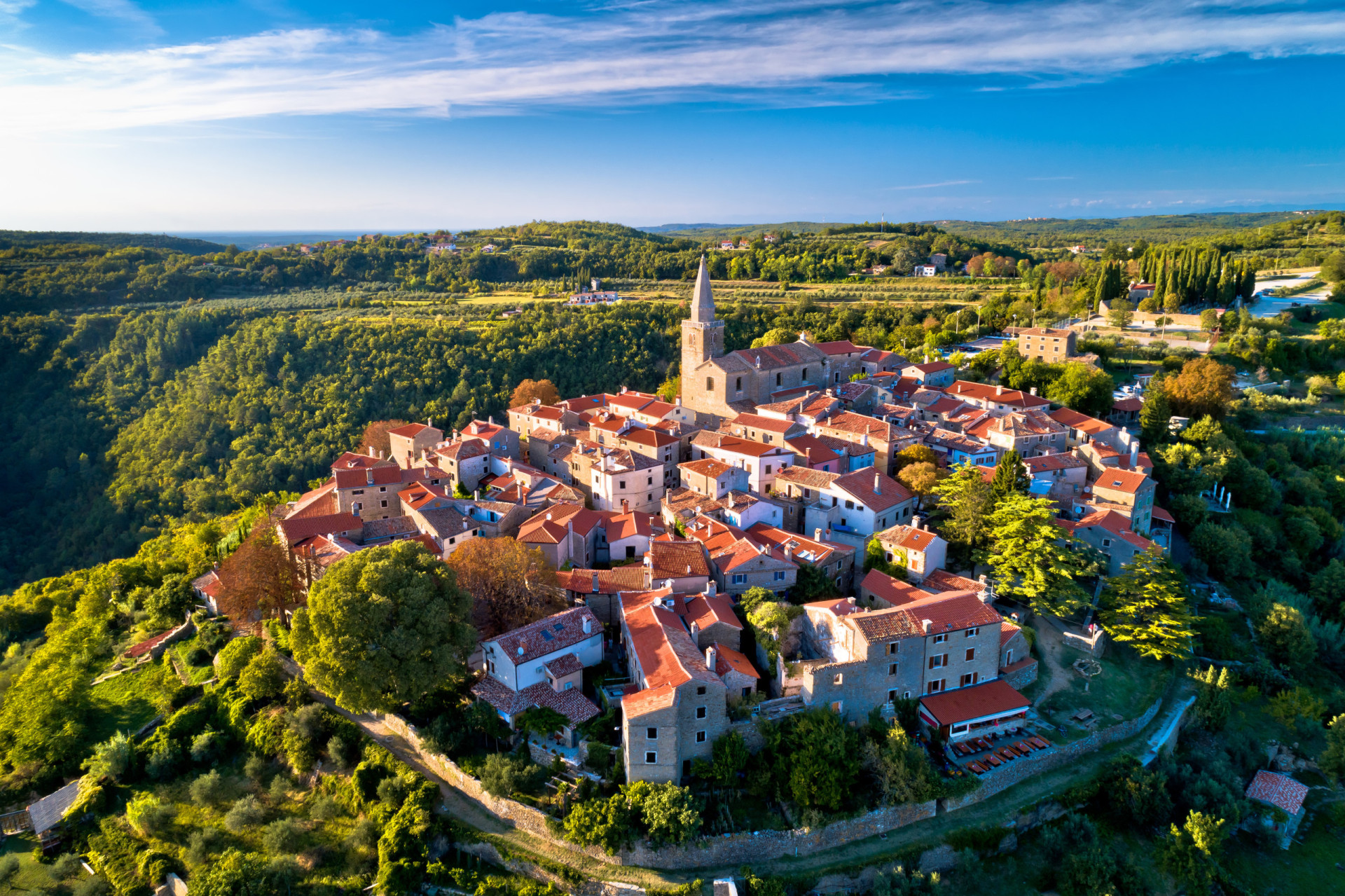
Groznjan, Croatie
La péninsule d'Istrie, en Croatie, regorge de villages pittoresques au sommet des collines, mais c'est Groznjan qui séduit le plus. Dans les années 1950 et au début des années 1960, cette destination idyllique abritait une communauté créative d'artistes, d'écrivains et de musiciens. Aujourd'hui encore, Groznjan offre l'un des plus beaux paysages du pays.
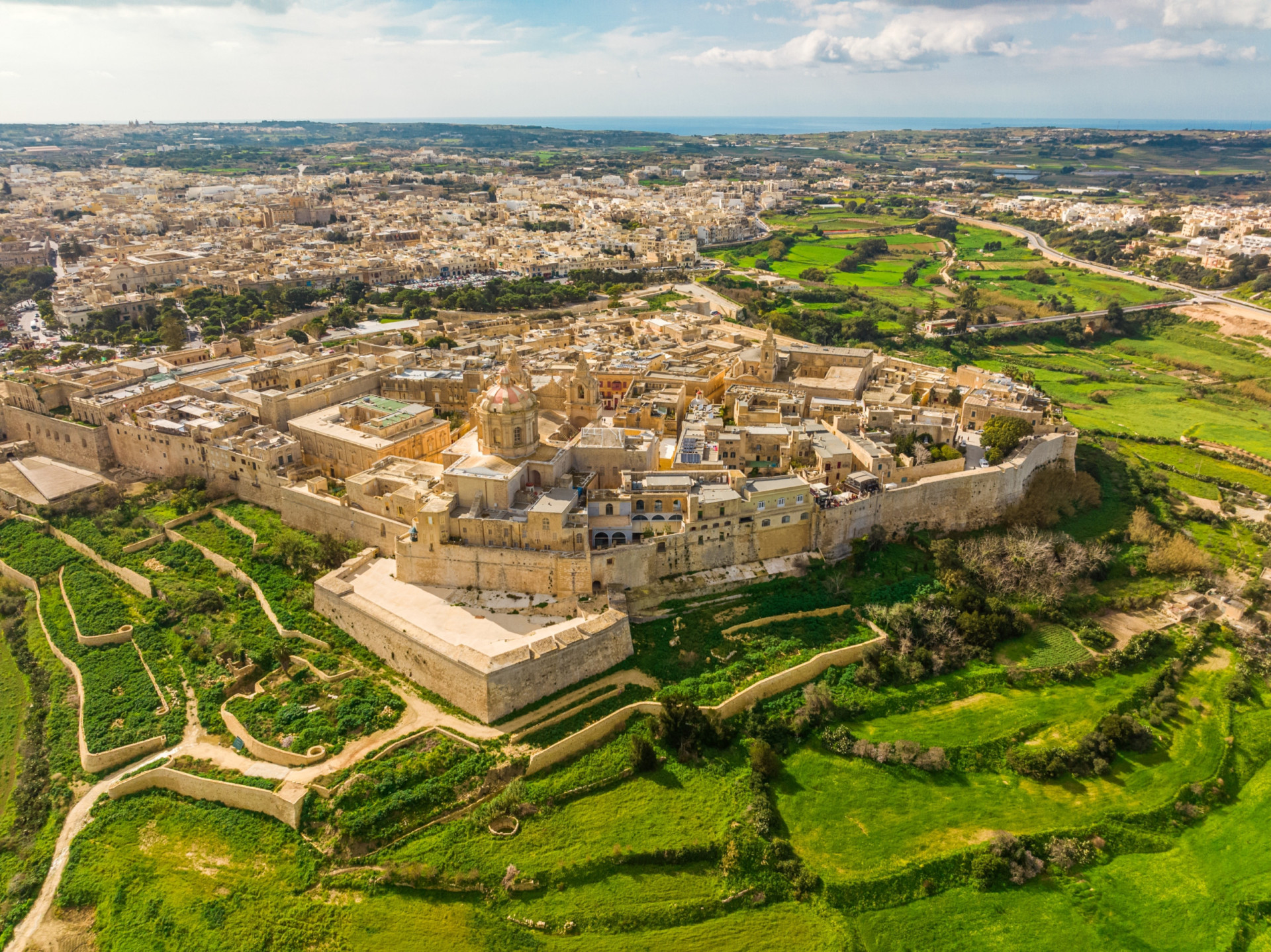
Mdina, Malte
Peu de villages méditerranéens situés au sommet d'une colline sont aussi imposants que Mdina. Cette ville fortifiée a servi de capitale à l'île depuis l'Antiquité jusqu'à la période médiévale. Des palais, des églises et des monastères contribuent à son panorama spectaculaire.
Tu pourrais aussi aimer: Bannies! Ces célébrités ne sont pas bienvenues à l'étranger...
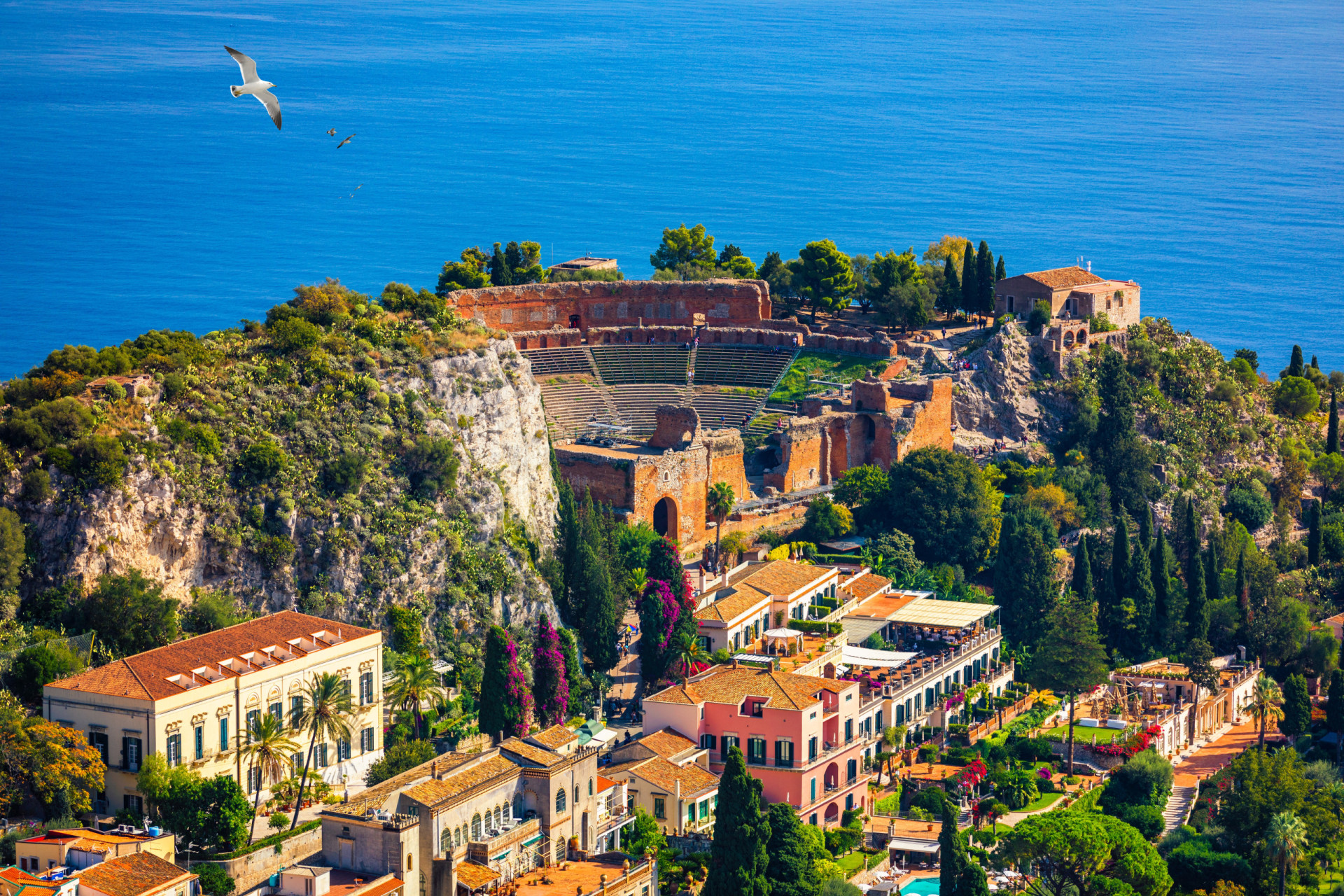
Taormine, Italie
Plus au sommet d'une falaise que d'une colline, Taormine, sur la côte est de la Sicile, attire les visiteurs depuis l'époque du Grand Tour, au XIXe siècle. Surplombant les murs roses et les toits en terre cuite se trouve l'étonnant Teatro Antico, un théâtre grec datant du IIIe siècle av. JC.
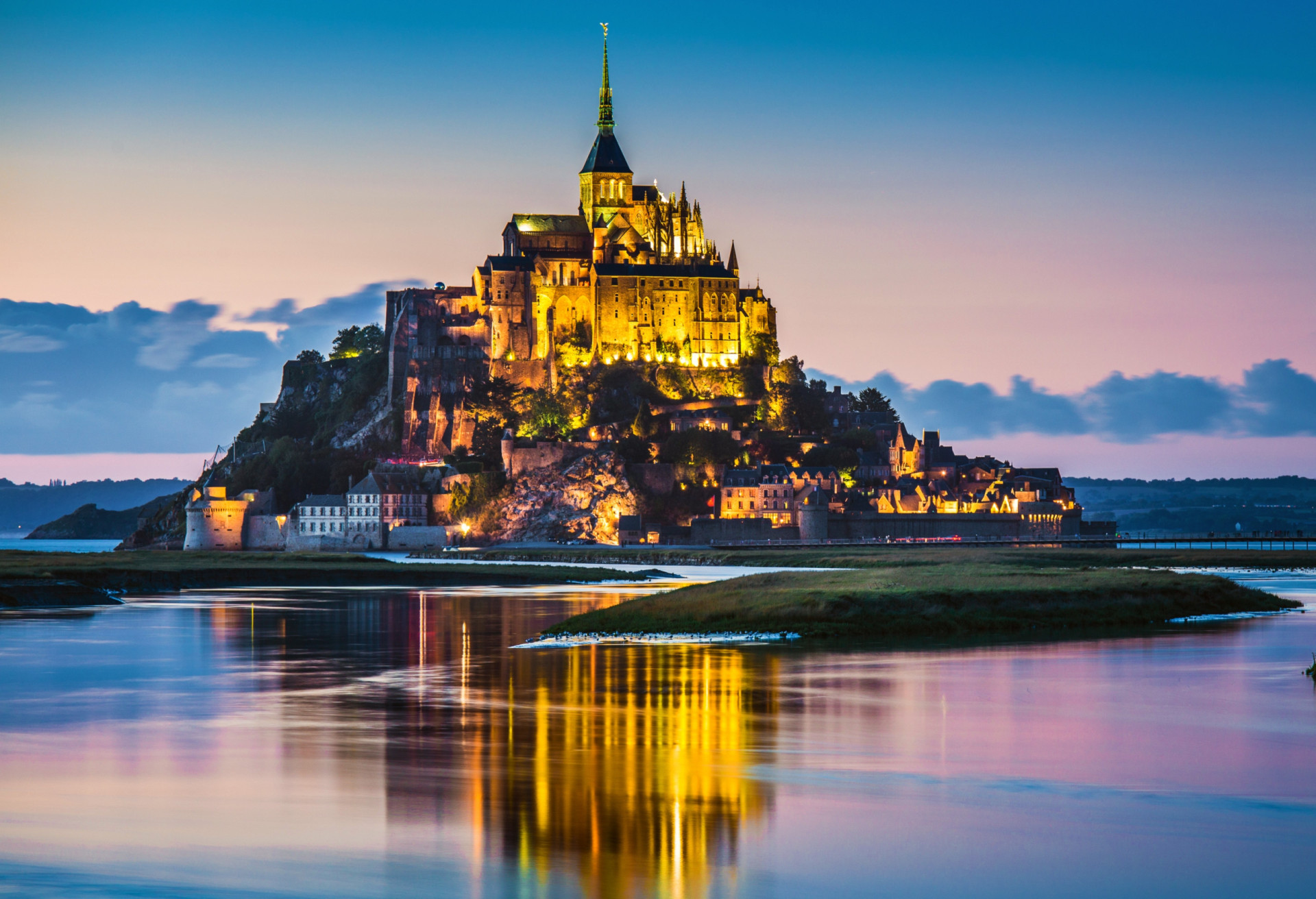
Mont Saint-Michel, France
Le Mont Saint-Michel, peut-être le village perché le plus emblématique de France et certainement l'un des plus célèbres en Europe, se dresse en Normandie. Il se compose d'un ensemble de maisons de pêcheurs, surmontées par une immense abbaye datant du XIe siècle.
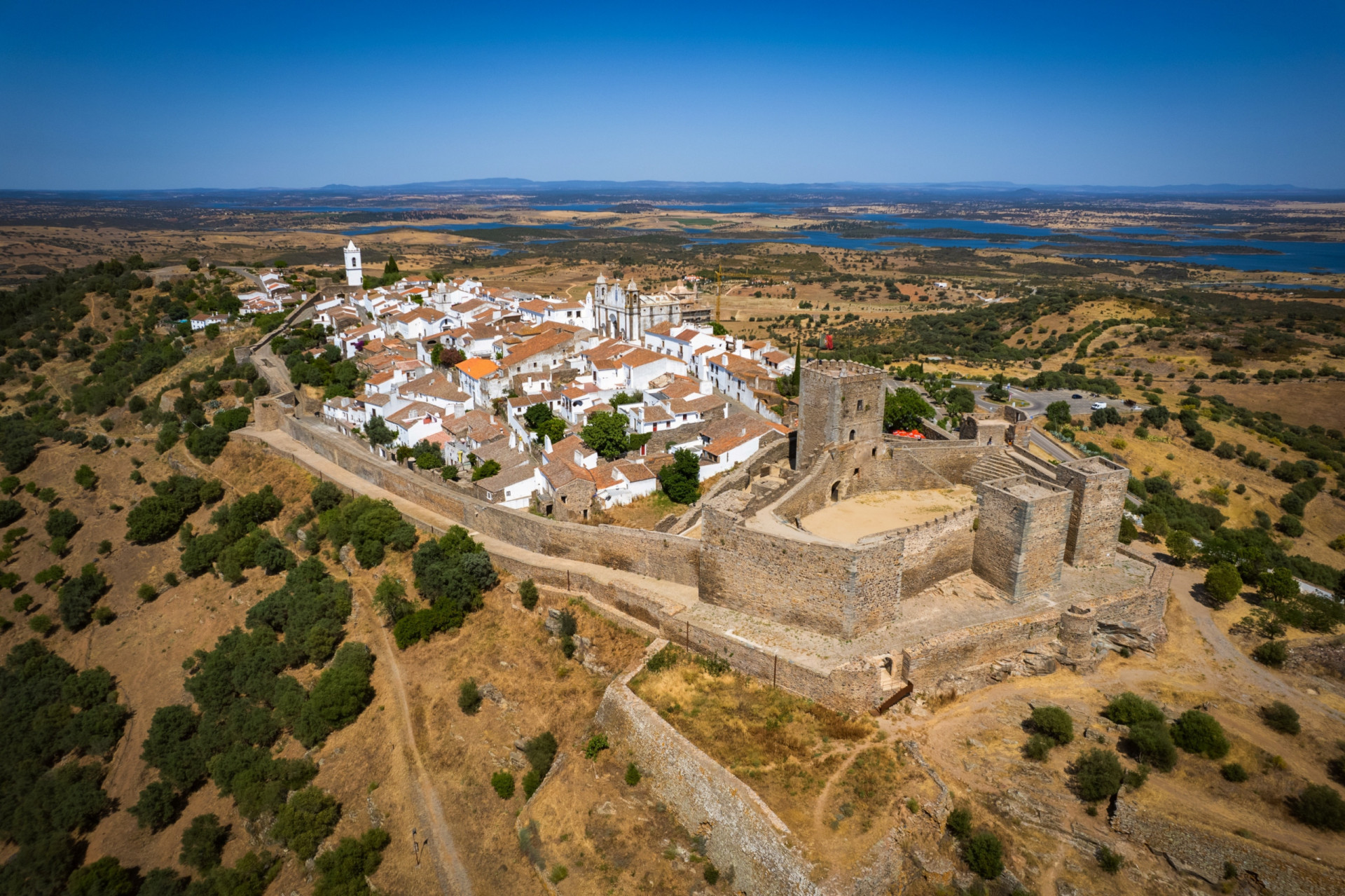
Monsaraz, Portugal
Monsaraz est l'exemple même du village de colline portugais classique. Établi en tant que communauté par les Maures au VIIIe siècle, son château et ses murs datent, pour la plupart, du XIIe siècle. Sa situation élevée dans l'Alentejo, à quelques kilomètres à peine de l'Espagne, a fait de Monsaraz un lieu d'importance stratégique pendant des siècles.
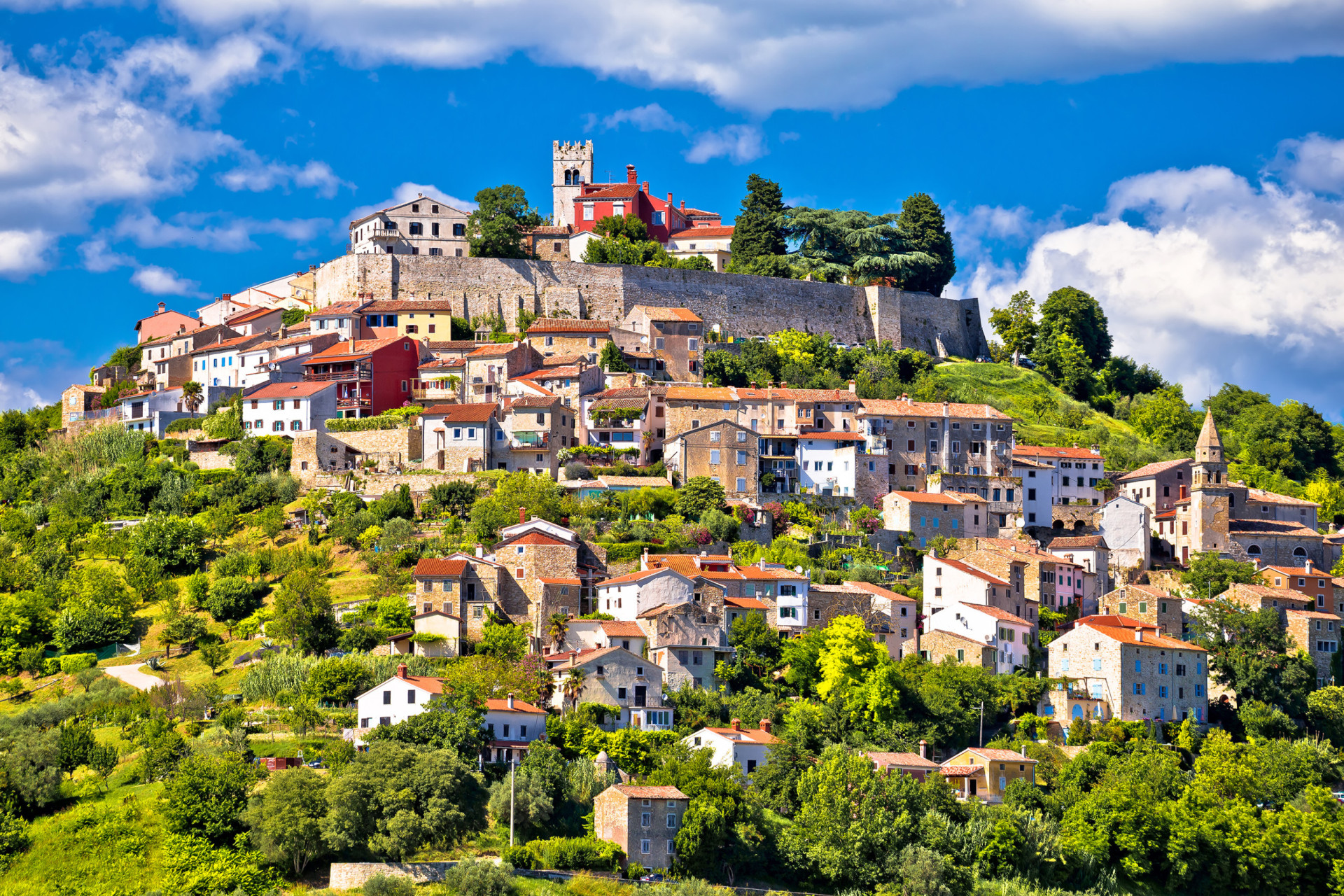
Motovun, Croatie
Le village historique de Motovun, dans le centre de l'Istrie, est en fait d'origine celtique. Son nom est dérivé du mot celtique Montona, qui signifie "ville dans les collines".
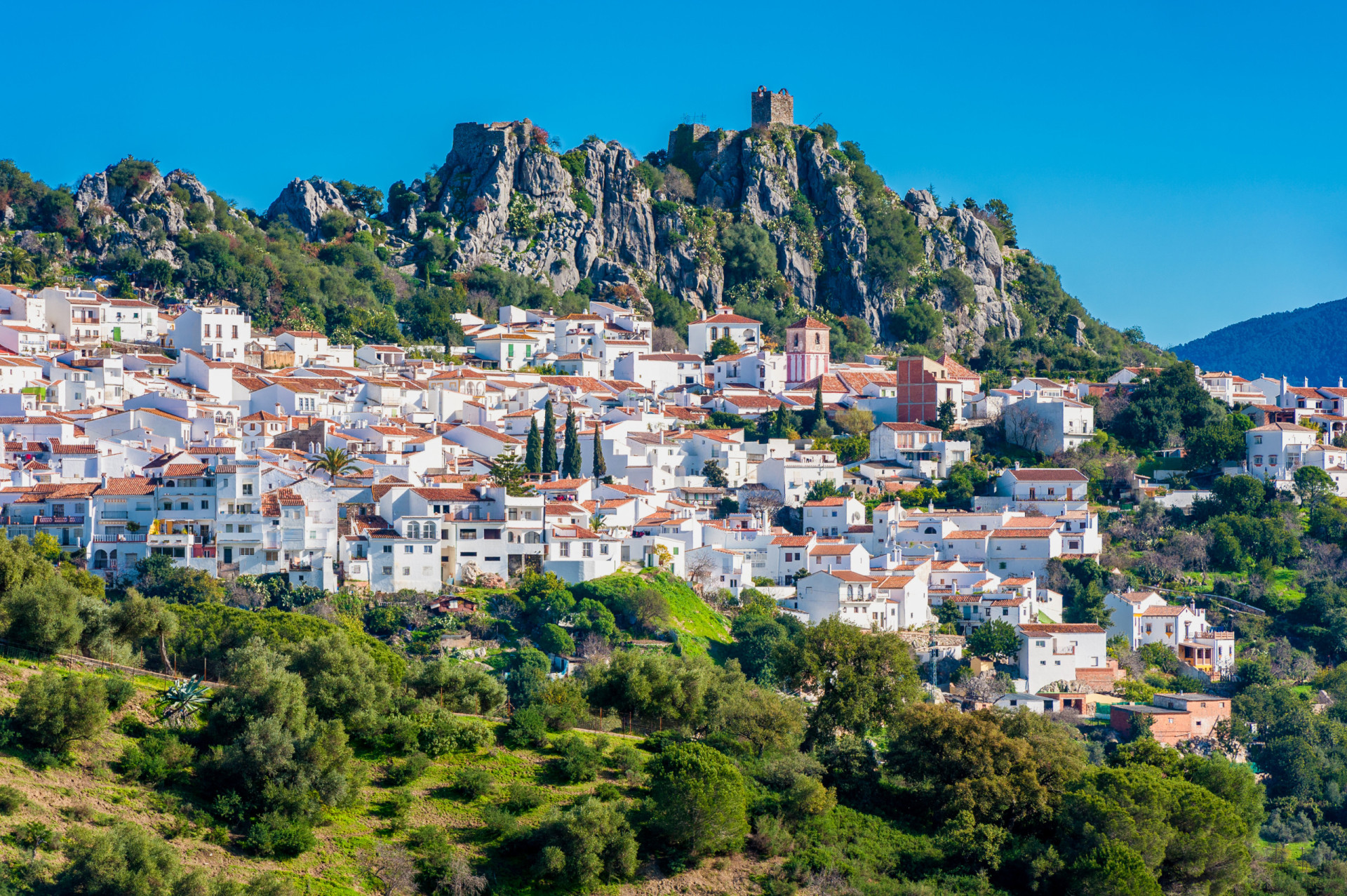
Gaucín, Espagne
Gaucín, en Andalousie, est également appelé le balcon de la Serranía en raison des vues splendides qu'il offre sur les montagnes de Crestellina. Les balcons de ses maisons de campagne permettent également de voir Gibraltar, le détroit de Gibraltar et même le Maroc.
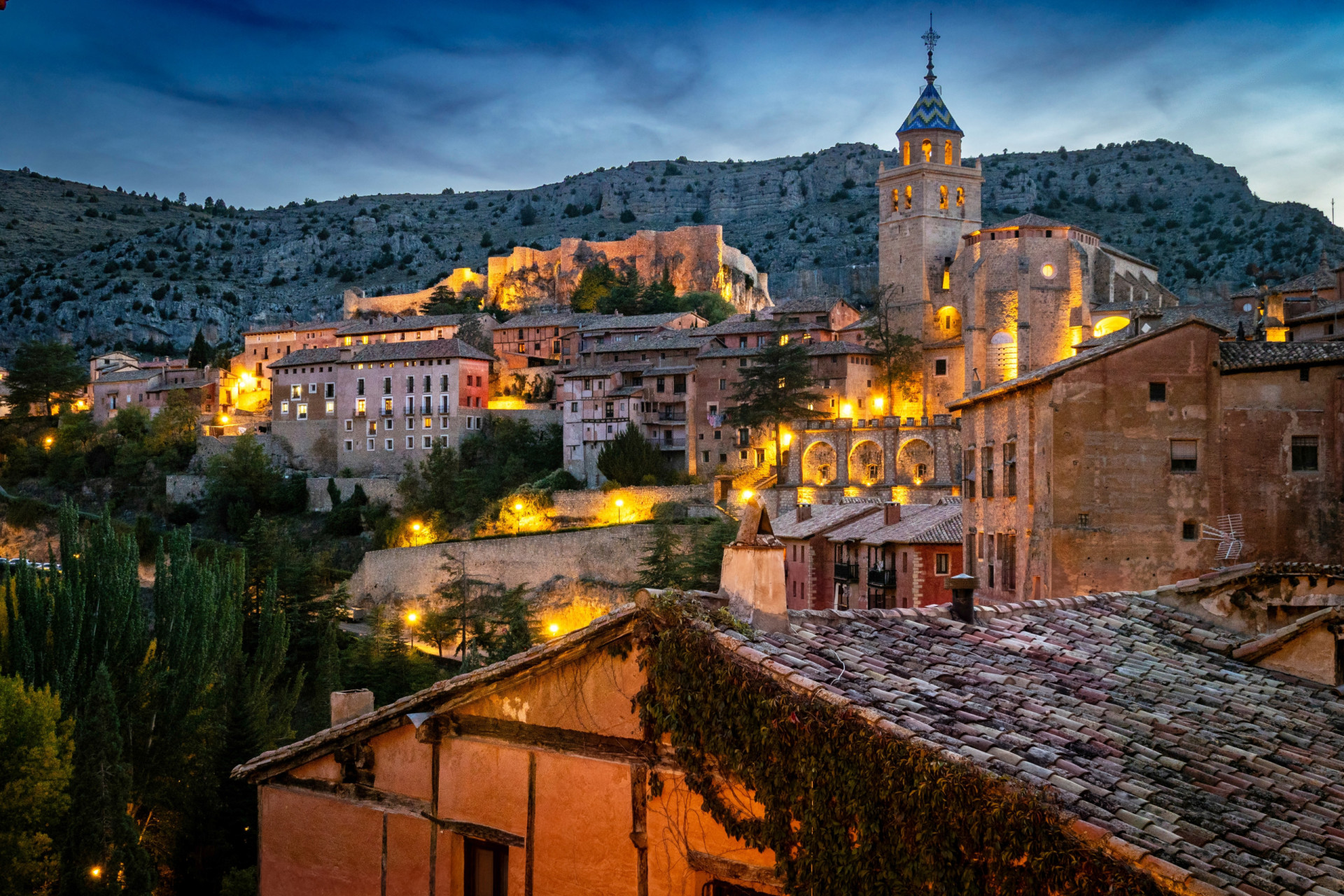
Albarracín, Espagne
Les maisons médiévales de couleur pêche d'Albarracín ne ressemblent à aucun autre endroit en Espagne. Capitale de la comarque montagneuse de la Sierra de Albarracín, Albarracín est entourée de collines rocailleuses et d'un véritable sentiment d'isolement.
Tu pourrais aussi aimer: Quand les stars ferment le claper à leurs ennemis
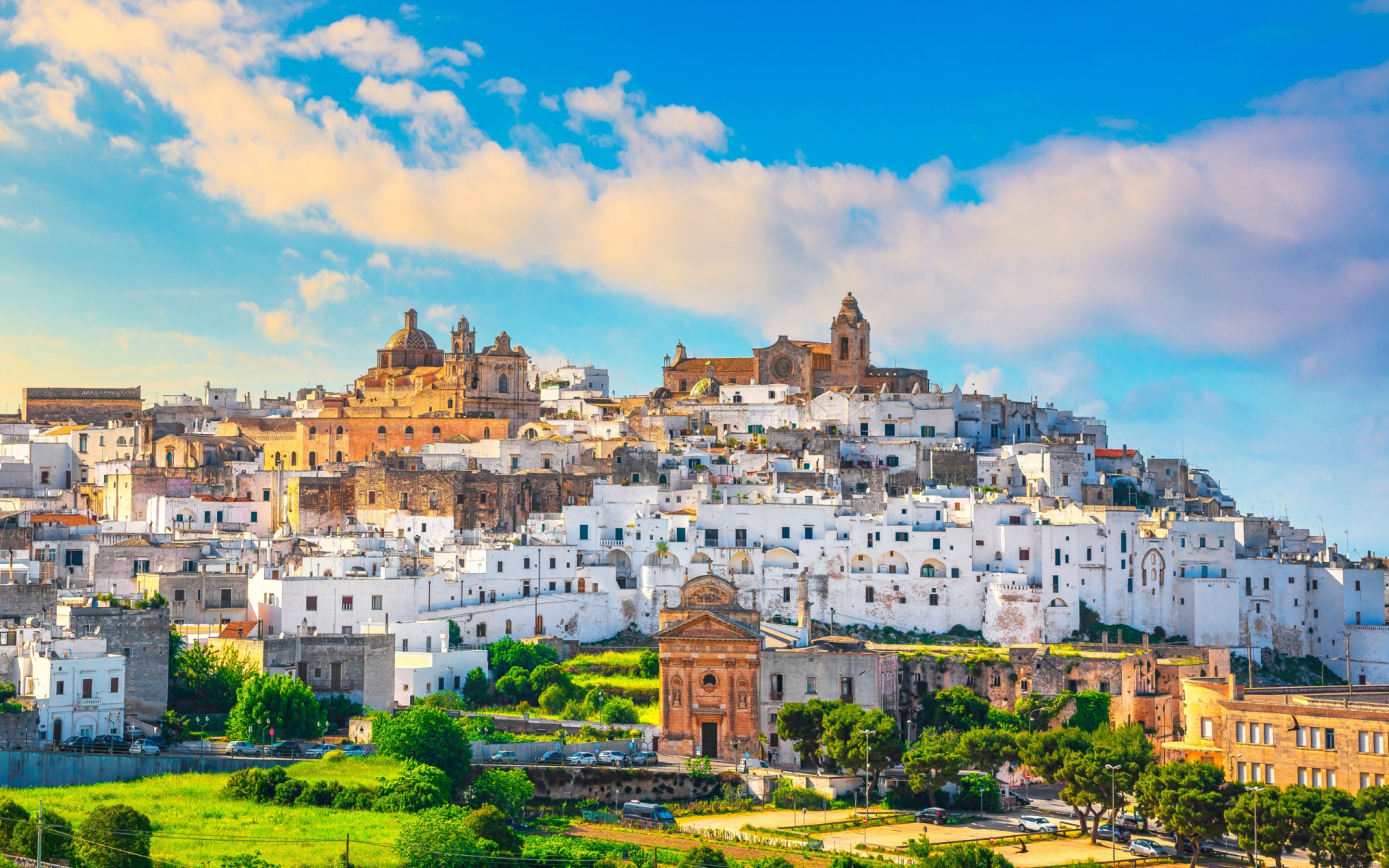
Ostuni, Italie
Ostuni surprend par sa blancheur éclatante de ses bâtiments. Seule la cathédrale et le palais épiscopal reflètent une couleur différente. La ville est située dans la province de Brindisi, une région particulièrement réputée pour la qualité de son huile d'olive et de son vin.
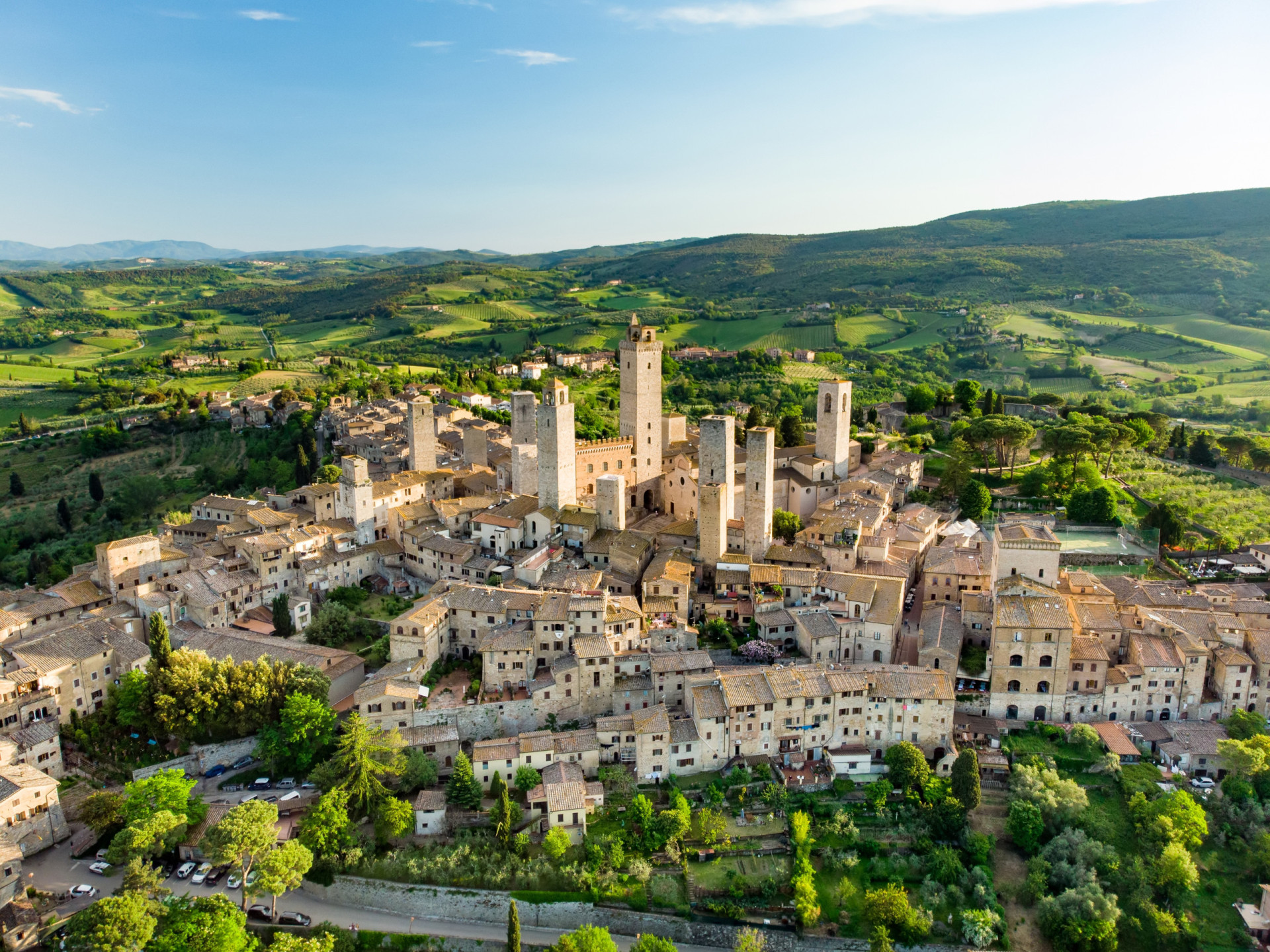
San Gimignano, Italie
Un ensemble de gratte-ciel médiévaux annonce l'emplacement de ce fabuleux joyau situé au sommet d'une colline. En fait, San Gimignano, en Toscane, offre l'un des horizons les plus inoubliables d'Europe, voire du monde.
Tu pourrais aussi aimer: 15 cocktails d'été pour rester au frais
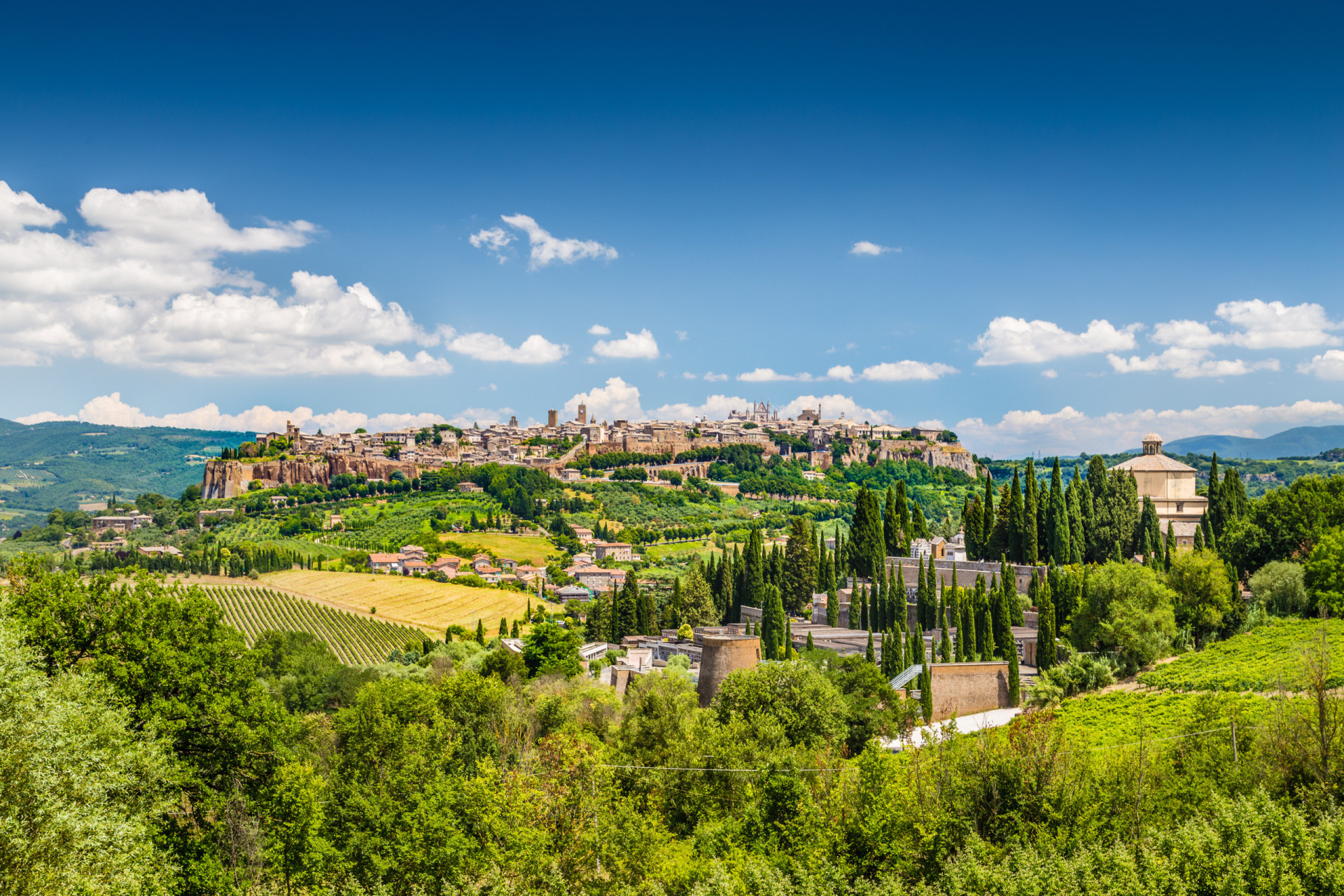
Orvieto, Italie
Située en contrebas d'une grande butte de tuf volcanique, Orvieto semble avoir délibérément évité le radar touristique. Située dans le sud-ouest de l'Ombrie, cette charmante destination est célèbre pour son labyrinthe de grottes et de tunnels qui s'étendent sous ses rues.
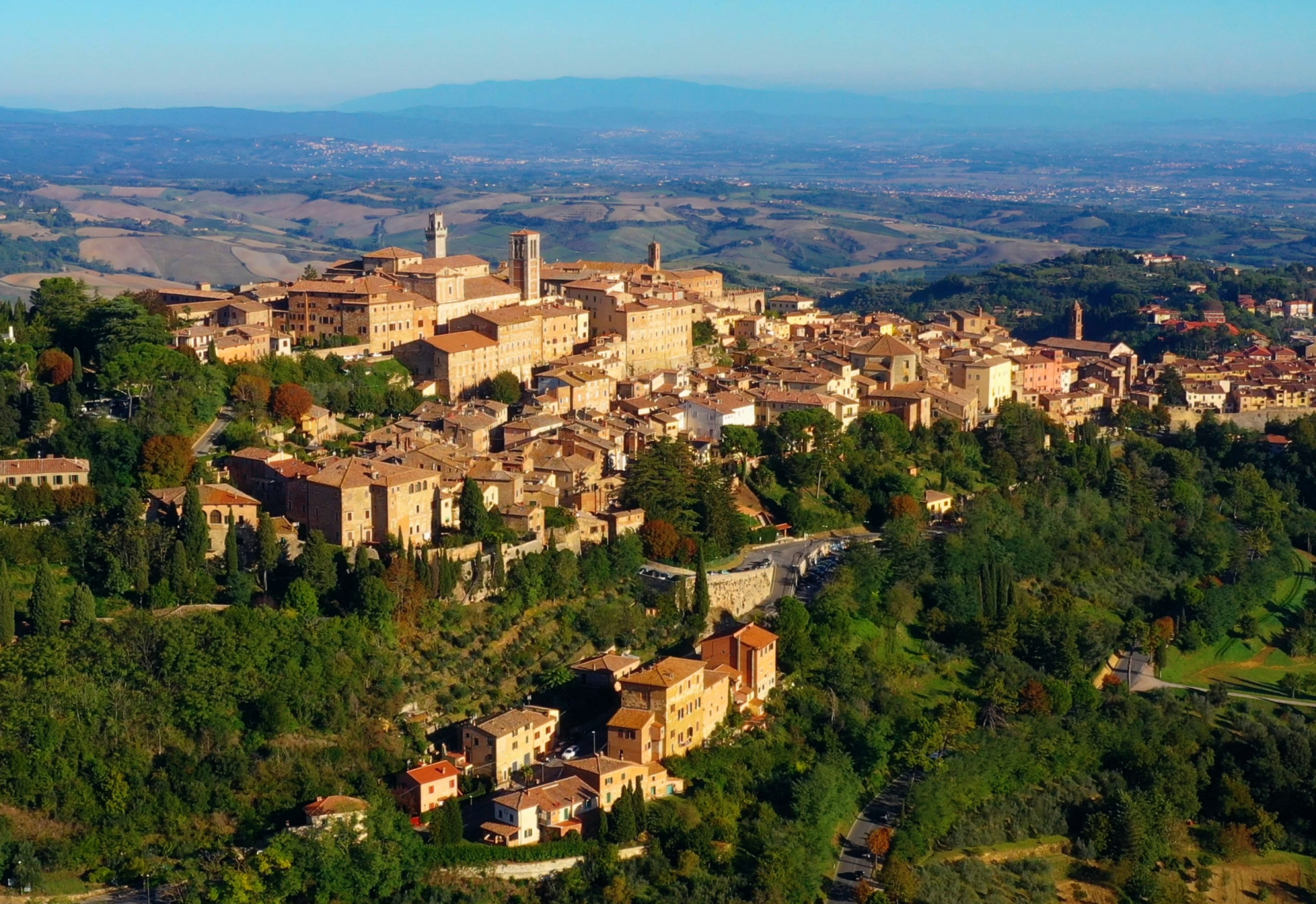
Montepulciano, Italie
L'une des sites les plus agréables de la Toscane, Montepulciano est une ville médiévale et marquée par le style de la Renaissance qui s'élève au-dessus des plaines ondulantes de Sienne.
Tu pourrais aussi aimer: Ces races de chats font de parfaits animaux de compagnie
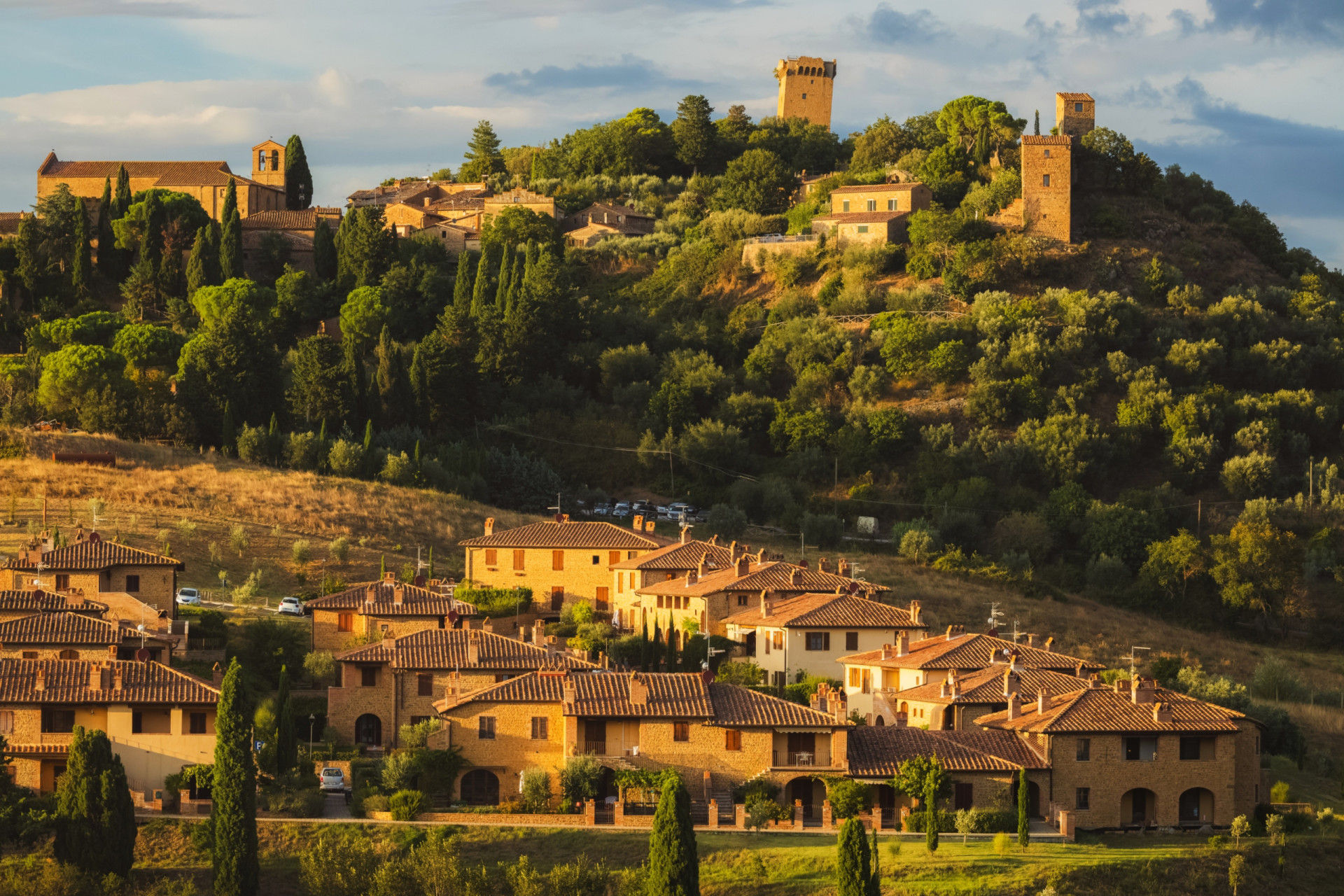
Monticchiello, Italie
Ce village toscan sans prétention est souvent négligé par les touristes à la recherche des villes plus célèbres de la région. Mais ignorer Monticchiello serait une erreur. Située au cœur du Val d'Orcia, cette destination pittoresque est connue pour sa tradition théâtrale particulière, connue sous le nom de "théâtre pauvre", et se transforme chaque été en une salle de spectacle en plein air !
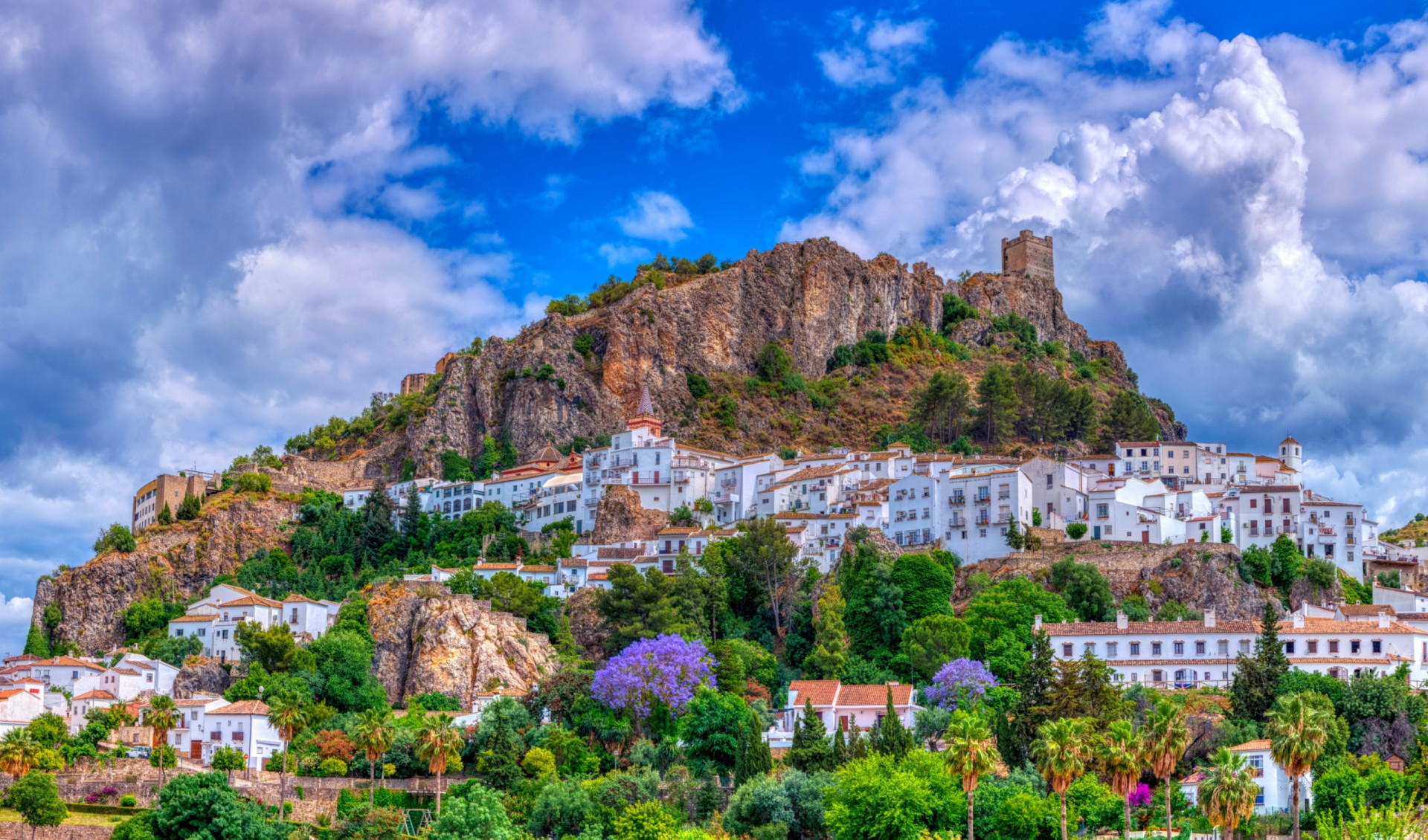
Zahara, Espagne
Située dans la province de Cadix, Zahara de la Sierra jouit d'un cadre exceptionnel, éparpillée sous une cime rocheuse surplombée d'un château en ruine. Ses habitants sont connus sous le nom de "Zahareños", un terme qui vient probablement du mot arabe "sahra", qui signifie désert.
Tu pourrais aussi aimer: Ne les défiez pas, ces stars sont douées en arts martiaux !

Les Baux-de-Provence, France
Situé dans les Alpilles, au nord-est d'Arles, Baux-de-Provence se déploie au sommet d'une saillie rocheuse couronnée d'un château en ruine. Ses chalets en pierre semblent avoir été taillés dans le flanc de la montagne.

Casares, Espagne
Autre "pueblos blancos" andalou à l'image parfaite, Casares présente une collection de maisons en forme de morceaux de sucre, empilées de façon insolite et frôlant les remparts d'un château de l'époque mauresque.
Tu pourrais aussi aimer: Qu'est-ce que l'ascendant en astrologie et comment vous affecte-t-il ?
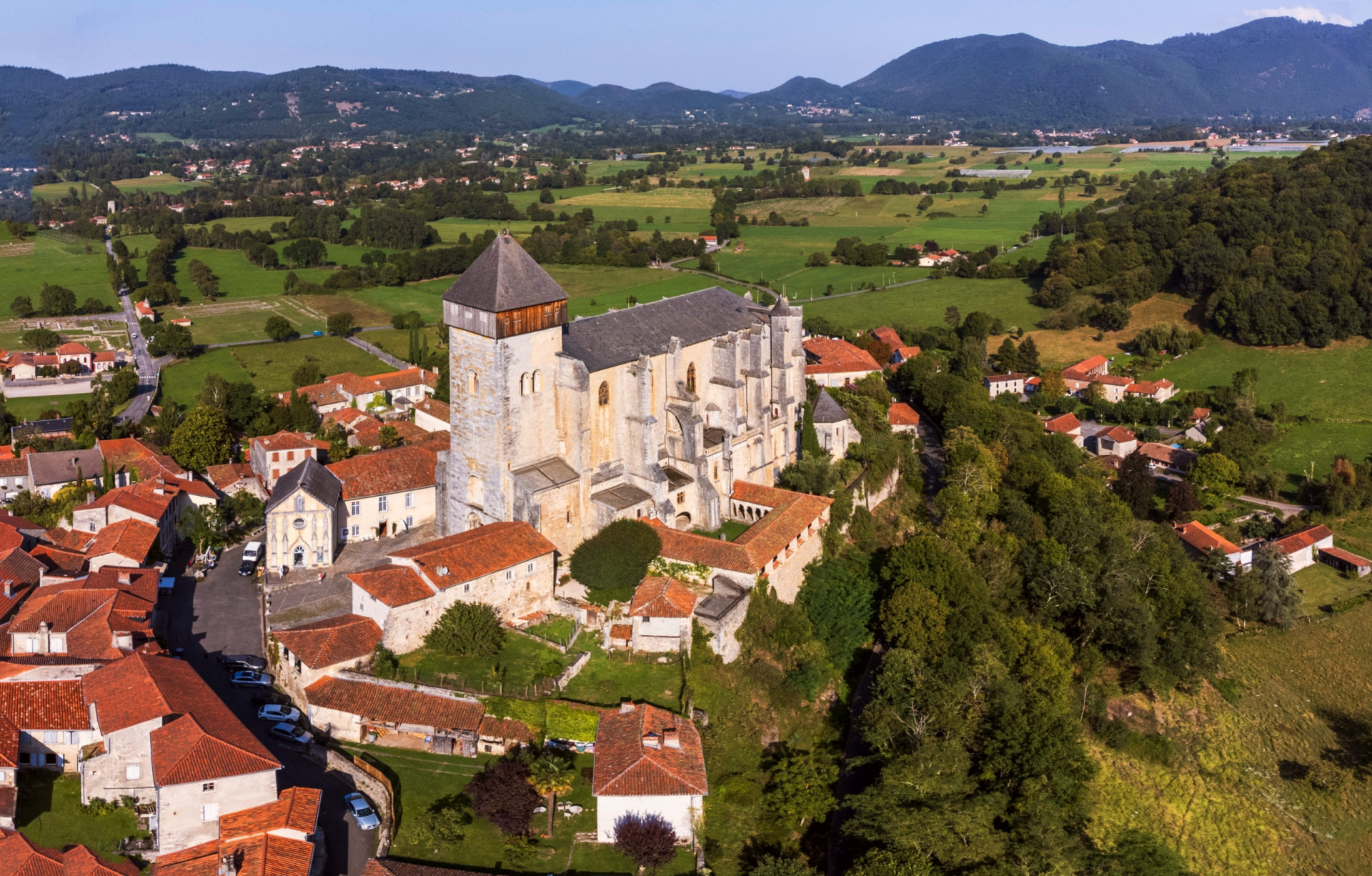
Saint-Bertrand-de-Comminges, France
Saint-Bertrand-de-Comminges est incontournable. Ce joli village perché du département de la Haute-Garonne, dans le sud-ouest de la France, est marqué par l'impressionnante silhouette d'une ancienne cathédrale, dont certaines parties remontent au XIIe siècle.
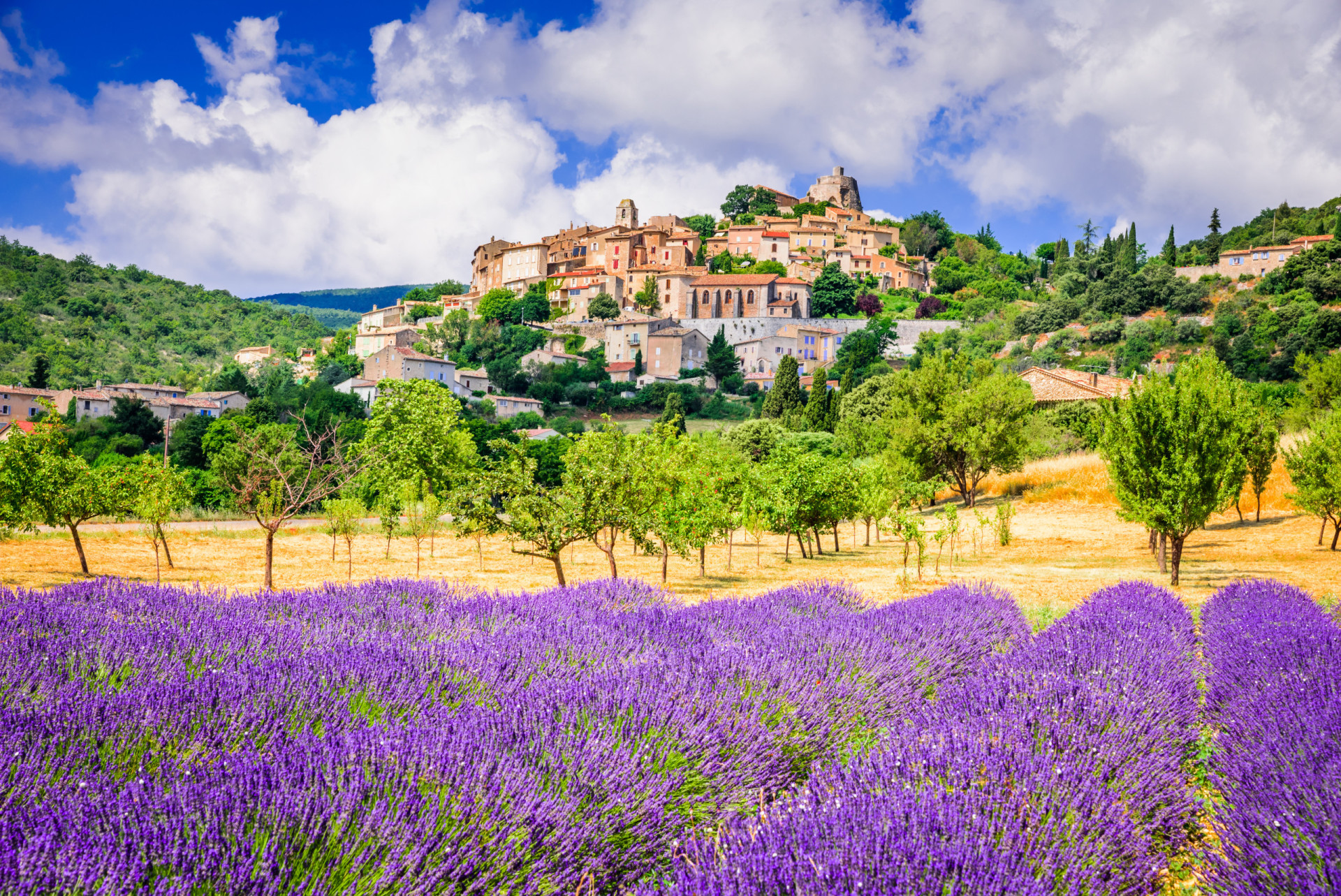
Simiane la Rotonde, France
Visiter Simiane la Rotonde au printemps, c'est s'imprégner du parfum enivrant de la lavande fraîche. Accroché à une petite colline d'un haut plateau des Alpes-de-Haute-Provence, le village est resté pratiquement inchangé depuis des siècles.
Tu pourrais aussi aimer: Ces aliments non-périssables et sains à toujours avoir dans vos placards
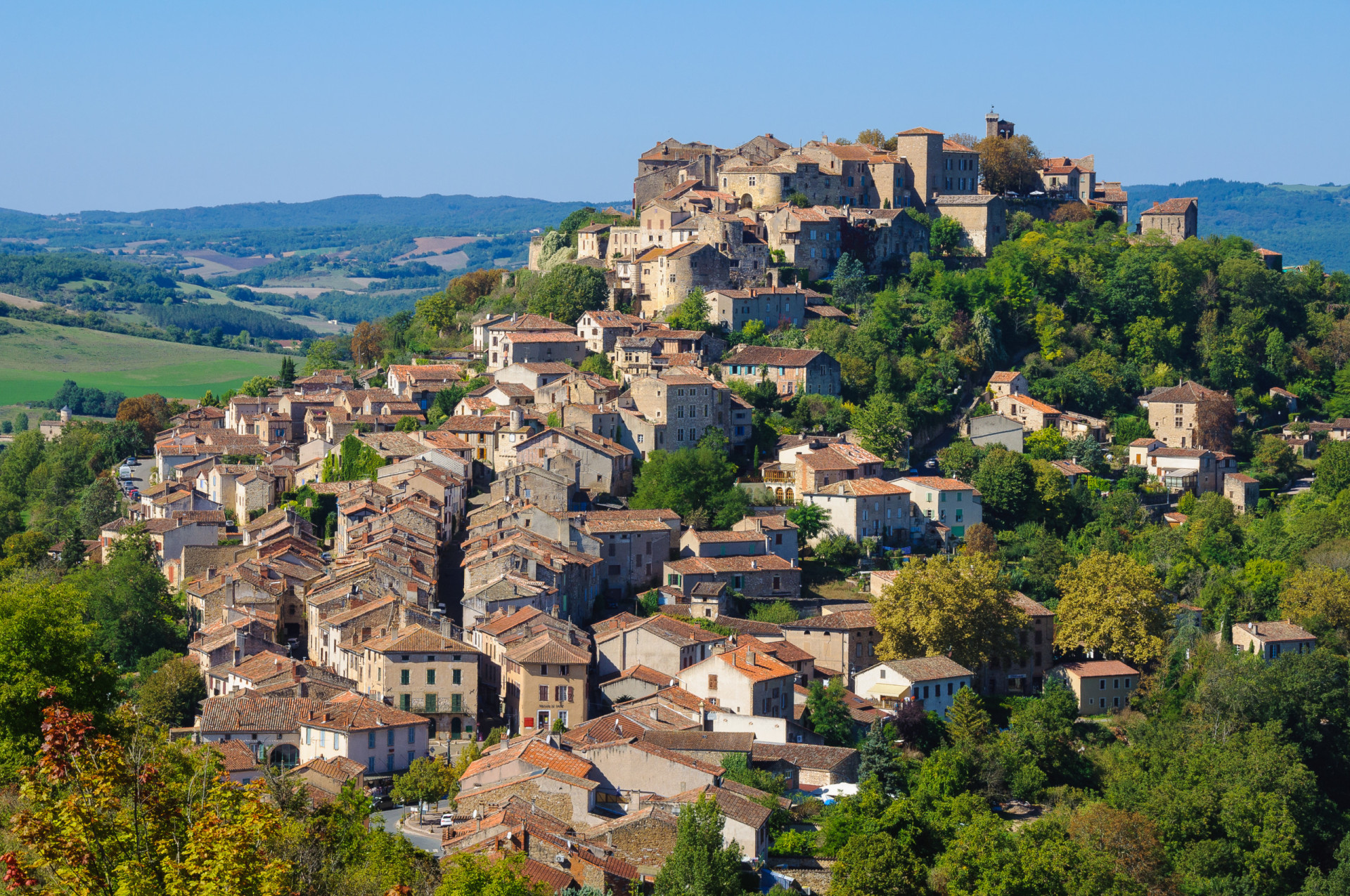
Cordes-sur-Ciel, France
Le nom de cette ville fortifiée d'Occitanie ne laisse aucun doute sur sa localisation, au sommet d'une colline et littéralement au-dessus des nuages qui dominent les zones basses de la vallée.
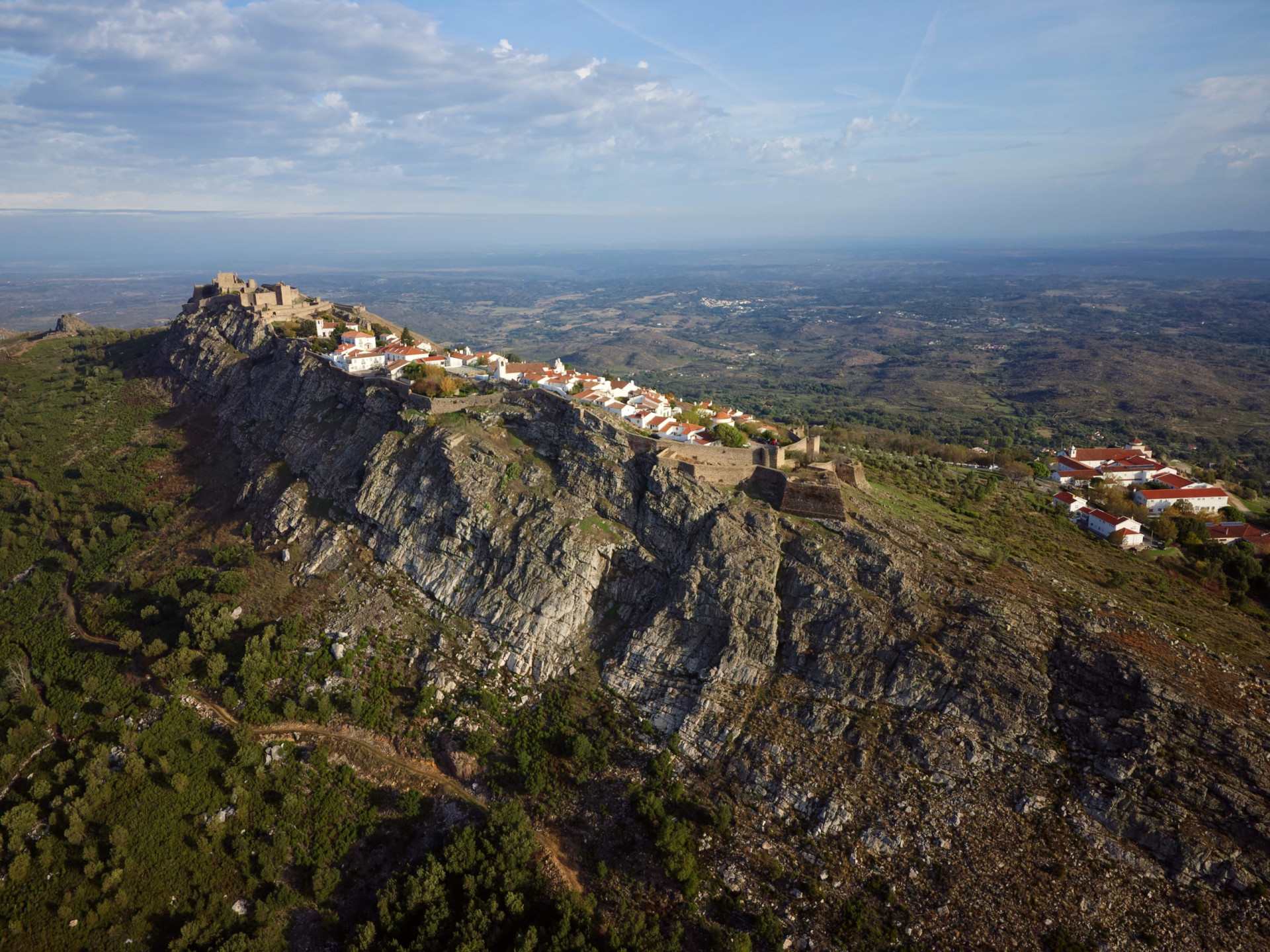
Marvão, Portugal
Marvão, dans la région de l'Alto Alentejo, au Portugal est sans doute le plus spectaculaire des villages perchés du pays. Juché sur un escarpement de la Serra de São Mamede, ce village fortifié remonte au moins au XIIIe siècle.
Tu pourrais aussi aimer: Demi Lovato: retour sur ses plus grands moments
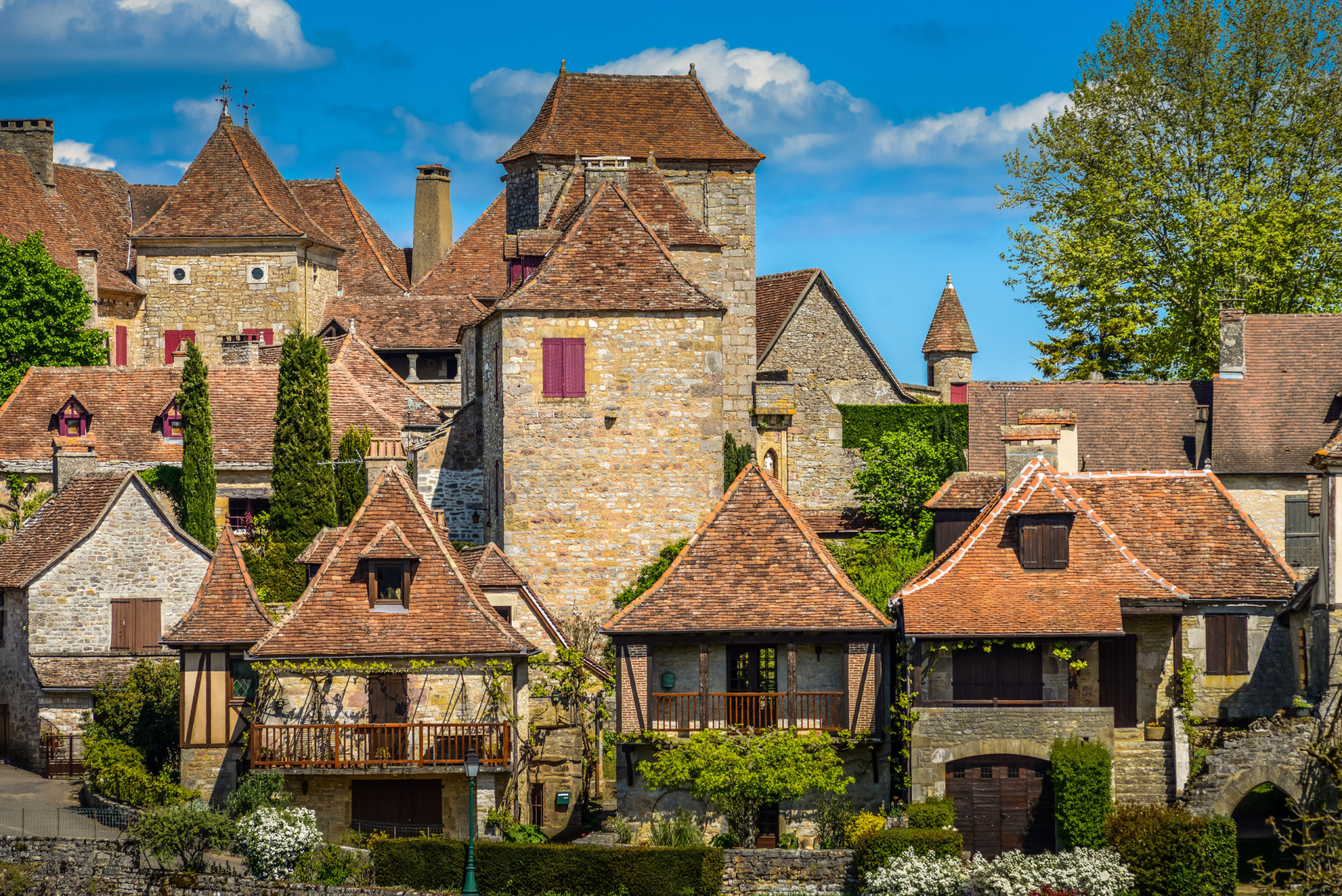
Loubressac, France
Régulièrement cité comme l'un des plus beaux villages de France, le village médiéval de Loubressac, dans la vallée de la Dordogne, est tout construit en pierre ocre et coiffé de toits en tuiles de châtaignier. Il est situé sur un affleurement rocheux et offre une vue imprenable sur la campagne.

Bad Kohlgrub, Allemagne
Où mieux qu'en Bavière pour trouver les destinations les plus pittoresques au sommet des collines allemandes ? Situé à 800 mètres au-dessus du niveau de la mer, le village de Bad Kohlgrub est une station de ski de prédilection en hiver. C'est aussi là que l'on peut s'offrir une thérapie à la tourbe de pin alpin - des massages et des traitements à base d'extraits naturels de conifères qui font des merveilles sur les articulations fatiguées et les courbatures.
Tu pourrais aussi aimer: Les plus grands films de Hugh Grant
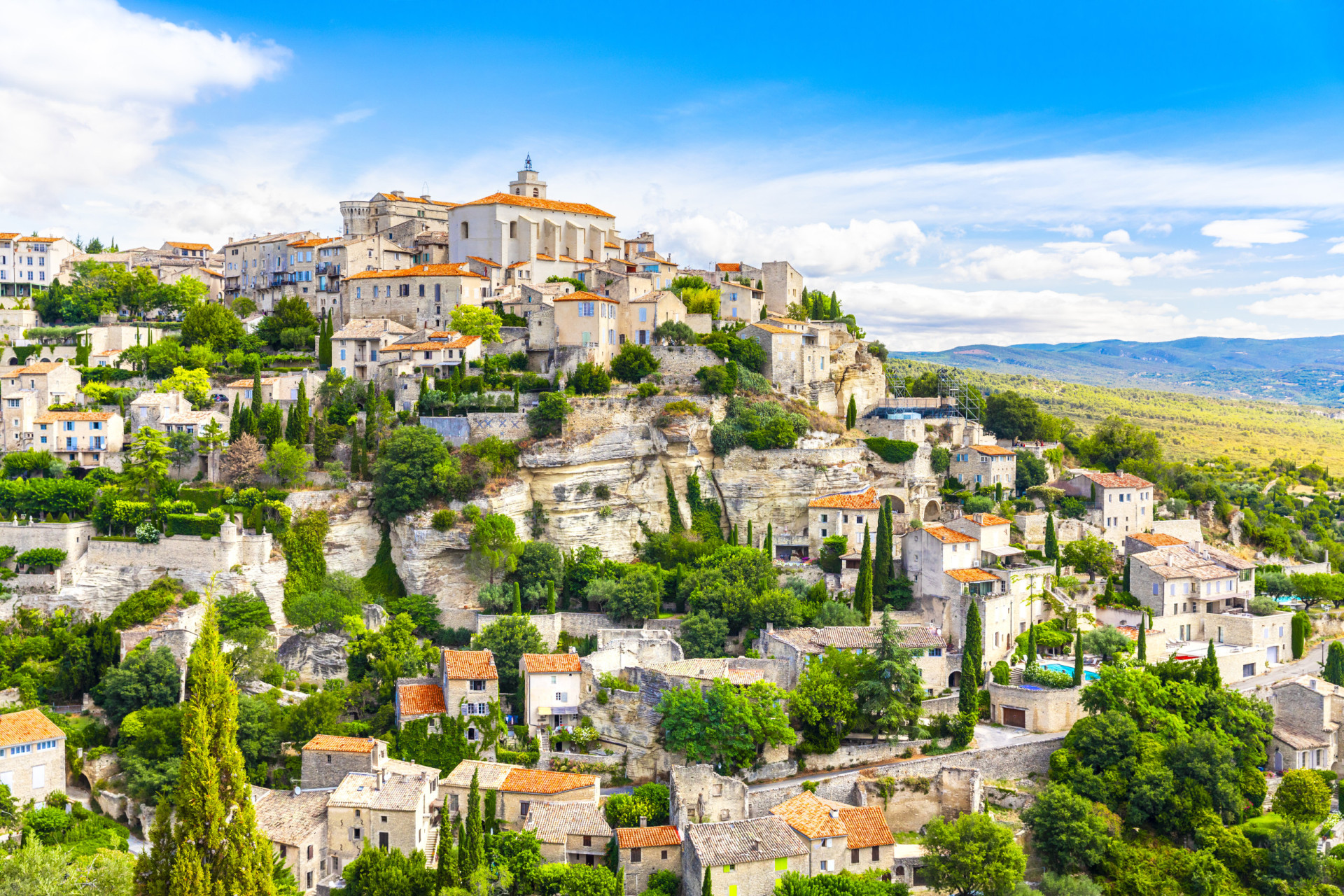
Gordes, France
Si vous voyagez dans la région Provence-Alpes-Côte d'Azur, dans le sud-est de la France, ne manquez pas de faire une halte à Gordes. Ce joli village se trouve sur un gigantesque rocher de calcaire typique des monts du Vaucluse, qui domine la vallée du Calavon.
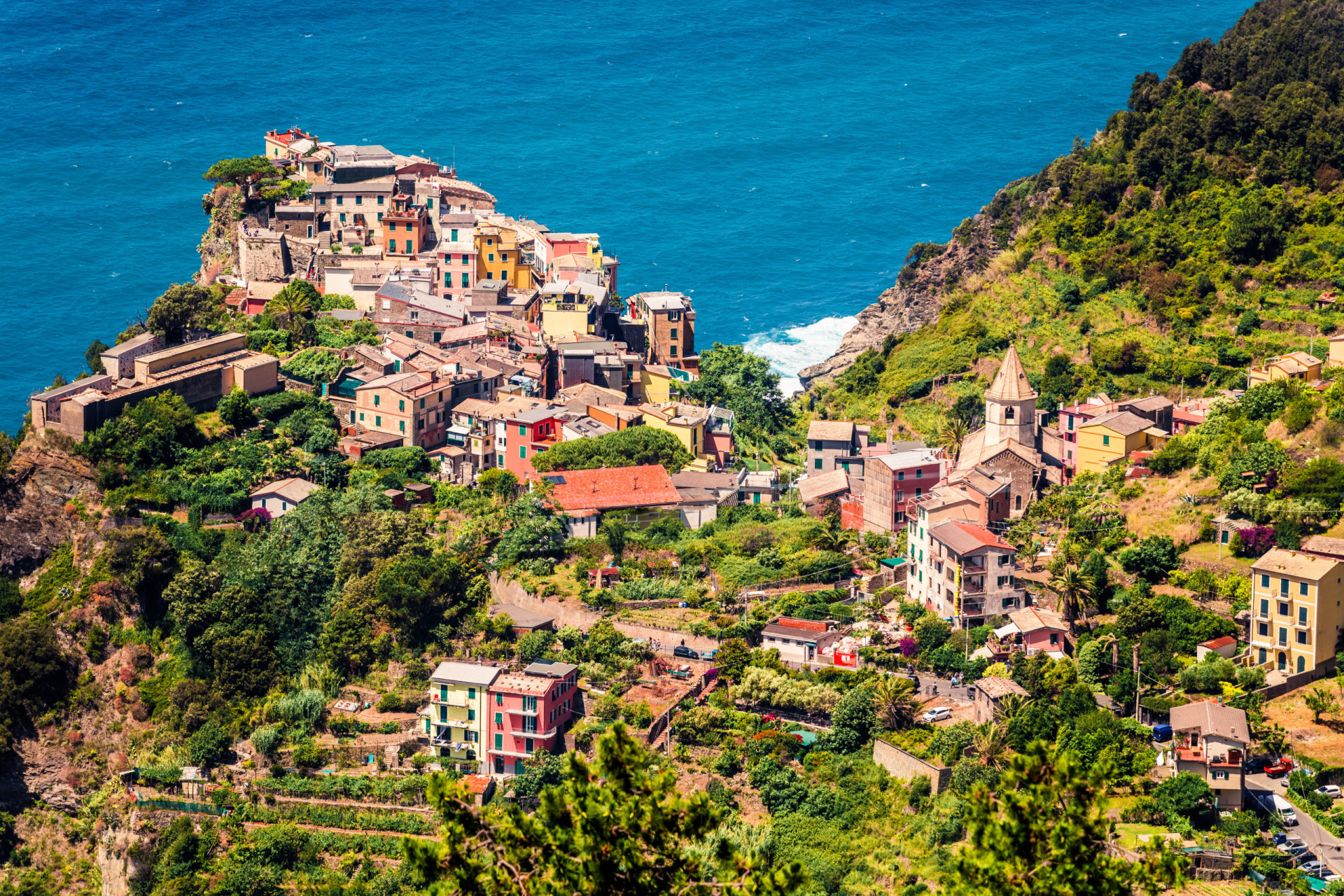
Corniglia, Italie
Corniglia est l'un des célèbres villages des Cinque Terre, un chapelet de villages pittoresques qui bordent la région côtière de la Ligurie. Corniglia se trouve sur un promontoire de 100 mètres entouré sur trois côtés de vignobles et de terrasses. Inutile de dire que les vues sont tout simplement à couper le souffle.
Tu pourrais aussi aimer: Ces films sur l'histoire des Noirs à ne pas manquer !
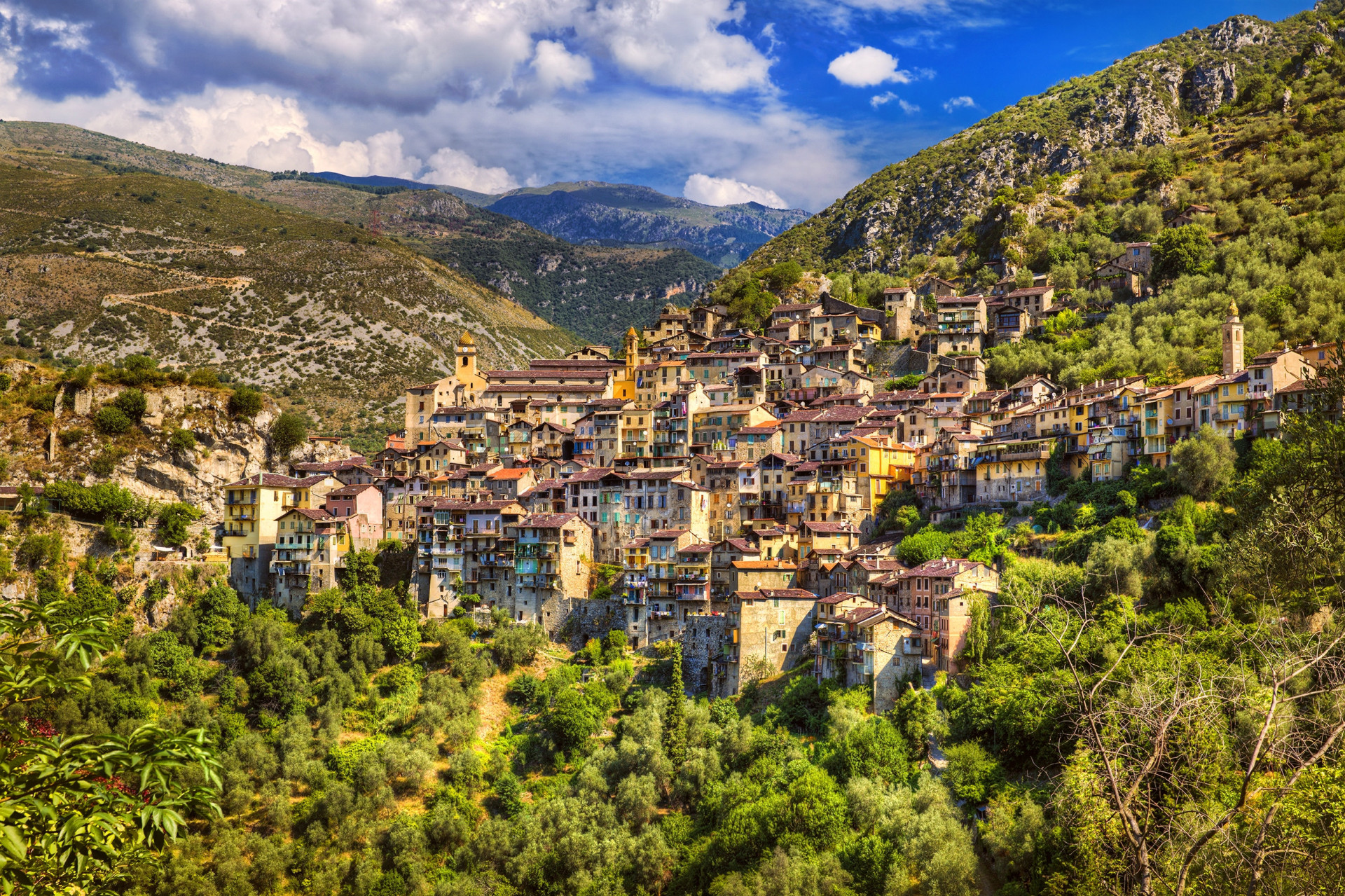
Saorge, France
Saorge s'étend en arc de cercle autour de la face concave des montagnes des Alpes-Maritimes. Le village est affectueusement surnommé le "Tibet français" en raison de sa situation relativement isolée sur les hauteurs.
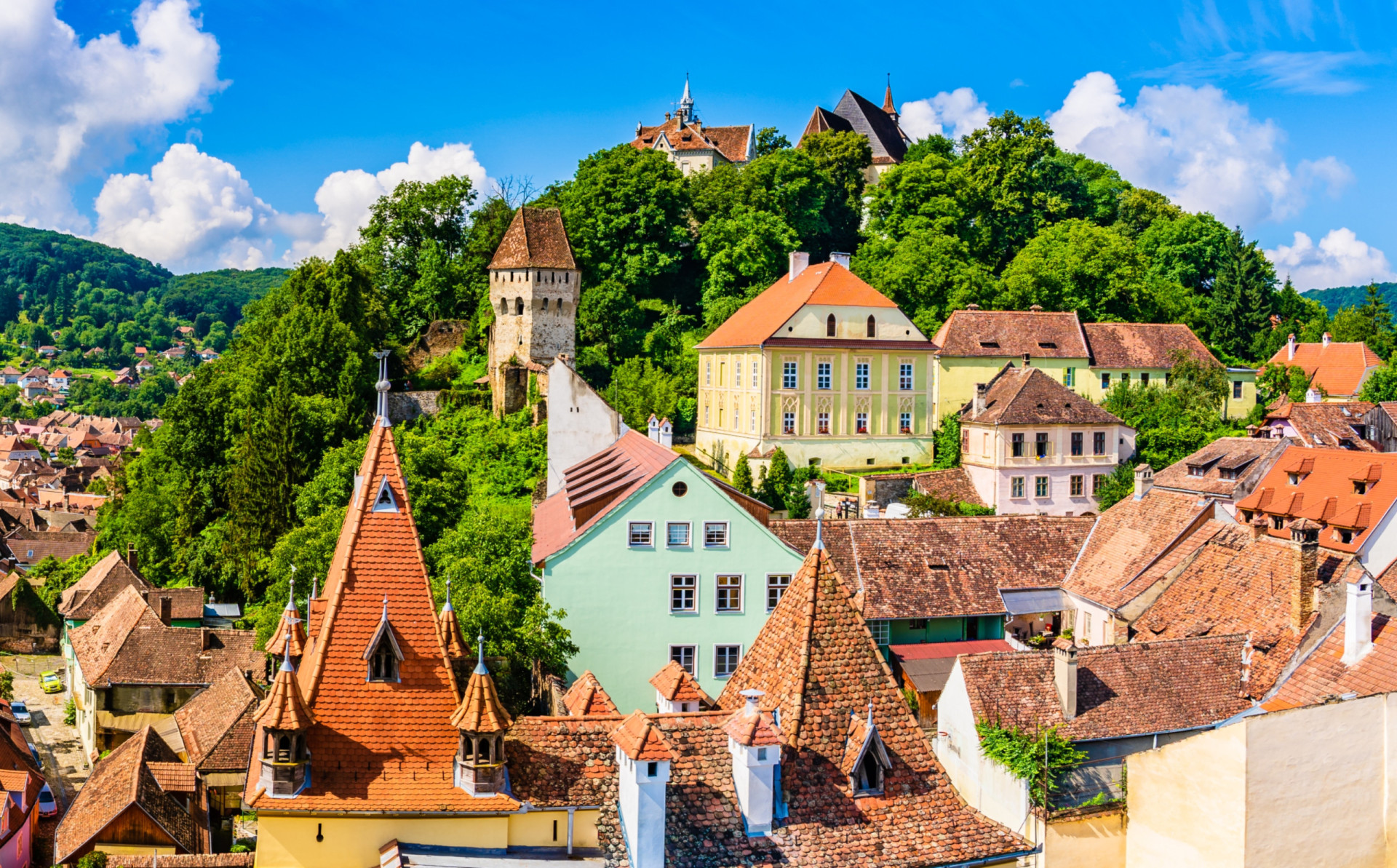
Sighișoara, Roumanie
La vieille ville bien préservée de Sighișoara attire les visiteurs depuis des décennies. Située en Transylvanie, Sighișoara regorge d'architecture médiévale , dont une grande partie peut être admirée en grimpant la colline vers la tour de l'horloge.
Tu pourrais aussi aimer: Connaissez-vous l'histoire de la flamme olympique?
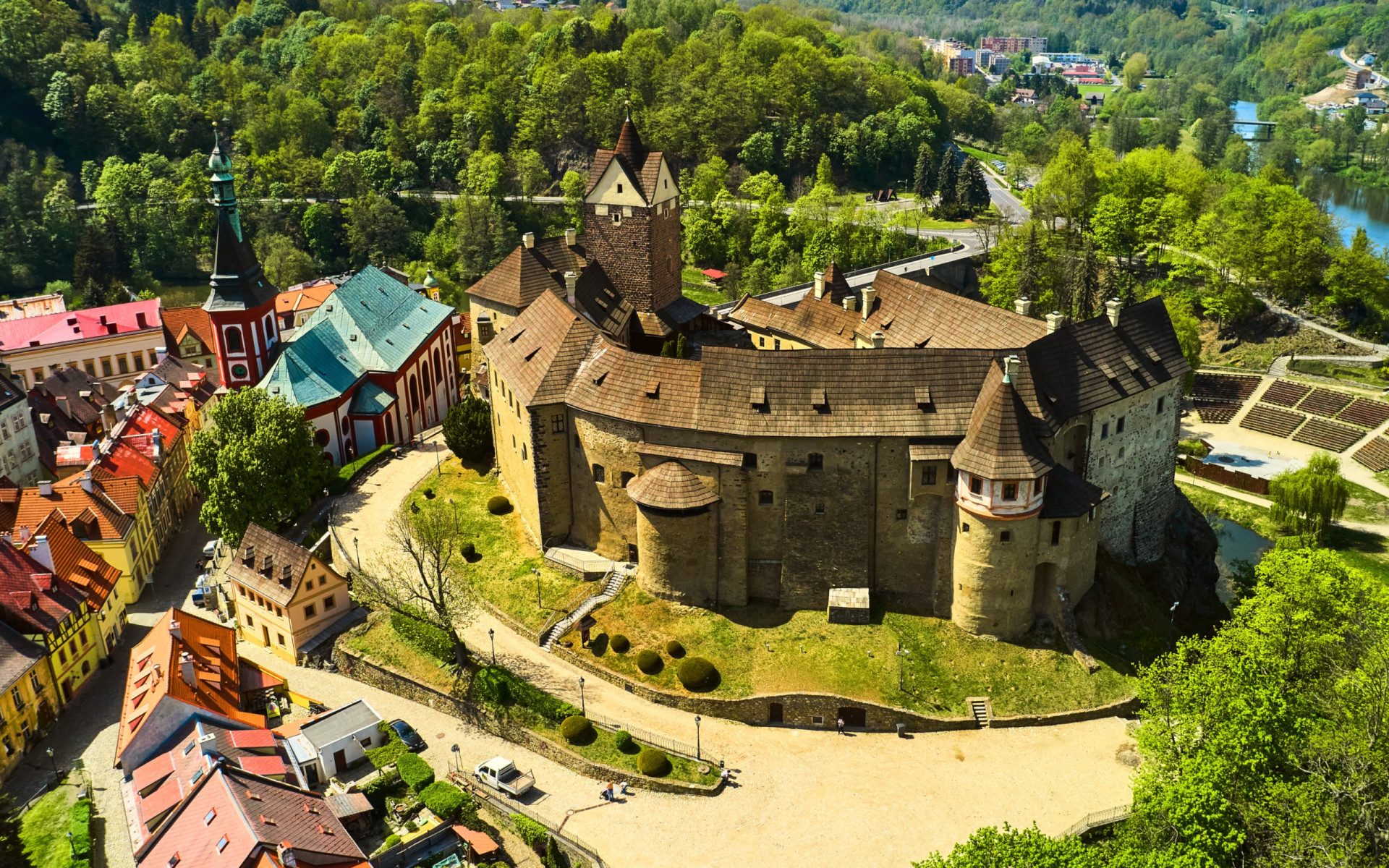
Loket, République Tchèque

Smartno, Slovénie
Smartno, dans la région slovène de Gorska Brda, est célèbre pour son vin. Le village, qui surplombe la colline de Nanos à l'est et les Alpes de Carnija au nord-ouest, est également connu pour la production d'excellents fruits, en particulier les cerises.
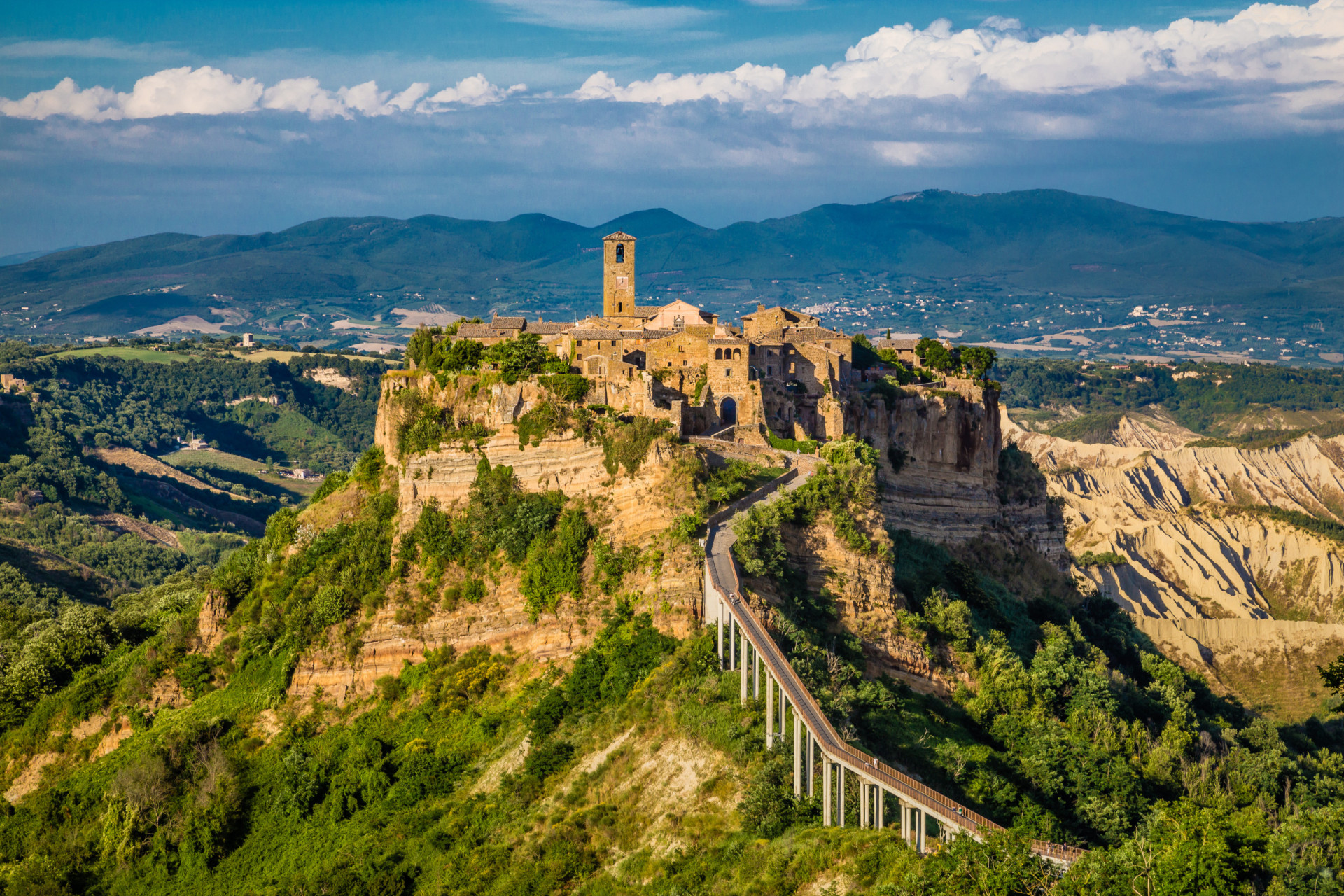
Civita di Bagnoregio, Italie
Accessible par une passerelle depuis le village voisin, Civita di Bagnoregio est célèbre sous le nom de "ville mourante", car le plateau sur lequel se dresse ce charmant petit village s'effrite lentement. Il faut s'y rendre avant qu'elle ne disparaisse !
Sources : (Heritage Europe) (UNESCO) (European Walled Towns)
Voir aussi : Œnotourisme: les plus belles routes vinicoles du monde
More for You
Deux F/A-18 interceptent un avion de ligne
L'Ukraine fait peur : "l'attaque la plus tragique pour la Russie"
En images : Dubaï inondé après des pluies historiques
Des milliers de personnes: La Grève du climat descend dans les rues
Ces enfants sont les plus riches du monde
Une victime collatérale de 14 ans décède d’un malaise cardiaque
Les plus grandes voitures n'ont été construites qu'une seule fois
Tendance mode printemps 2024 : Voici les pièces phares à ne pas manquer cette saison !
Le FMI approuve le rapport «too big to fail» du Conseil fédéral
Permaculture : 5 astuces pour optimiser son potager
Pas si neutres que ça: Des «jurés espions» vont-ils saboter le procès de Trump?
L'histoire vraie derrière cette série Netflix angoissante
Le volcan Ruang de nouveau en éruption
EL - Stroll le plus rapide, Ferrari et Mercedes se cachent
Patrouille des Glaciers: les chiffres à connaître
Adidas juge inexplicable l'argent promis par Nike pour l'Allemagne
Une aide de 61 milliards de dollars: Pourquoi Trump veut-il soudainement sauver l'Ukraine?
Nestlé répond aux actionnaires au sujet des aliments sains
Danger dans les Alpes: «de telles quantités de neige sont inédites»
New York paralysée : la foudre s'abat sur la Statue de la Liberté!

IMAGES
COMMENTS
Les Baux is a spectacular rock plateau 250m up in the sky with views south over the Alpilles, and to Arles and the Camargue. It has such a superb defensive, dominant position that there are traces of habitation going back to 6000 BC. Les Baux-de-Provence. AN IMPREGNABLE STRONGHOLD. But things really got exciting at Les Baux in the middle ages ...
Prepare your visit. Getting Here; Accommodation and Restaurants; Groups and professionals; Your events; Château des Baux-de-Provence; ... Tourist Office. Maison du Roy, Rue Porte Mage, 13520 Les Baux-de-Provence Tél. +33 (0)4 90 54 34 39. [email protected]. Read more. Opening hours Monday to Friday: 9.30 am to 5.00 pm Weekends ...
Prepare your visit. Getting Here; Accommodation and Restaurants; Groups and professionals; Your events; Château des Baux-de-Provence; Discover Les Baux; Activities; Prepare your visit; ... 13520 Les Baux-de-Provence Tél. +33 (0)4 90 54 34 39. [email protected]. Read more. Opening hours Monday to Friday: 9.30 am to 5.00 pm
Visit Les Baux-de-Provence at any time of year and discover the changing palette of light and colours of the Alpilles landscape. At Les Baux-de-Provence you can explore history dating back thousands of years, age-old traditions and the Provençal way of life with its tastes and flavours.Enjoy your visit!
Les Baux-de-Provence, a picturesque village in French Provence, is a must-see destination for travelers seeking a blend of history, culture and natural beauty.This comprehensive travel guide provides an itinerary to make the most of your experience in Les Baux-de-Provence and your visit to this charming medieval town.
13520 Les Baux-de-Provence Tél. +33 (0)4 90 54 34 39 [email protected]. En savoir plus. Horaires d'ouverture Lundi au vendredi : 9h30 à 17h Weekends et jours fériés : 10h à 17h30 Fermeture : 25 décembre et 1 janvier. Téléchargements. newsletter.
By bus. Plan your trip online with Zou ! Or call +33 (0)809 400 013 (price of a local call). Les Baux-de-Provence is served by line 57 during the summer period only. - Line 707 Eté: 8 July to 31 August 2023 → Avignon - Saint-Rémy - Les Baux - Arles. Nearest bus stops to Les Baux-de-Provence - ZOU network. Regular lines - all ...
Château des Baux-de-Provence. Standing on a spur of rock in the heart of the Alpilles, the Château des Baux covers an area of 5 hectares and is one of the most majestic natural and historic sites. A listed Historic Monument, the Castle offers a breathtaking panorama over Provence, from Aix to Arles and beyond. Learn more.
The castle of Les Baux-de-Provence. Built on top of cliffs, the castle was one of the most powerful fortresses in Provence in the Middle Ages. The visit allows you to discover the impressive ruins. A path has been laid out to safely climb the remains of the 13th century keep, and enjoy a 360 degree view of the Alpilles countryside.
Prepare your visit. Whether you're a fan of history and heritage, the arts or nature, you'll certainly find what you're looking for in the wide range of activities on offer in Les Baux-de-Provence and its surrounding area. Below is some practical information on making the most of your stay in Les Baux-de-Provence.
The Cháteau at Les Baux de Provence is a great day experience. The ruins are beautiful, the views for the mountains unbelievable and the curation of the sites is well done (and in English too!). The area around the Château is expansive and while level, there is a lot of loose rock, so you need closed-toe shoes and watch your step!
Les Baux-de-Provence is a village 20 kilometres south of Avignon in Provence and within the Regional Natural Park of the Alpilles. Said to be the most visited village in France, apparently two million visitors a year crowd on to the streets of Baux-de-Provence. It is listed among the ' most beautiful villages of France ', which will come as no ...
The ruins have seen the passing of several civilizations and you can visit the "Grands Thermes", the long residential avenue, the temple and the natural spring of a true gallo-roman city, dating from 30 to 10 years before Christ. ... Luxury Villa Rentals in Les Baux de Provence, France. As the luxury property rental market has exploded ...
During this period, life was good in Les Baux-de-Provence until the land was put under royal tutelage when Provence was attached to the Kingdom of France in 1486. ... Prepare your visit. The Château des Baux-de-Provence is open 365 days a year. The schedule varies according to the seasons: January to February: 10:00 a.m. to 5:00 p.m. March: 9: ...
A few minutes drive from Arles is Les Baux-de-Provence. The village that concentrates all the charms of the villages of Provence in one. Narrow streets, terraces, markets, handicrafts, and good weather are synonymous with this medieval village that thousands of tourists visit yearly. Les Baux de Provence is nestled on a rocky plateau with unparalleled...
13520 Les Baux-de-Provence Tél. +33 (0)4 90 54 34 39 [email protected]. En savoir plus. Horaires d'ouverture Lundi au vendredi : 9h30 à 17h Weekends et jours fériés : 10h à 17h30 Fermeture : 25 décembre et 1 janvier. Téléchargements. newsletter.
Baux de Provence boasts three "Vallée des Baux-de-Provence" protected designations of origin, for the broken green olives, the black olives and the olive oil that you can sample if you visit the olive oil mills still in operation. The Alpilles Regional Nature Park has a theme circuit through the olive orchards, "Flânerie entre les Oliviers".
On the outskirts of Les Baux is the unique cultural space of Les Carrieres de Lumieres. A disused quarry, it is now used to show audio-visual art installations, featuring artists such as Monet, Chagall, Renoir and Van Gogh. Check their website to find out the latest exhibitions. The area round Les Baux de Provence is renowned for its olives and ...
Launched in 1995, Appellation d'Origine Contrôlée (AOC) Les Baux de Provence was a bold step for a dozen winemakers. They joined forces in an attempt to carve out a unique identity in the ocean of mediocre (at the time) Provencal wine.
However, if you are trying to reach Les Baux from Avignon, Arles, Saint-Rémy, Montpellier, Nîmes, or Marseille, this opens up more options via public transportation. Drive times to Les Baux by rental car or taxi: Saint Rémy-de-Provence: 20 min. Arles: 30-40 min.
Museums in Les Baux de Provence. 1. Carrieres des Lumieres. the immersive art of the masters inside the caves at Les Baux des Provence was so impressive and beautiful. 2. Musee Yves Brayer. But we were blown away by Brayer's paintings, especially those of the Alpilles and surrounding area. 3. Szczesny Gallery Provence.
Les Baux-de-Provence is one of the most famous French communes. It is located in the Bouches-du-Rhone, Provence, in the south of France.
Red and rosé wines are predominant in Les Baux de Provence. The main red wine grapes are Grenache, Syrah and Mourvèdre and the classic 'Baux' red wine blend is deep red in colour, with notes of blackberries, herbs and violets. The traditional Provençal varieties Carignan and Counoise may constitute up to 30 percent of the blend.
Les bonnes idées de sorties du 107.7 sont là pour vous guider. Ce week-end dans le Sud-Est, vous pourrez vous balader dans l'Égypte Antique avec la toute nouvelle exposition des Carrières de Lumières aux Baux-de-Provence... Direction ensuite la Loire pour une visite de lieux secrets à Montbrison, puis à Carcassonne pour un atelier de calligraphie.
Ils ne sont pas forcément toujours labellisés « plus beaux villages », ni même d'une autre distinction d'ailleurs, mais le fait est que ce sont d'agréables bourgades où s'arrêter lorsqu'on a décidé de se balader en Provence…. Alors, bien sûr quand on évoque la Provence et ses villages, ont pense d'abord aux plus connus que sont les Baux, Gordes, Saint-Paul de Vence ...
Les Baux-de-Provence : une marche pour l'inclusion au cœur des Alpilles. Par La Provence. Publié le 14/04/24 à 09:18 - Mis à jour le 14/04/24 à 09:18.
Les Baux-de-Provence, France. Situé dans les Alpilles, au nord-est d'Arles, Baux-de-Provence se déploie au sommet d'une saillie rocheuse couronnée d'un château en ruine. Ses chalets en pierre ...